Tbilisi
What can be said about a city where Shakespeare’s 1893 edition is sold for one and a half thousand rubles on book stalls?
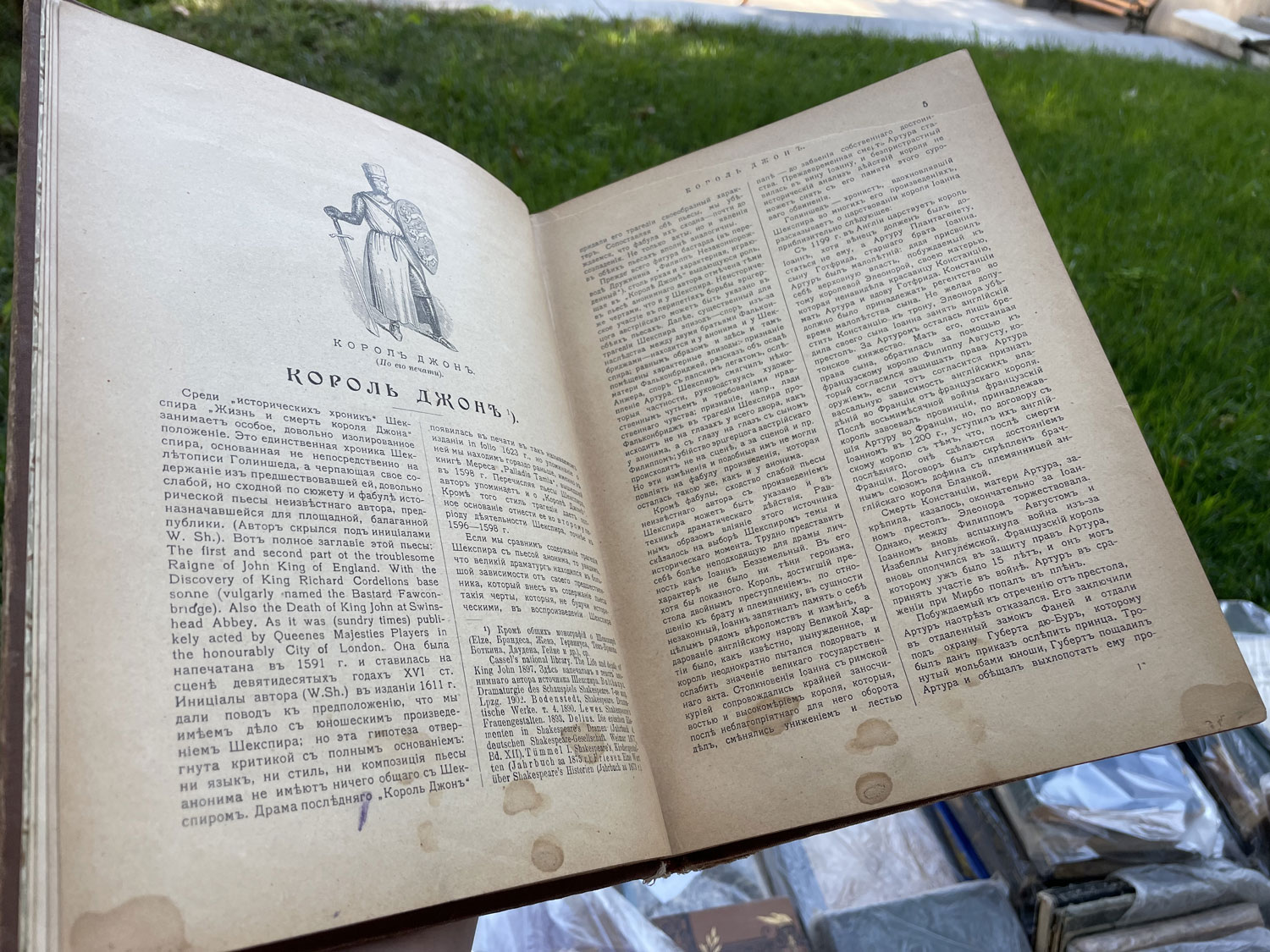
What can be said about a city where in cafes they hand-draw each visitor on a coffee mug?
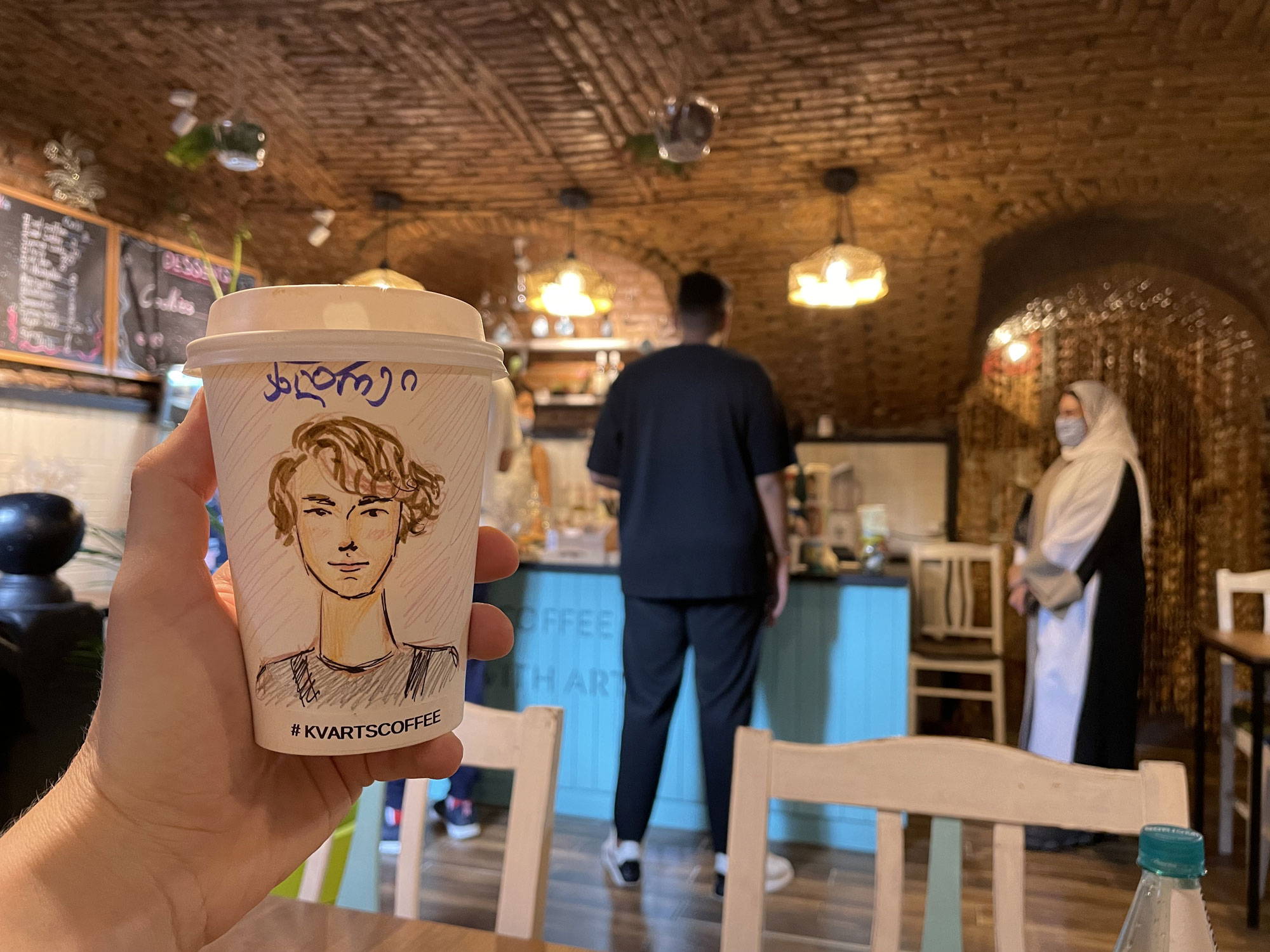
What can be said about a city where quotes from the classics are written on street signs?
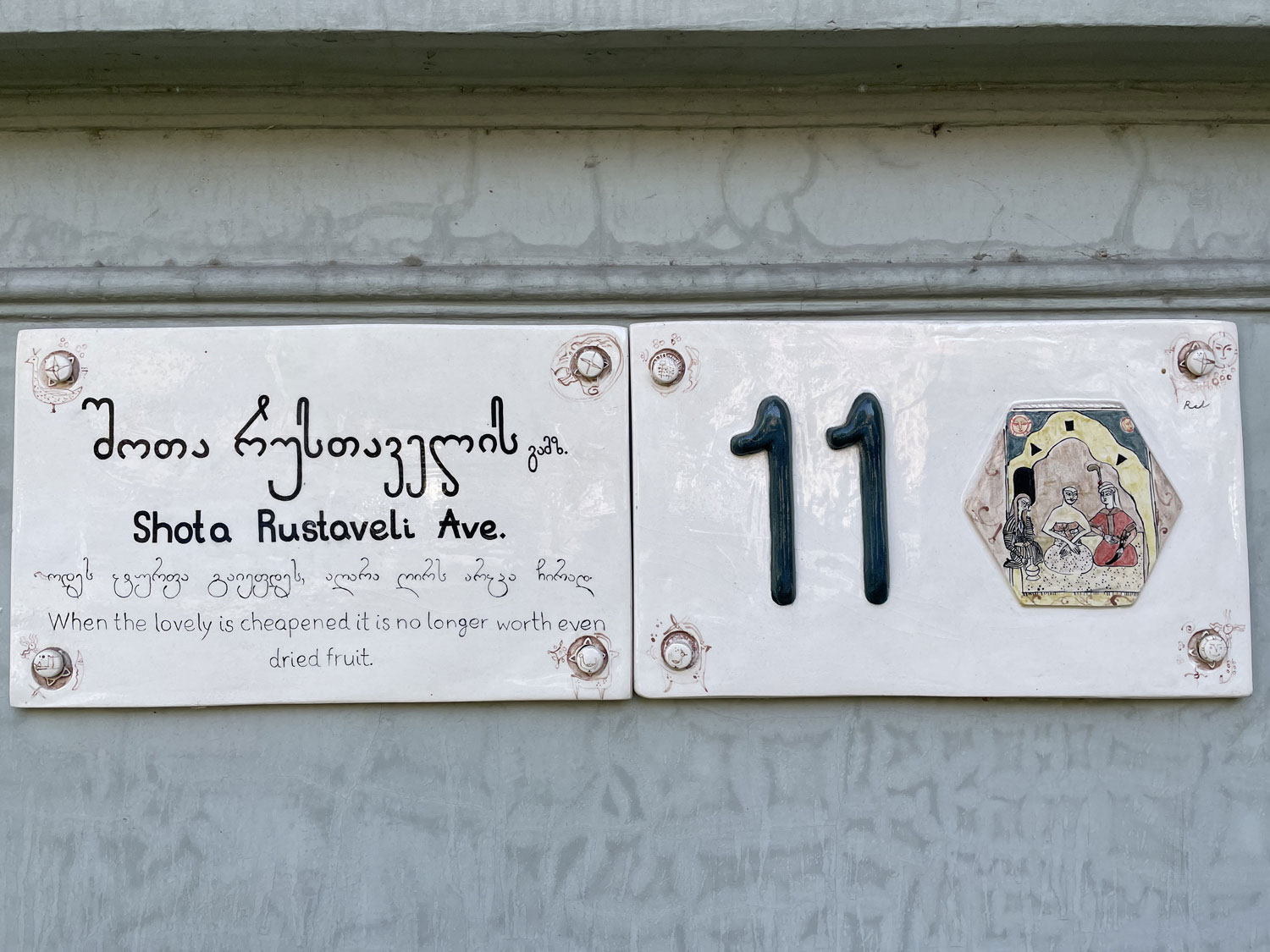
Tbilisi is one of the best cities in the world. Without exaggeration.
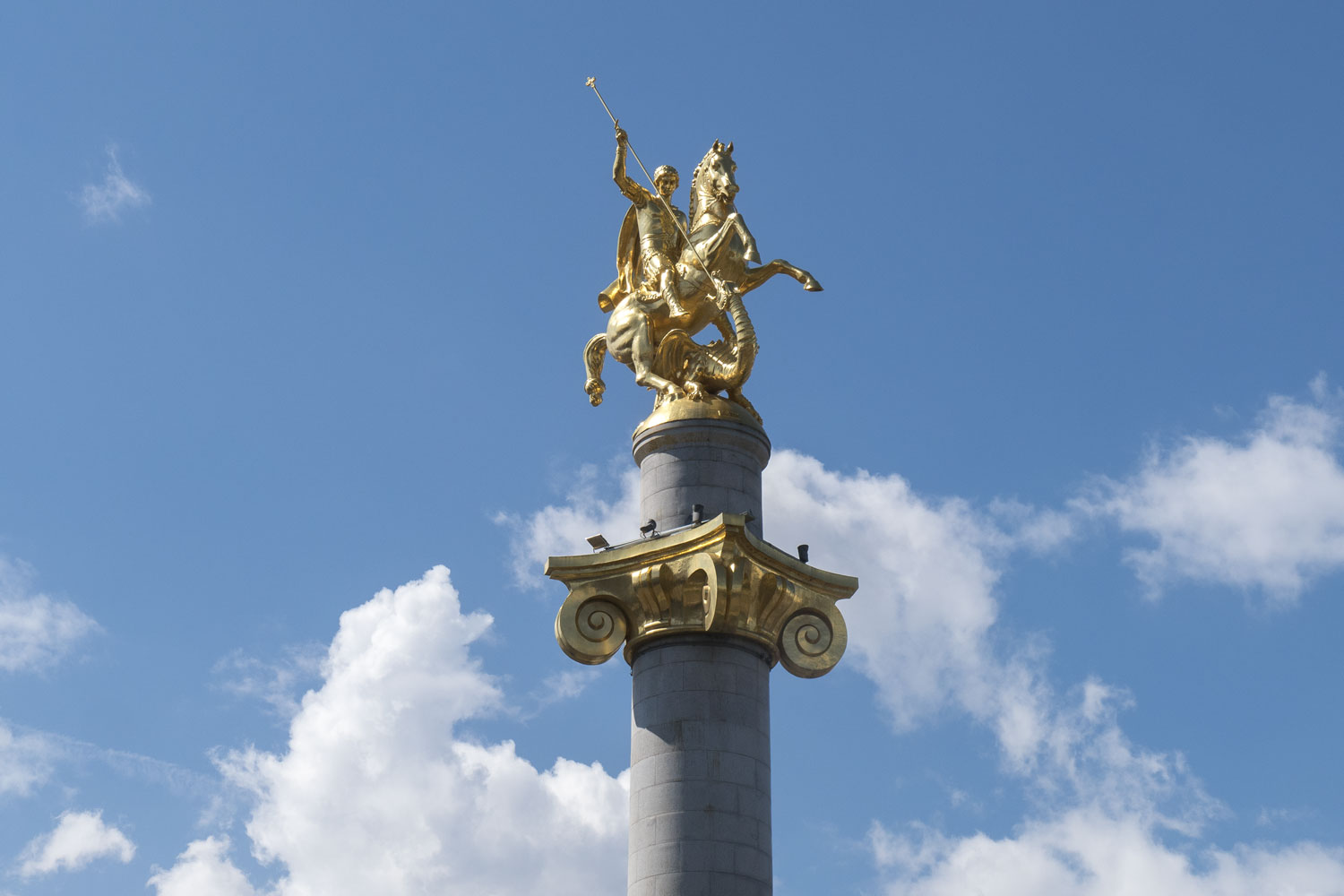
I was praised for Tbilisi for a long time, but I couldn’t understand for a while what could be so unusual about the capital of one of the former Soviet republics.
(I wrote this before the war with Ukraine.)
It turned out that it’s not about architecture, nature, food, or wine at all. The thing was in the atmosphere.
Imagine that all the modern, smart, and free young people left Russia to build their own lunar park with blackjack and hookers. They went to a free city with equally open and free people. That’s how Tbilisi feels like, more or less. Although it was Saakashvili who founded the lunar park, smart and free guys contributed to its economy.
Tbilisi is like a Russian Hong Kong. All the normal guys from mainland China also moved there. Georgia is an island of freedom next to authoritarian Russia. It’s abroad but speaks Russian. Close and understandable to us in spirit and culture. A balm for the soul. A release. A refuge.
Architecture, nature, food, and wine are all present too. But these are just parts of the mechanism, at the core of which lies freedom.
No matter how exquisite the dinner is, it cannot be enjoyed if plates and glasses are passed through a window in a prison door. Nature cannot be appreciated if a concentration camp is located in the Swiss Alps. Architecture cannot comfort prisoners if a pretrial detention center is built in the Art Nouveau style. Freedom is needed.
But what is it? How to show it with a photo? Well, here’s a casino.
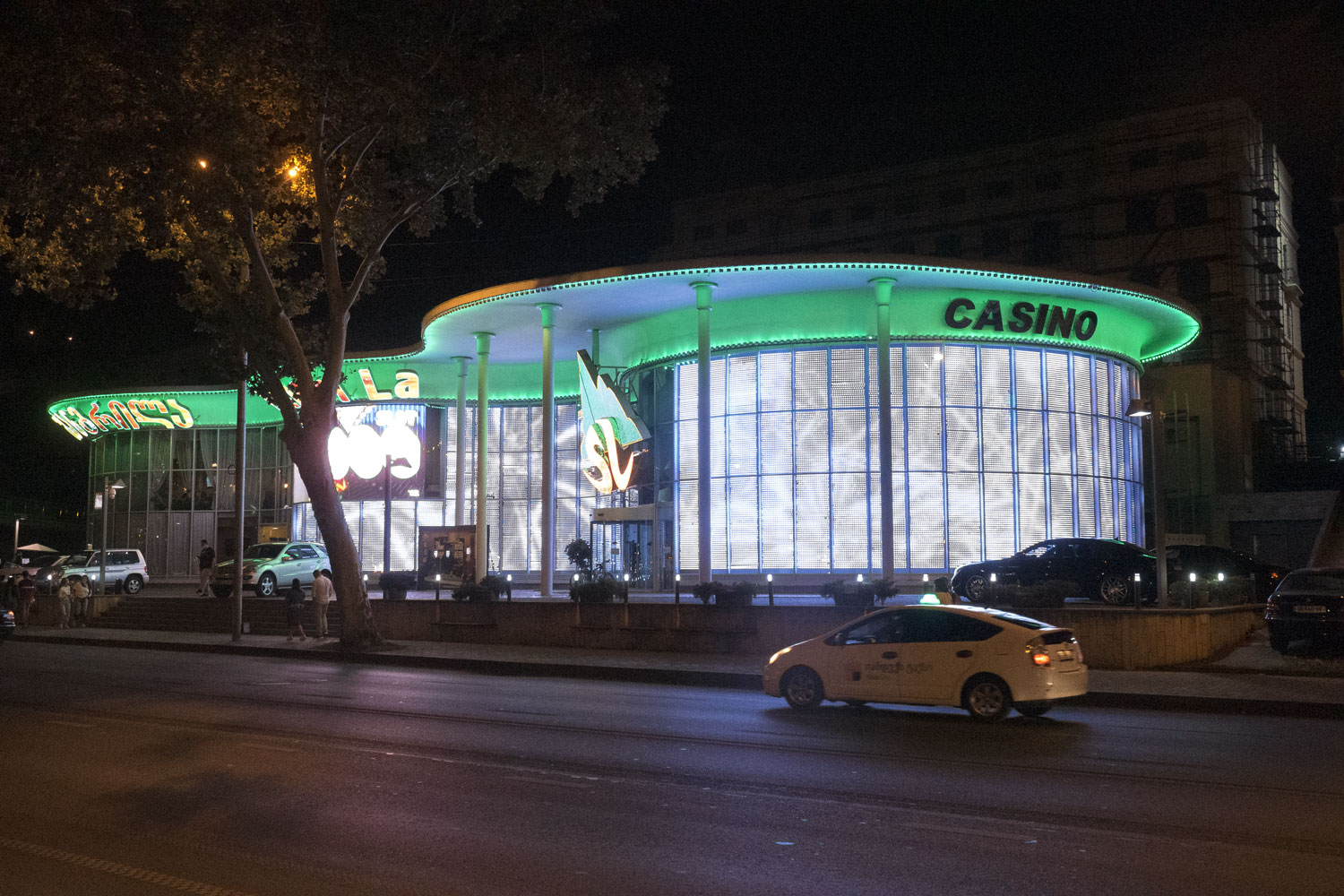
Here is an Bitcoin ATM.
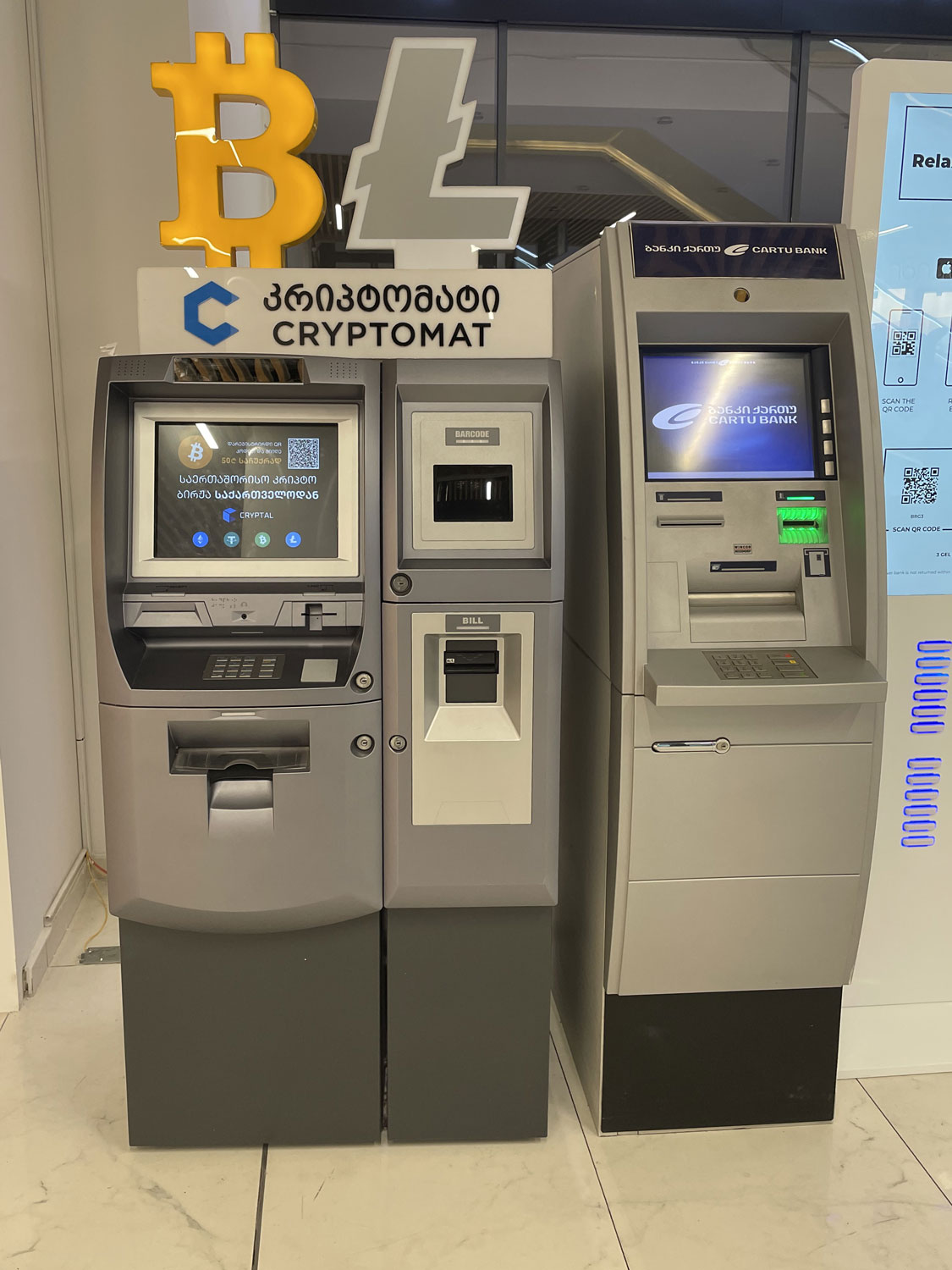
Is it freer now?
Here are abstract photos of people walking light on the street.
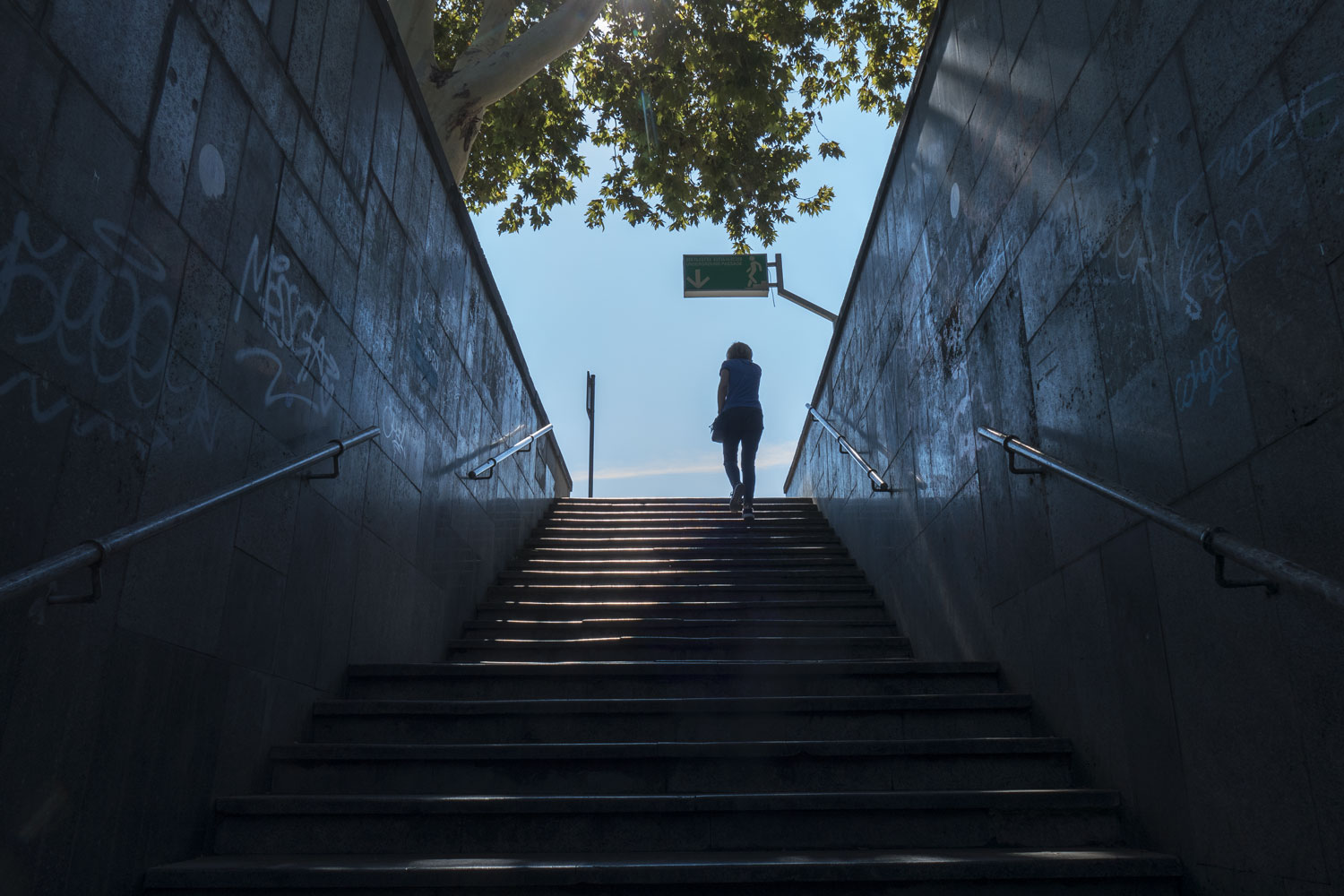
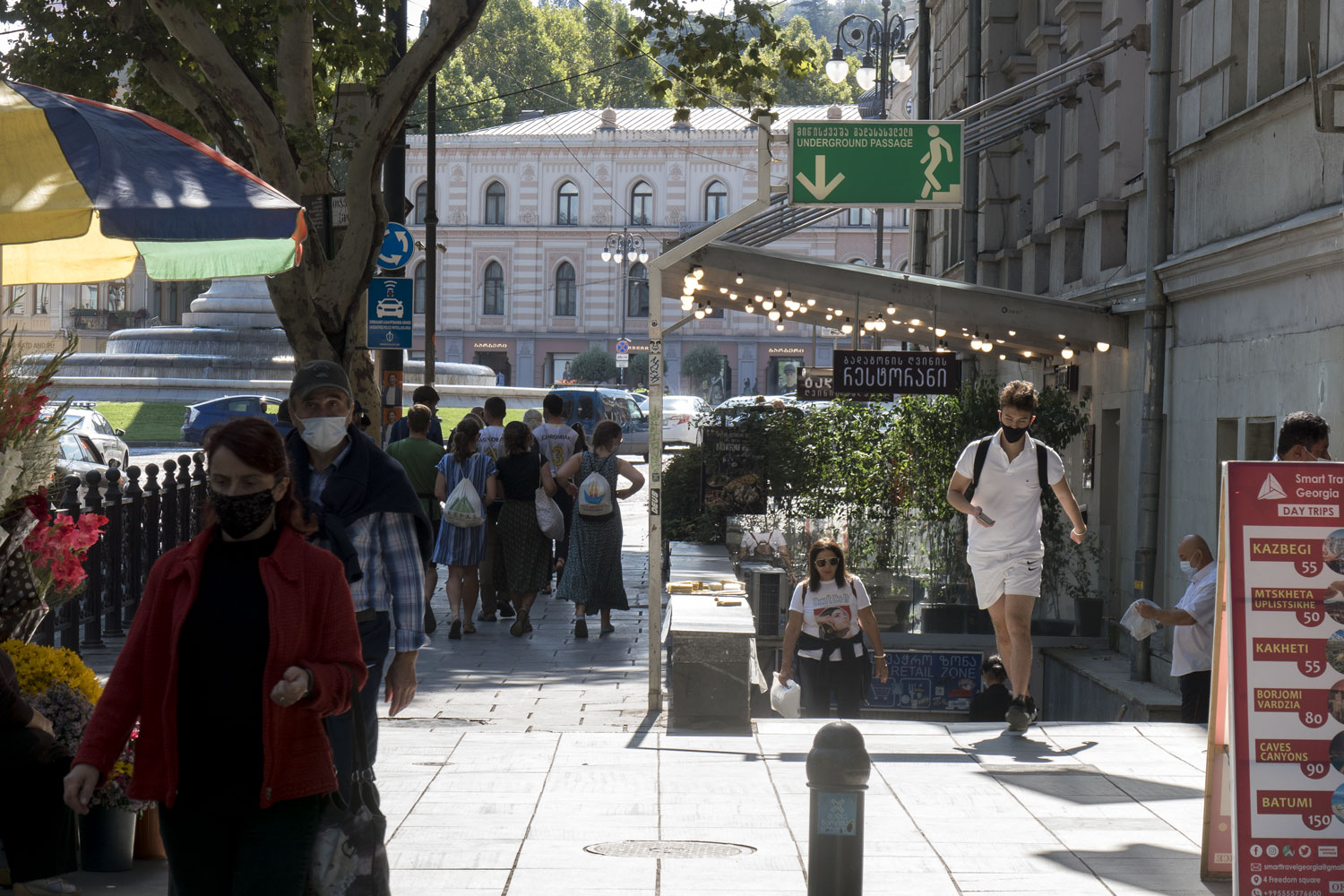
Here is a photo of a rally against coronavirus restrictions. Is this freedom?
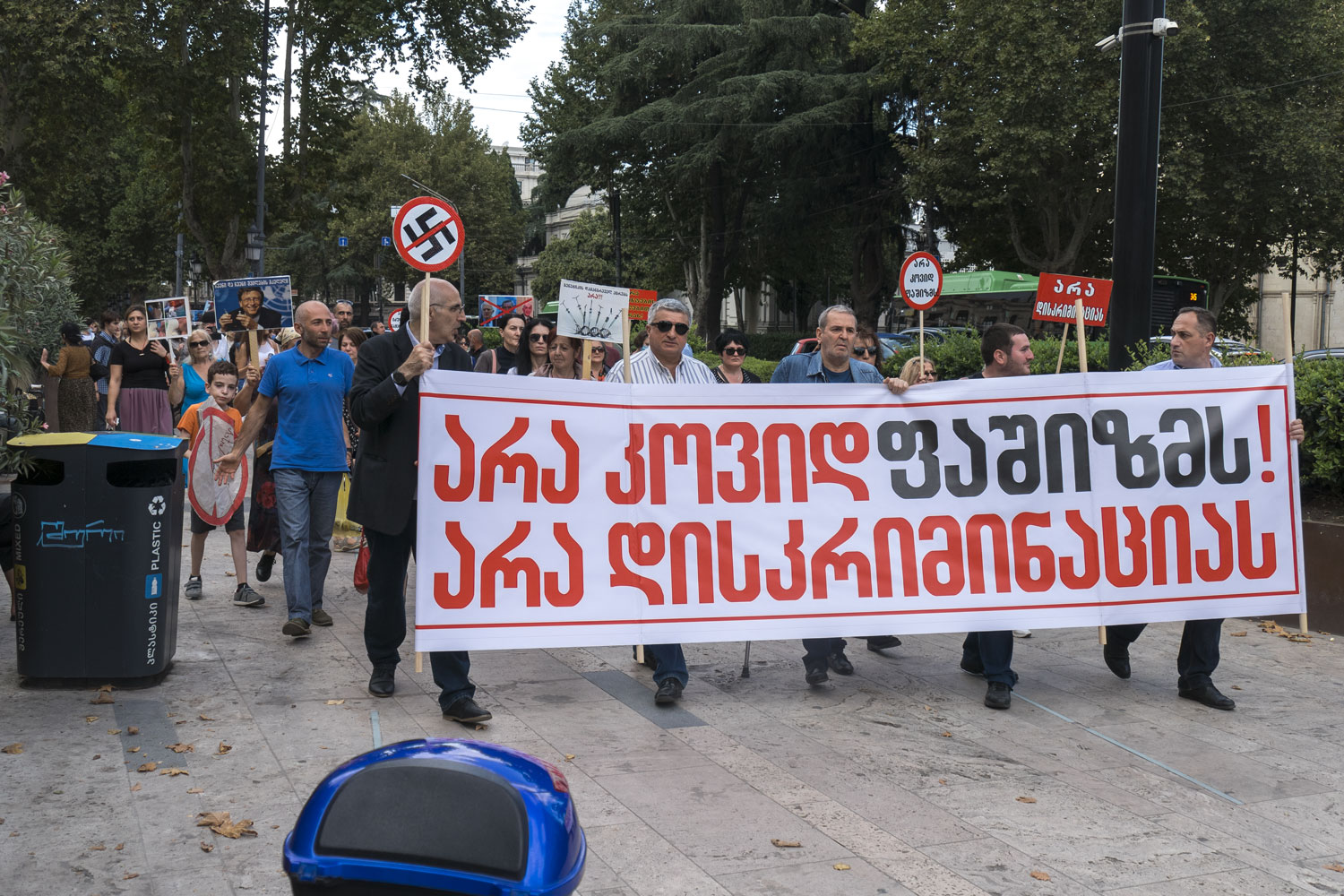
Or is freedom when a homeless person can freely sleep on a bench?
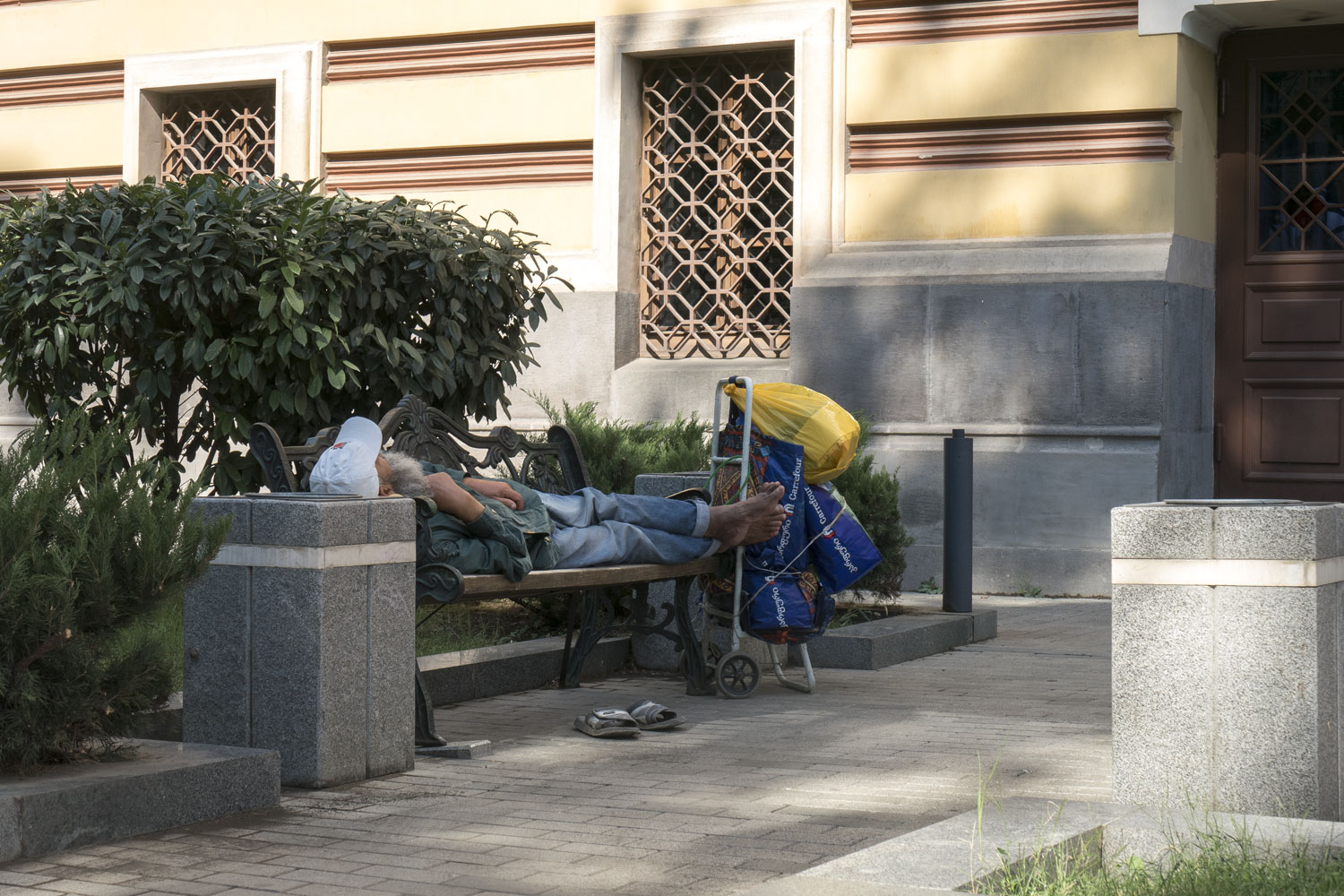
Or maybe when a beggar freely asks for alms in the city center?
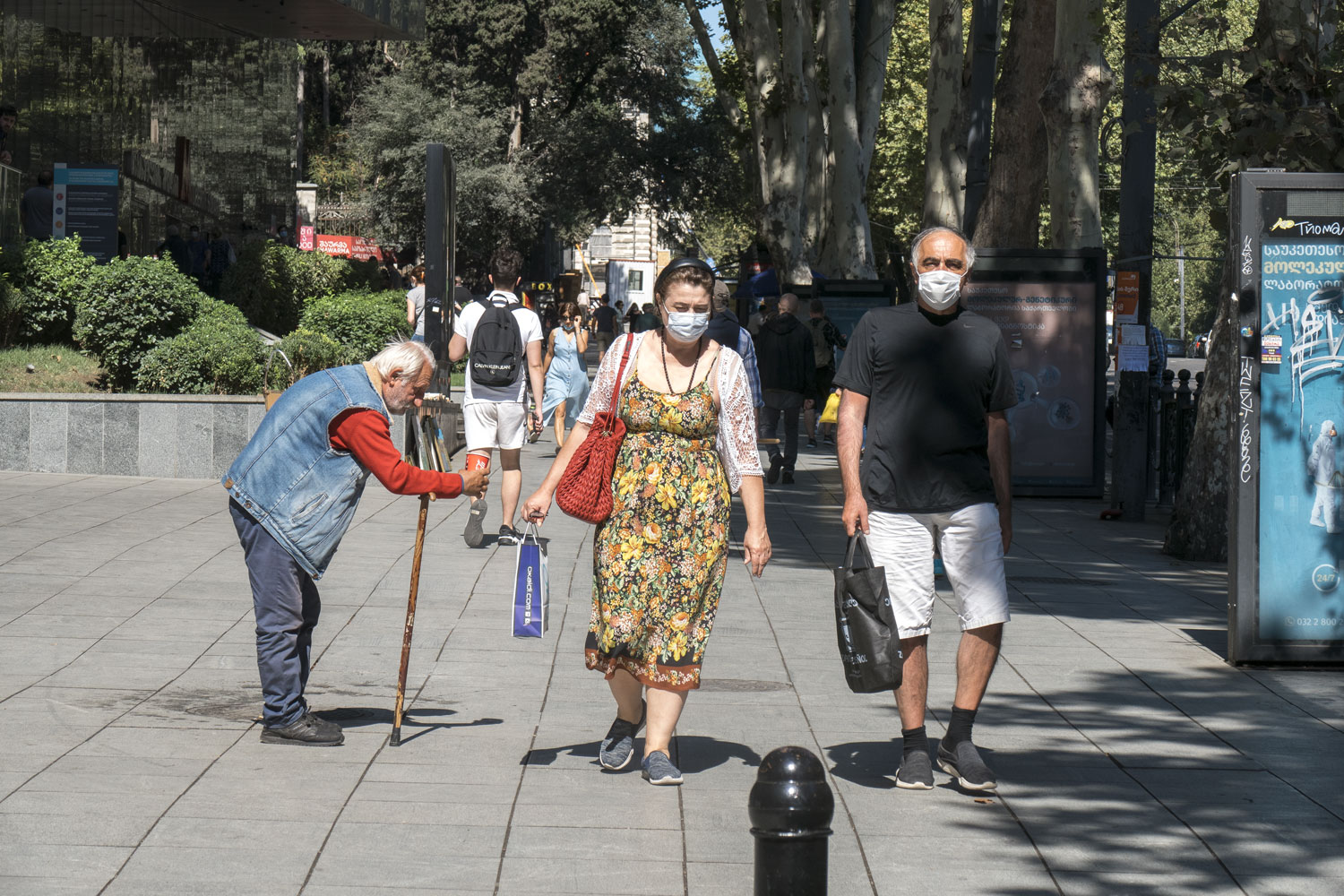
Or is freedom the spontaneous currency exchangers and piss—soaked underground passages, painted with graffiti?
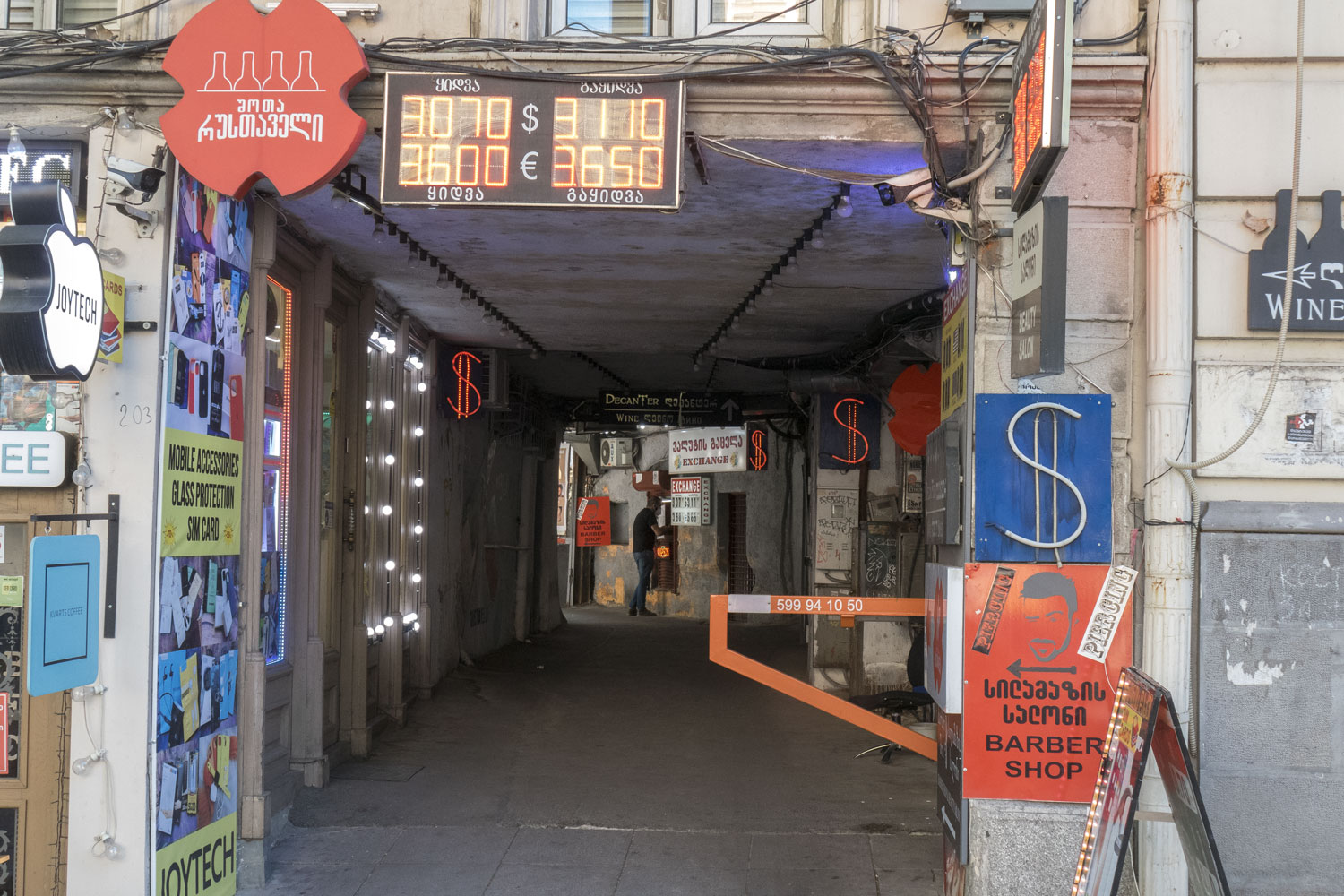
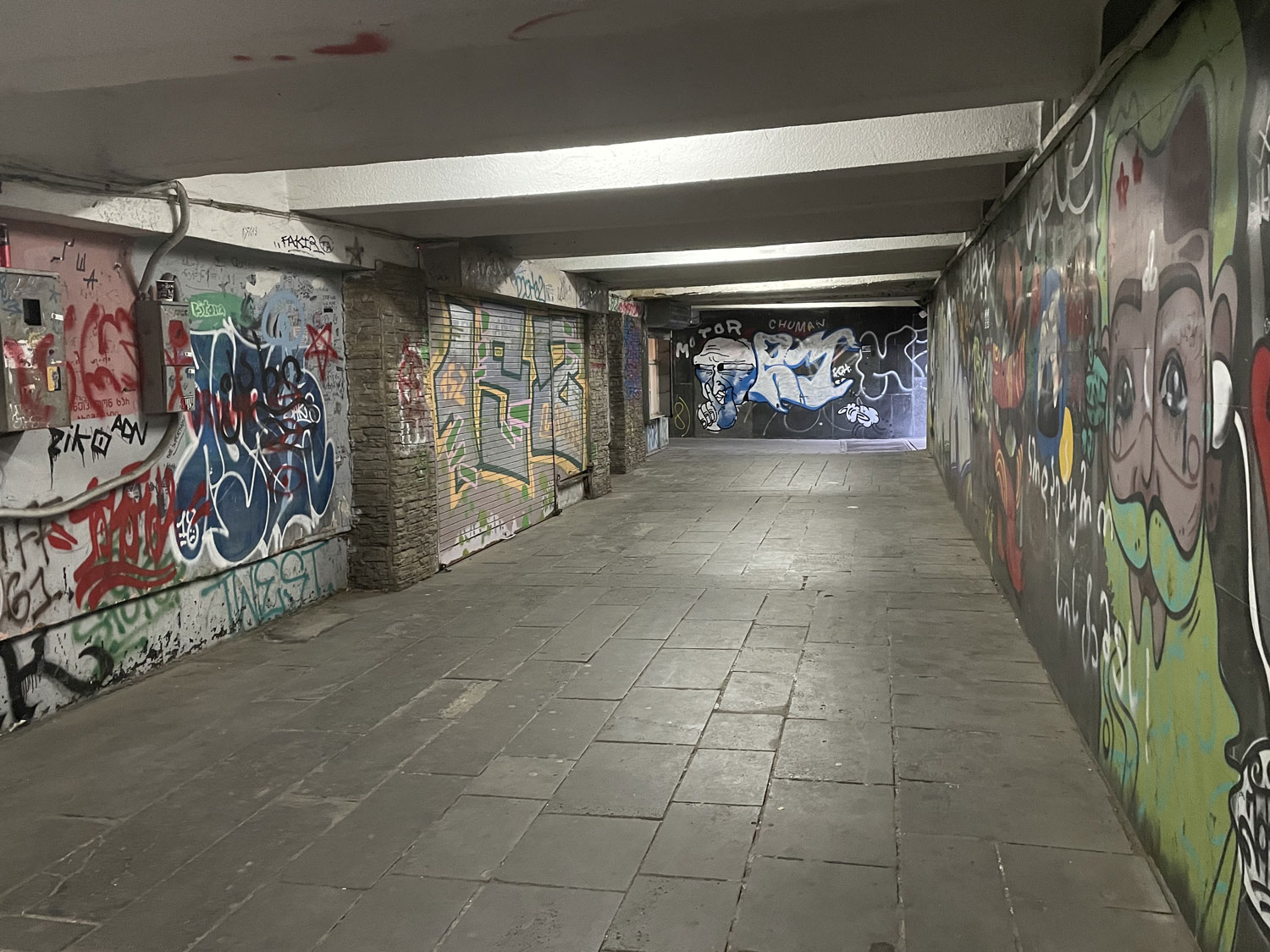
All of the above.
Freedom is always a degree of disorder. Just as culture is unthinkable without subculture, freedom of assembly is unthinkable without the freedom to draw a transition. Do you support the ban on begging? Wait — and you will be banned from going out against the war.
Fortunately, Georgia understood this concept quickly, which is why they renamed Lenin Square to Freedom Square a year before the collapse of the Soviet Union.
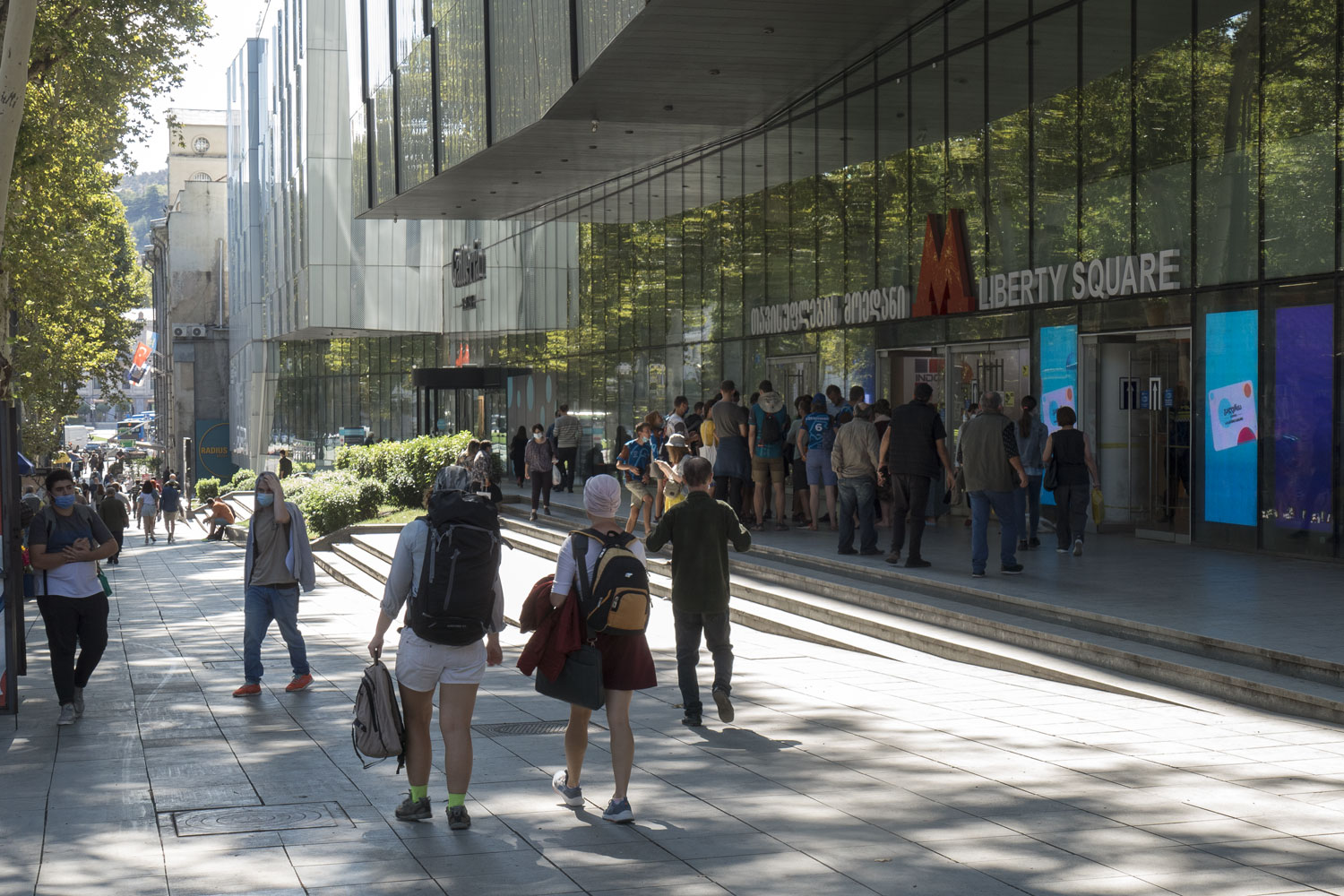
From the bas-relief of the parliament building, they carefully removed the hammer and sickle, but left everything else: the planet, wheat, star, and ribbons.
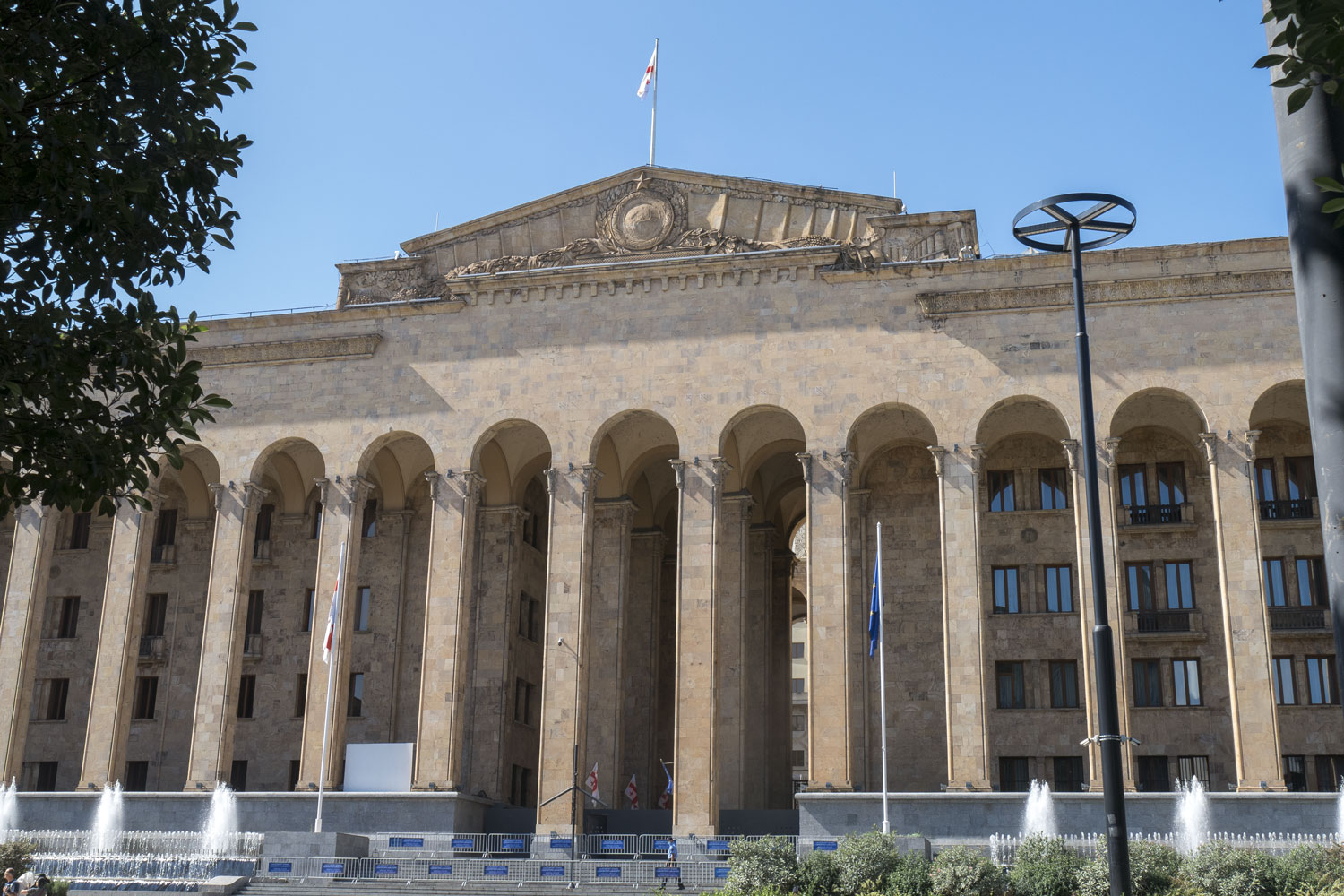
The monument to the victims of April 9 is located near the Parliament building.
In the late 1980s, when the USSR was already on the brink of collapse, conflicts broke out one after another in the Caucasus. This time, Abkhazia, which had been incorporated into the Georgian SSR in 1921, decided to declare independence from Georgia. This led to interethnic clashes. Disorder broke out in the country, leading to the deaths of dozens of people and thousands of casualties.
To disperse rallies and suppress the conflict, the USSR called on internal troops and the army. The rally in Tbilisi was harshly dispersed on April 9, 1989. During the dispersal, 21 people were killed and 290 were injured. A 40-day mourning was declared in the country, and a state of emergency was declared; the government of Georgia resigned.
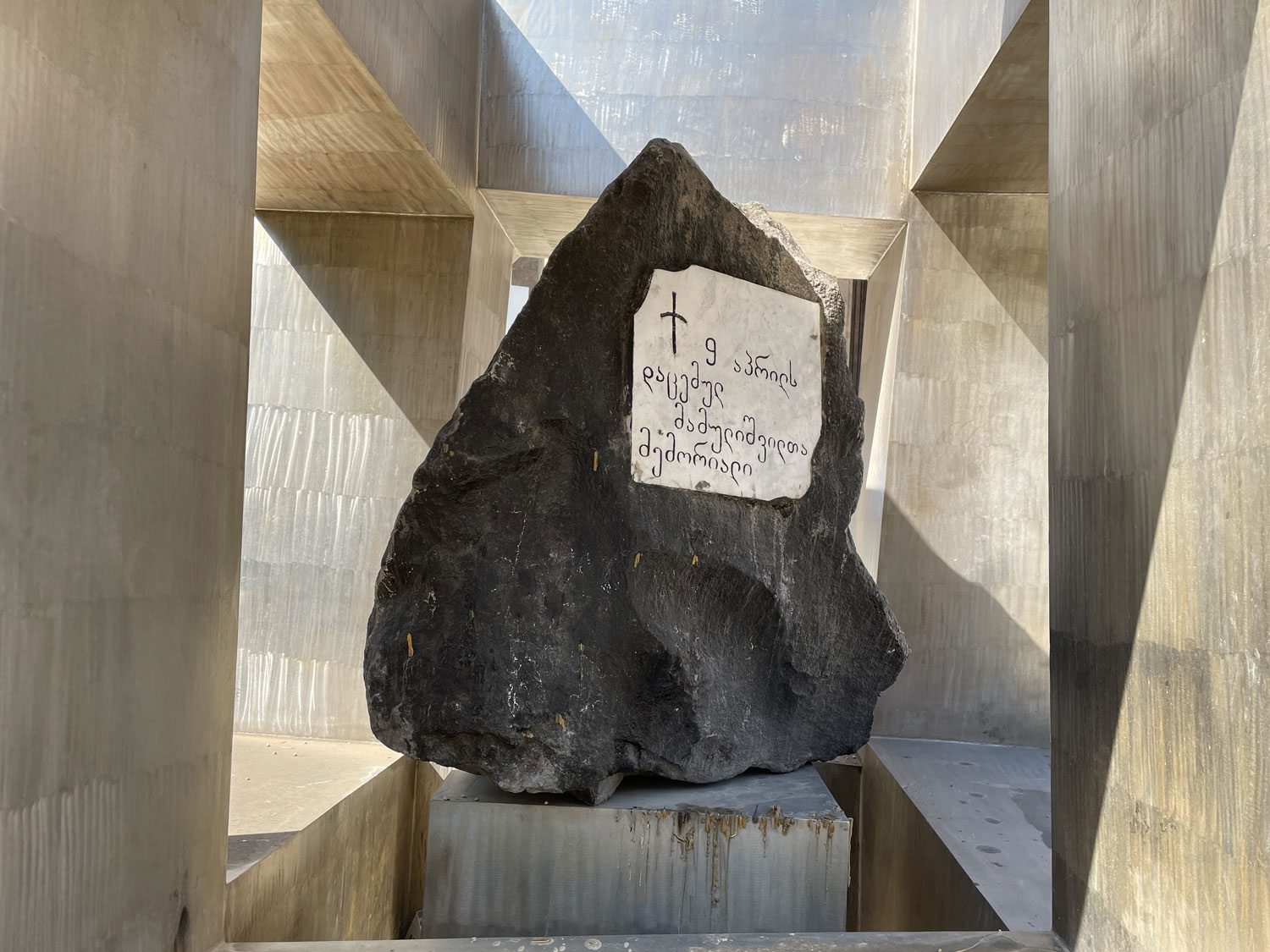
The Georgian-Abkhazian conflict did not subside but flared up again and again until 2008, when with the support of Russia, Abkhazia and South Ossetia did not leave Georgia’s composition.
Currently, the independence of these territories is not recognized by anyone except for a few countries like Nicaragua and Syria. Georgia believes that the territories are under Russian occupation.
This does not remind much of it in Tbilisi, and the attitude towards Russians is good. Only a bag was found with a call to stop the occupation and a sticker with Putin on which one needs to wipe their feet.
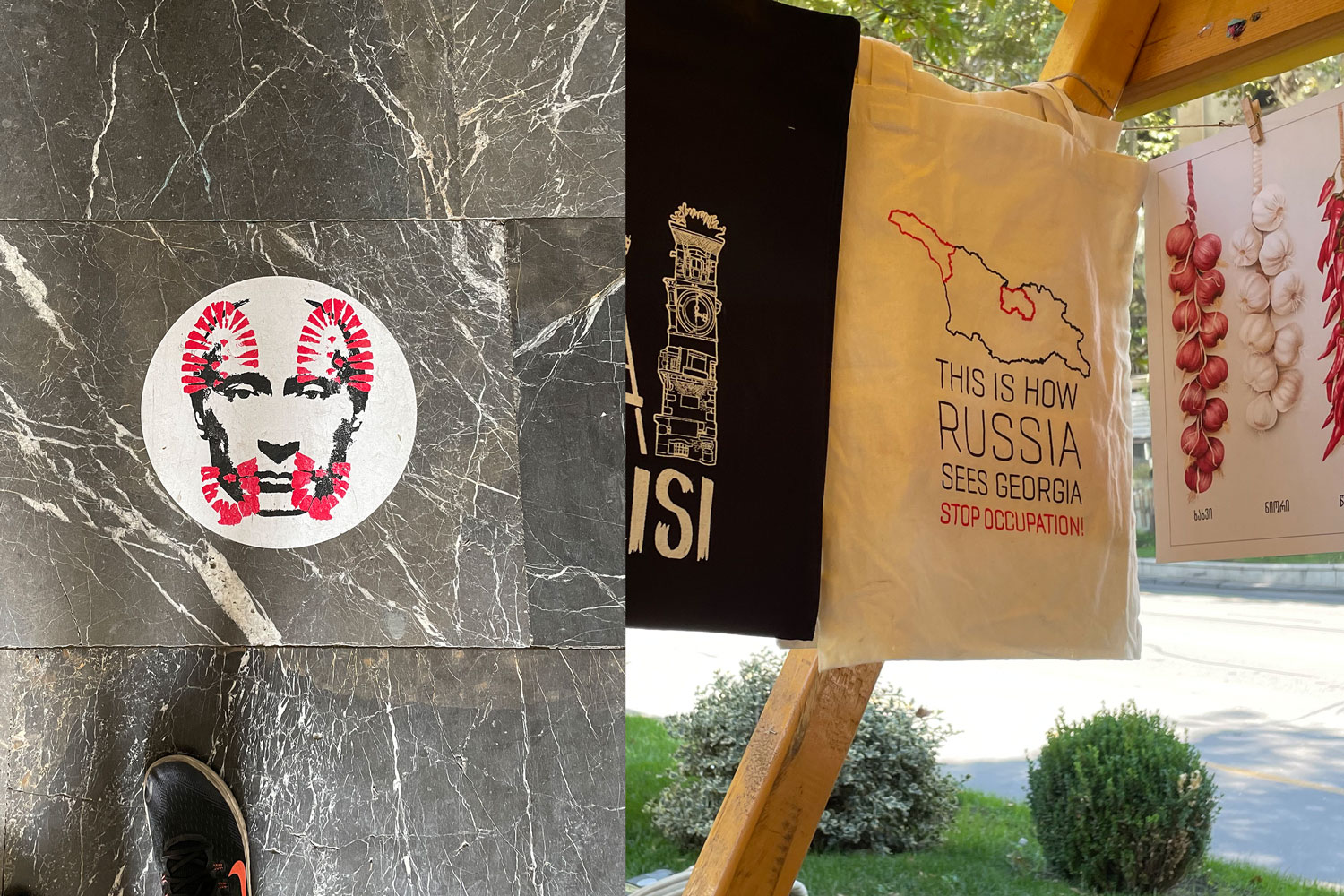
The architecture of Tbilisi is beautiful. You can find all kinds of houses here. It’s difficult to determine the architectural style of these buildings as they are mixed with a variety of styles.
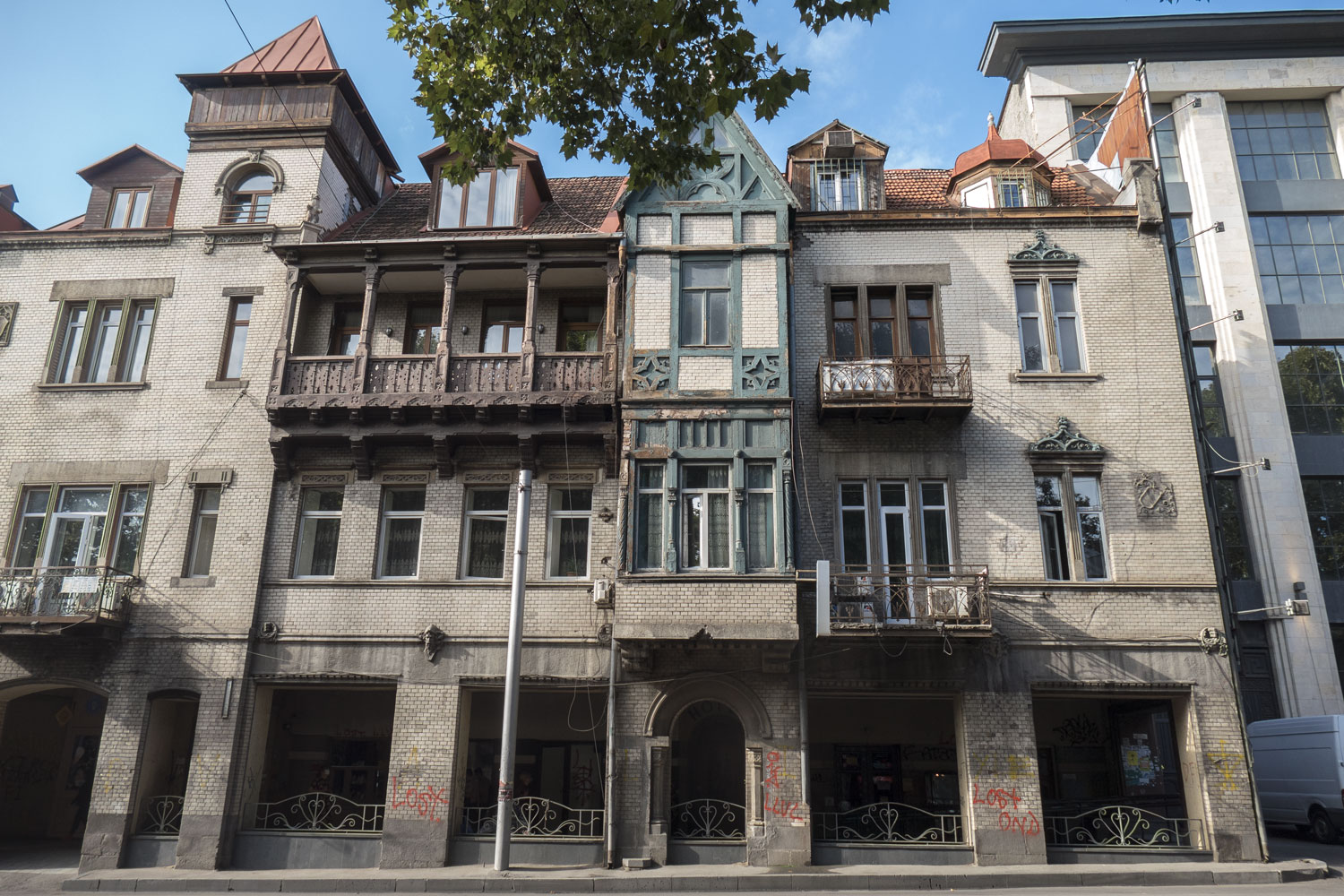
A carved wooden hotel perched on an old fortress wall.
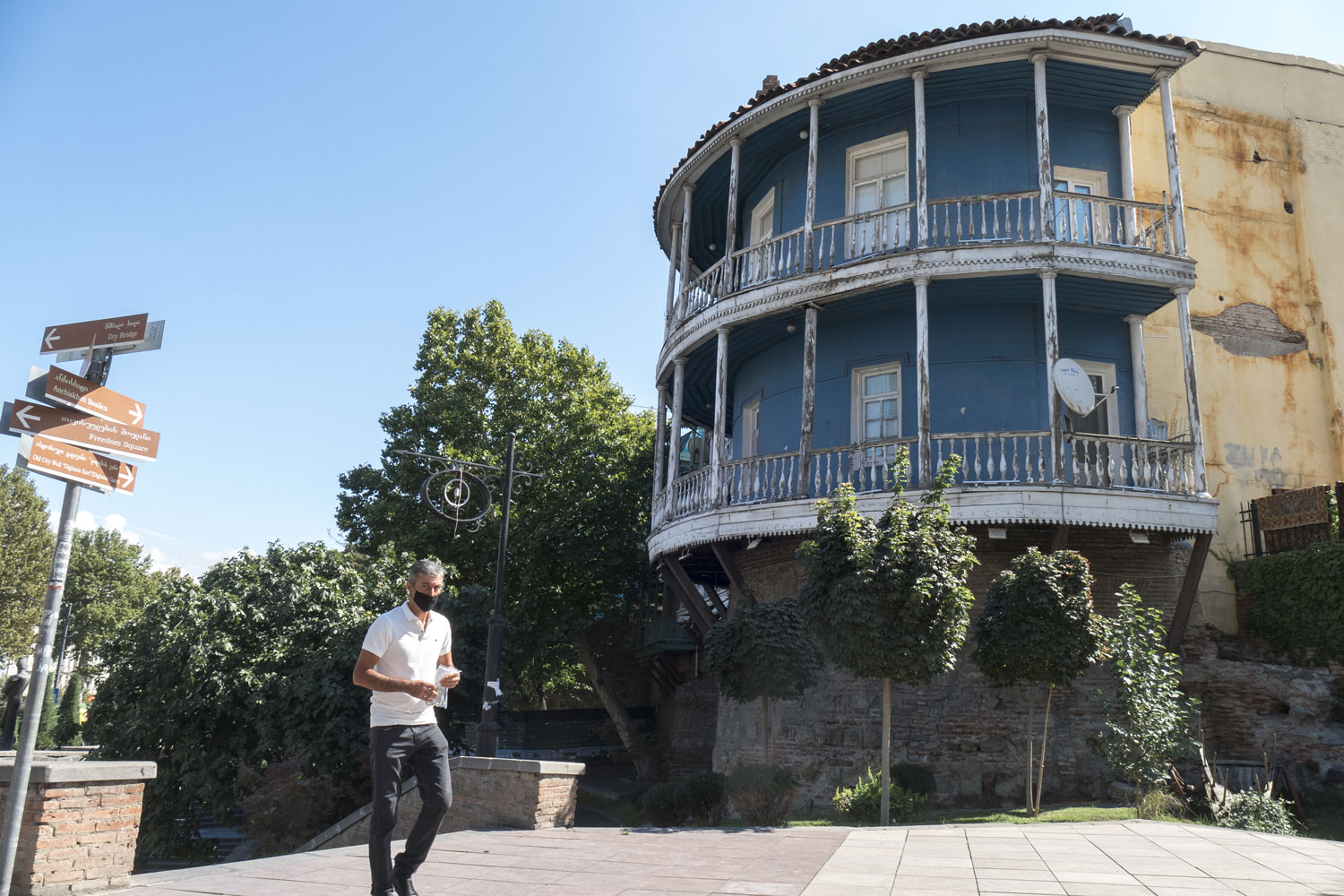
An absolutely stunning opera and ballet theater. Built in 1896, it’s in Moorish style.
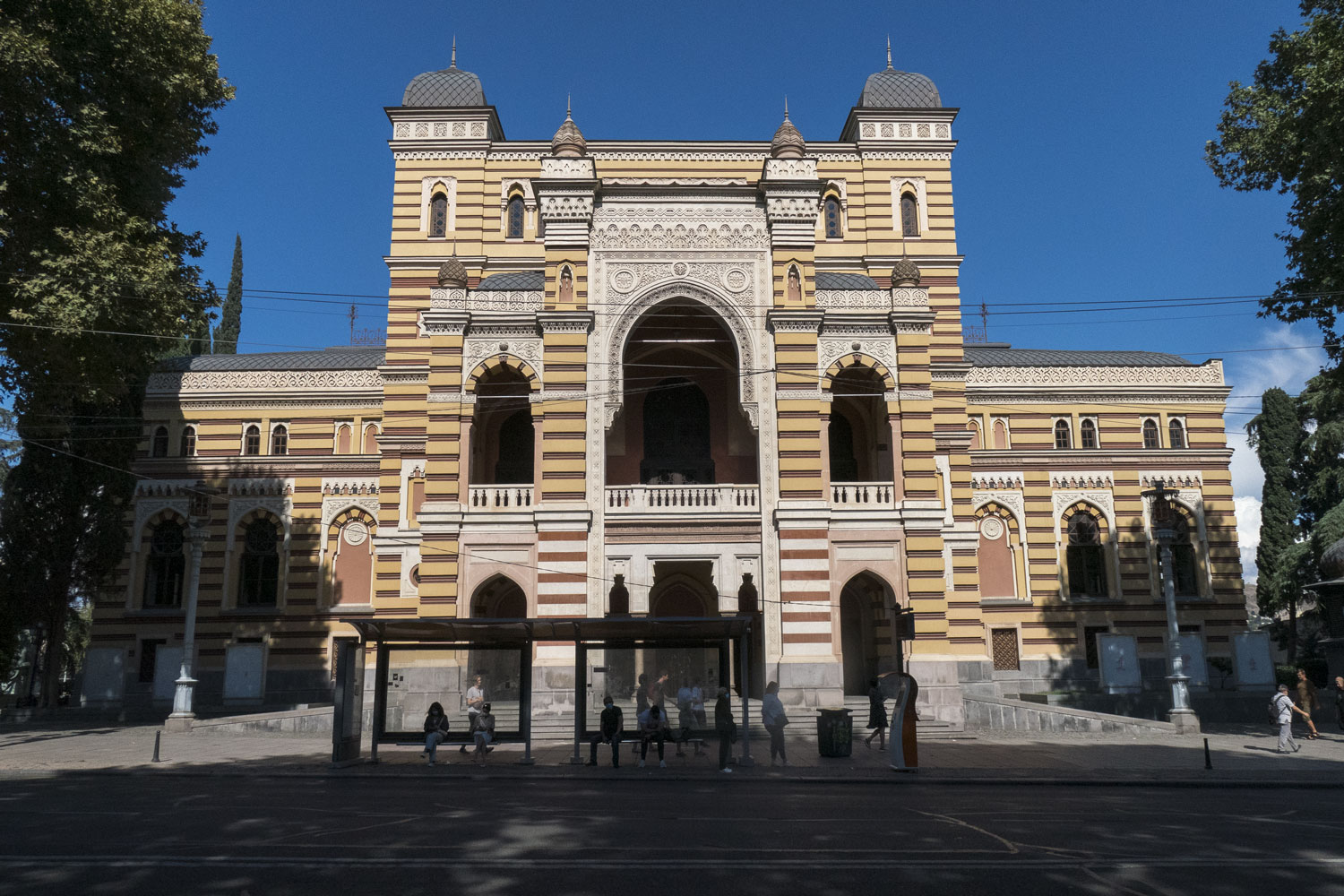
The building fits Tbilisi much better than the Morozov Mansion in the same style fits Moscow. After all, Georgia has a warm climate and palm trees with cypresses grow here.
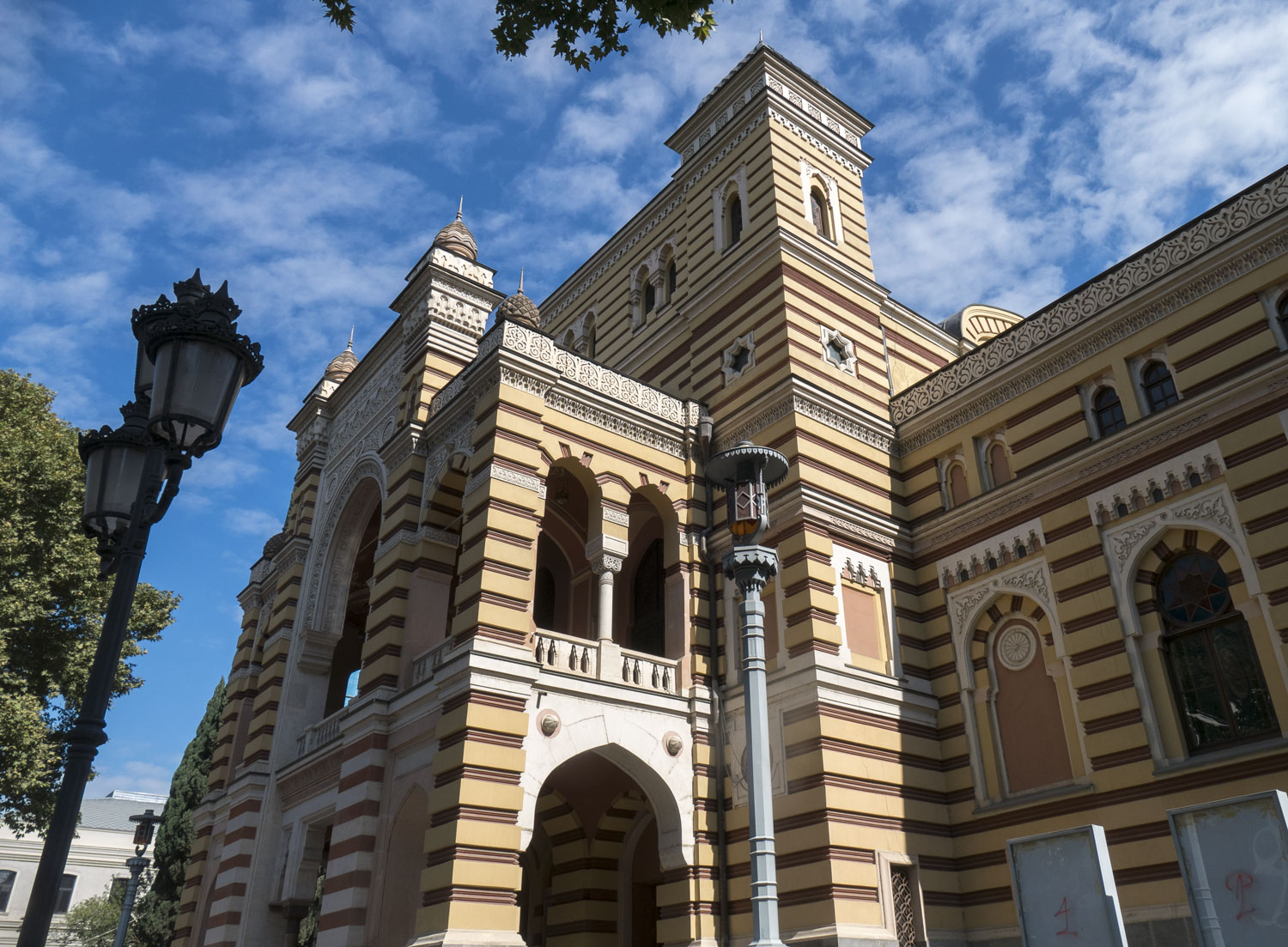
Like neighboring Yerevan, Tbilisi is dotted with churches and temples.
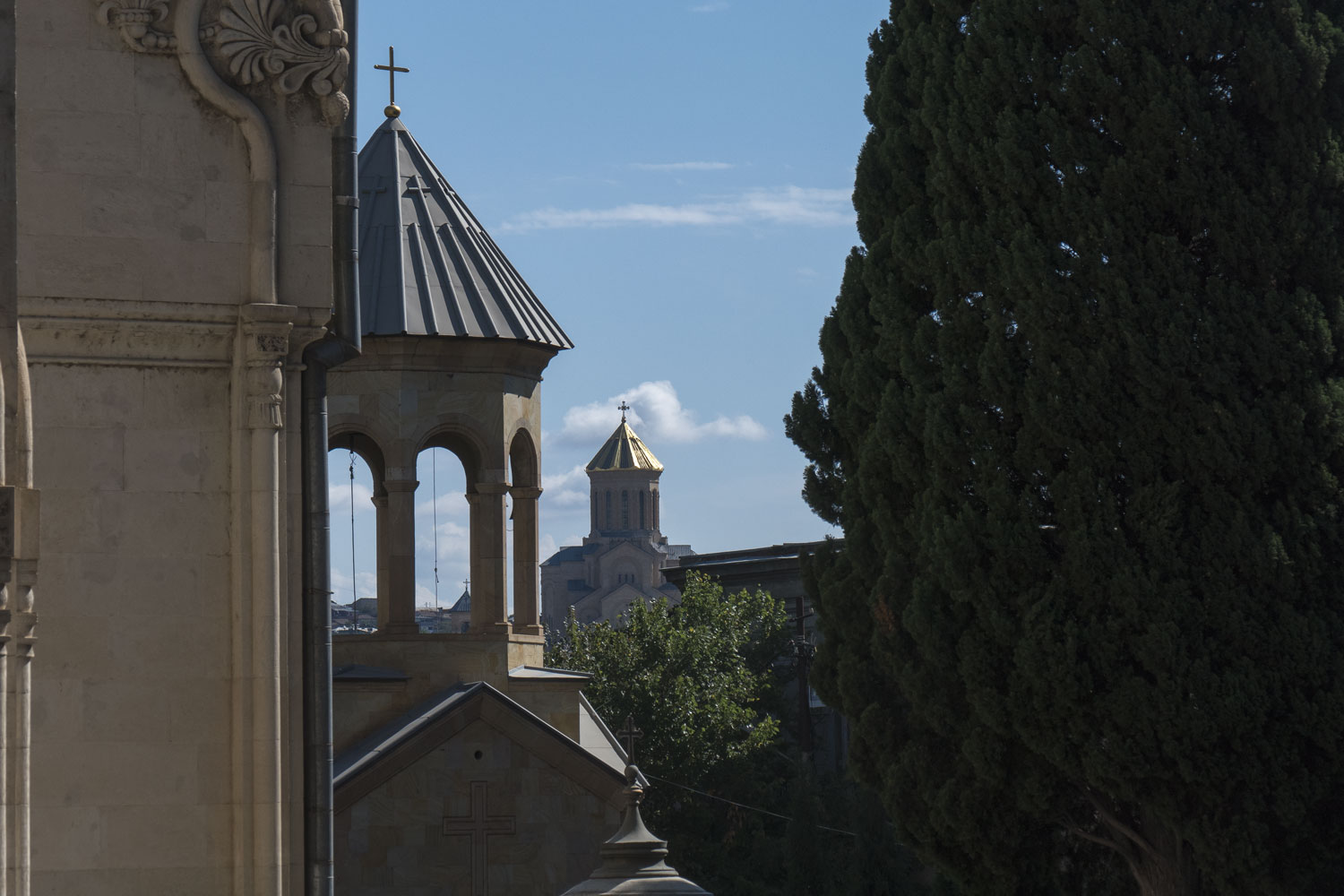
The center of Tbilisi is incredibly beautiful. It’s as clean as Europe, and sometimes it feels like being in Switzerland. This cleanliness and classical architecture are mostly found along Rustaveli Avenue, the analog of Tverskaya in Moscow.
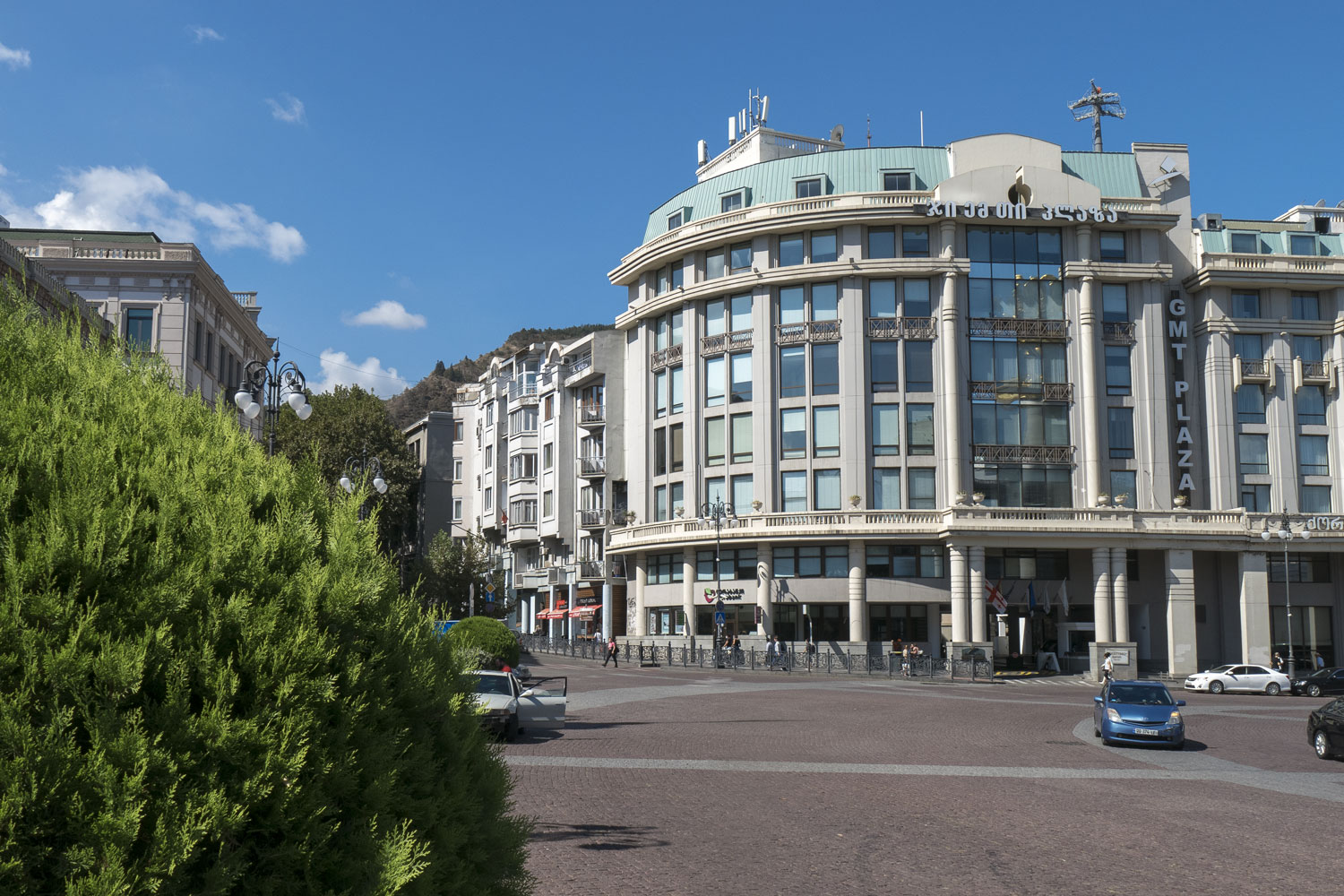
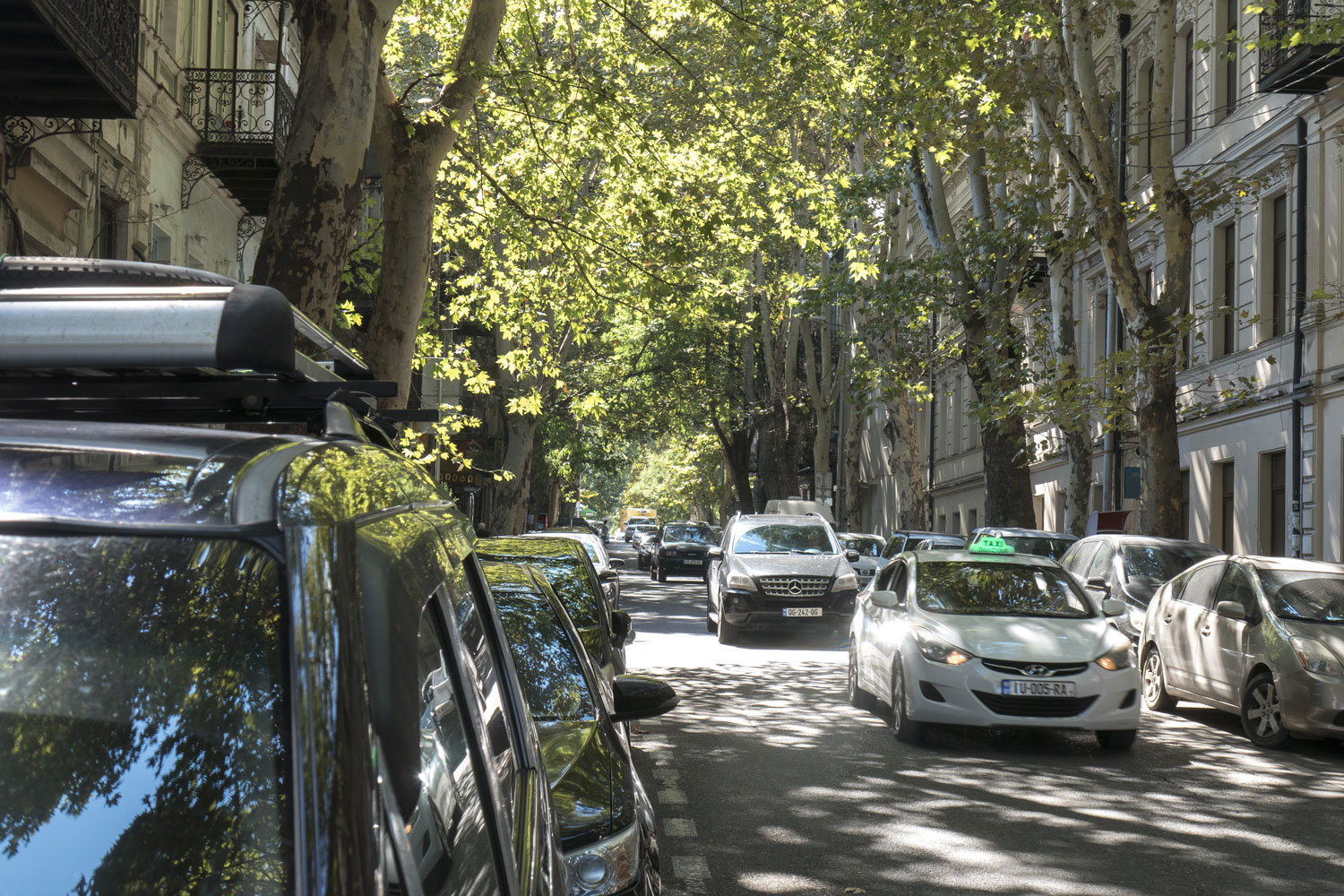
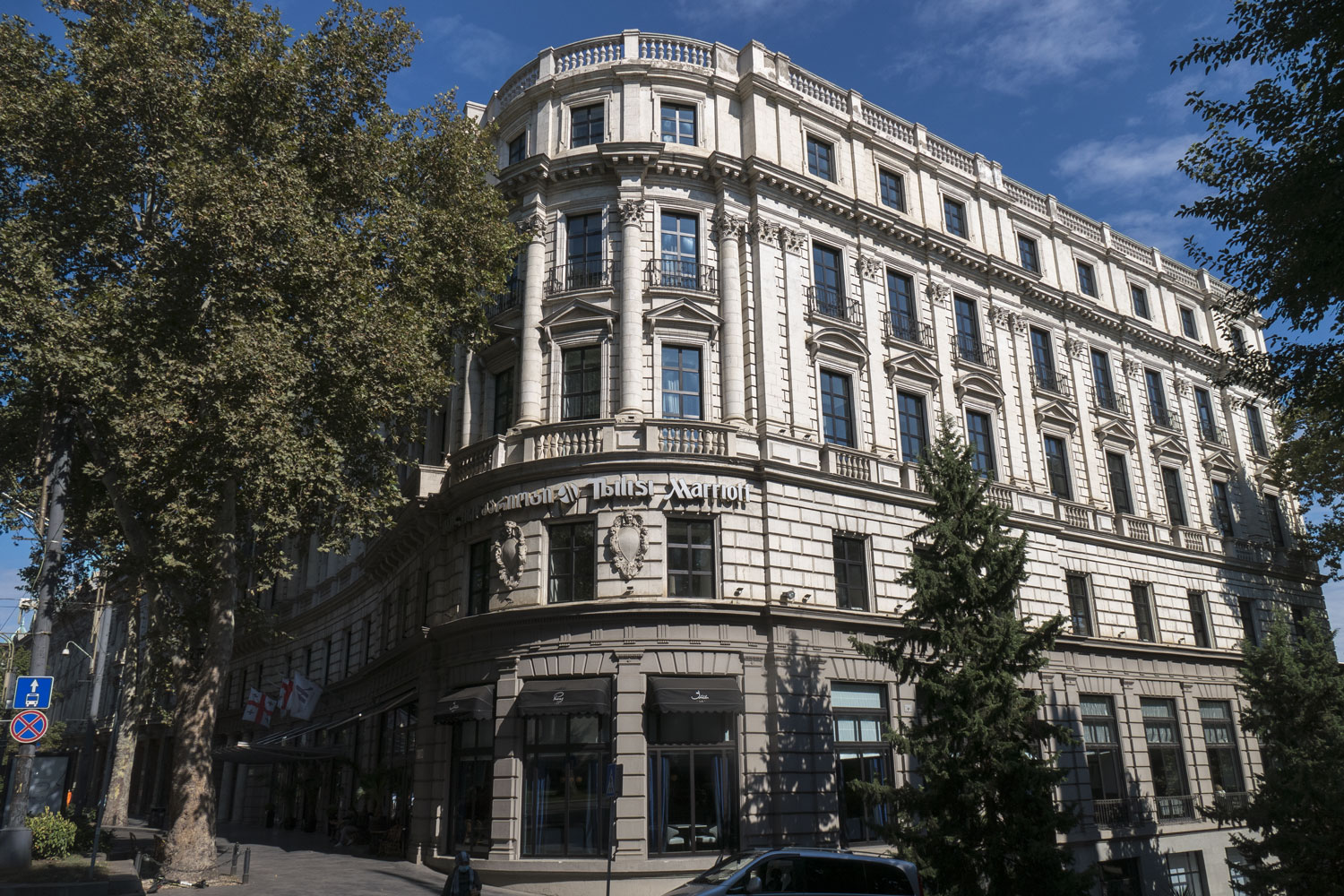
The unreal marionette theater of Rezo Gabriadze.
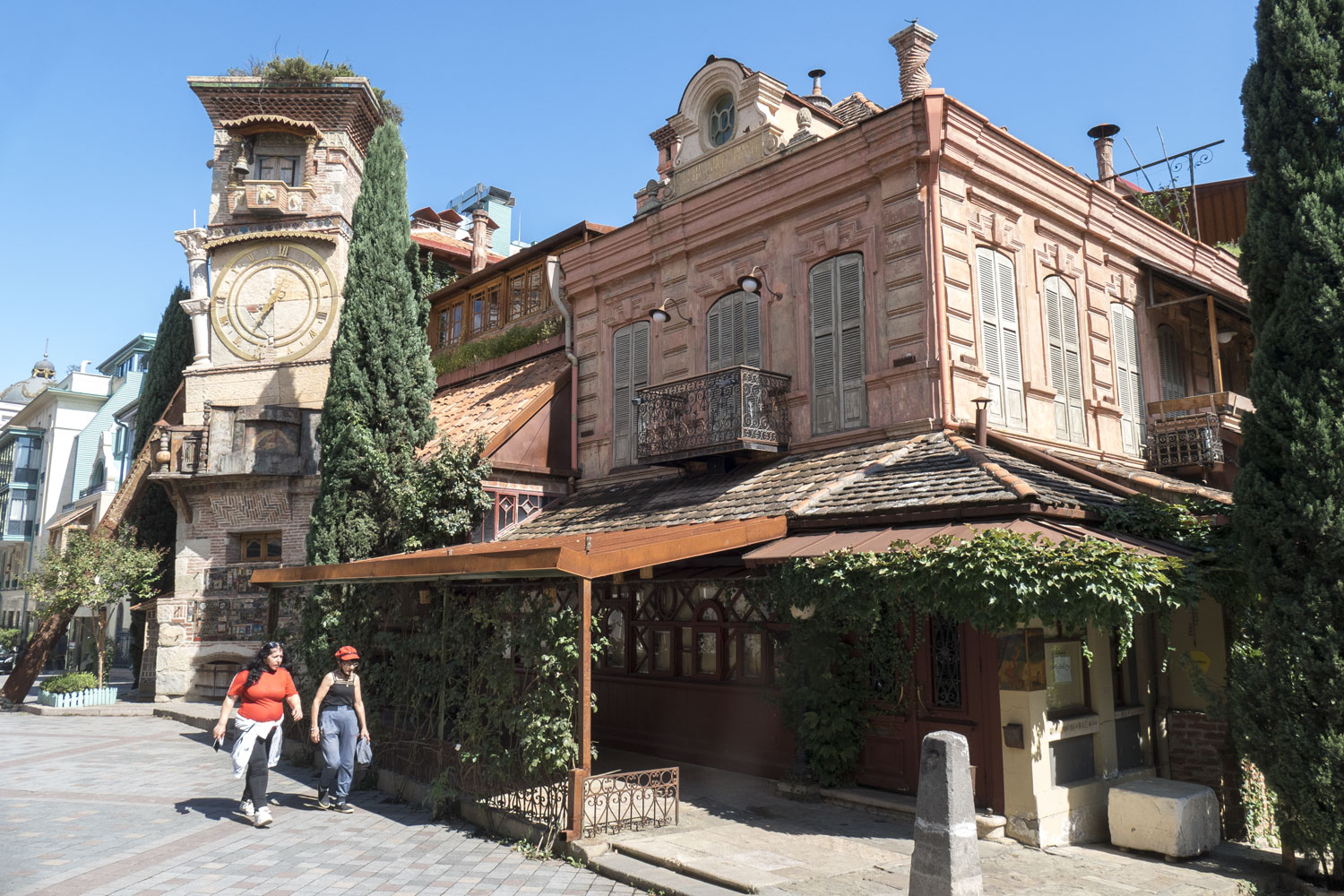
It’s amazing how it was designed.
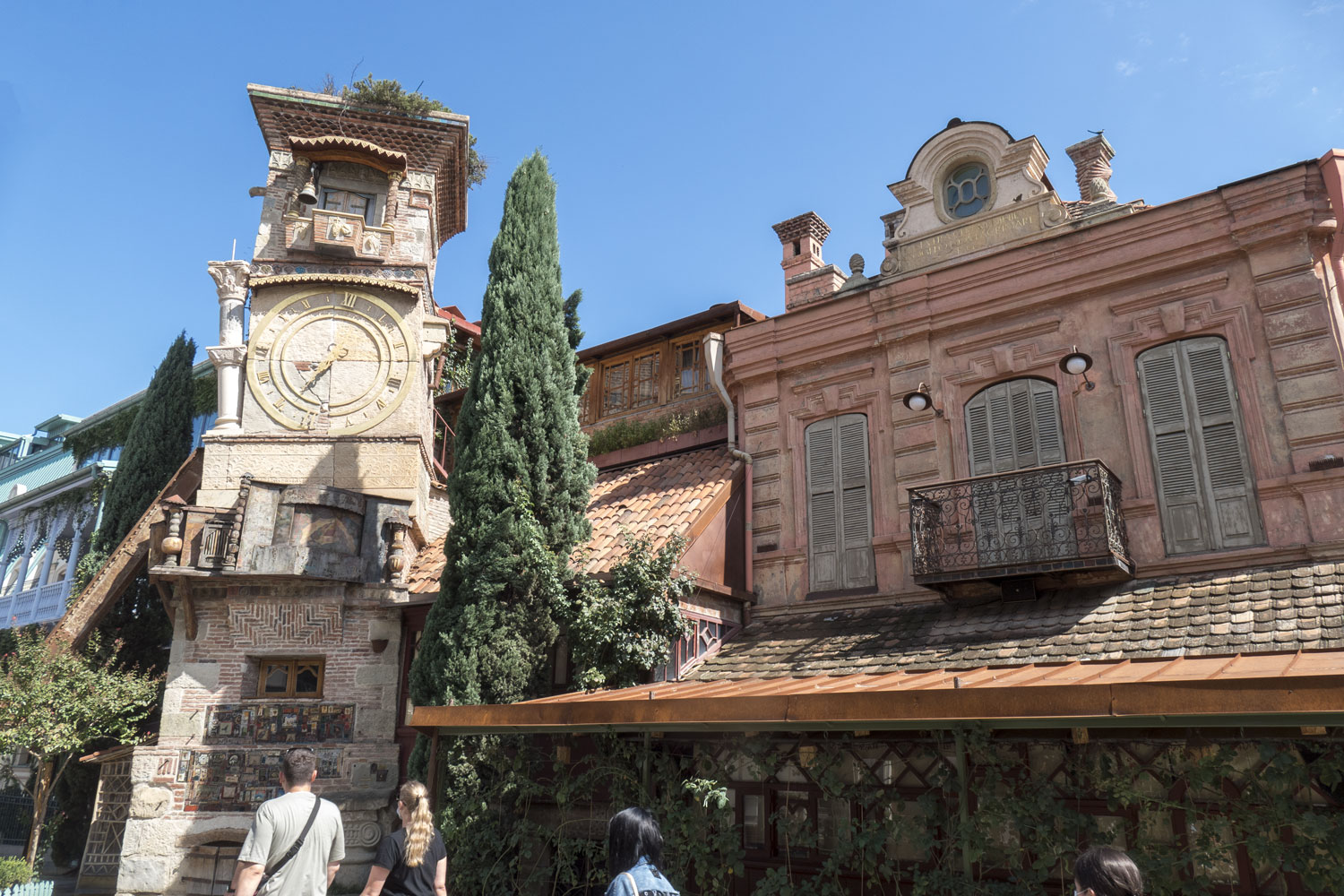
It’s something in the vein of Gaudi. Tickets for the theater are sold out a month in advance.
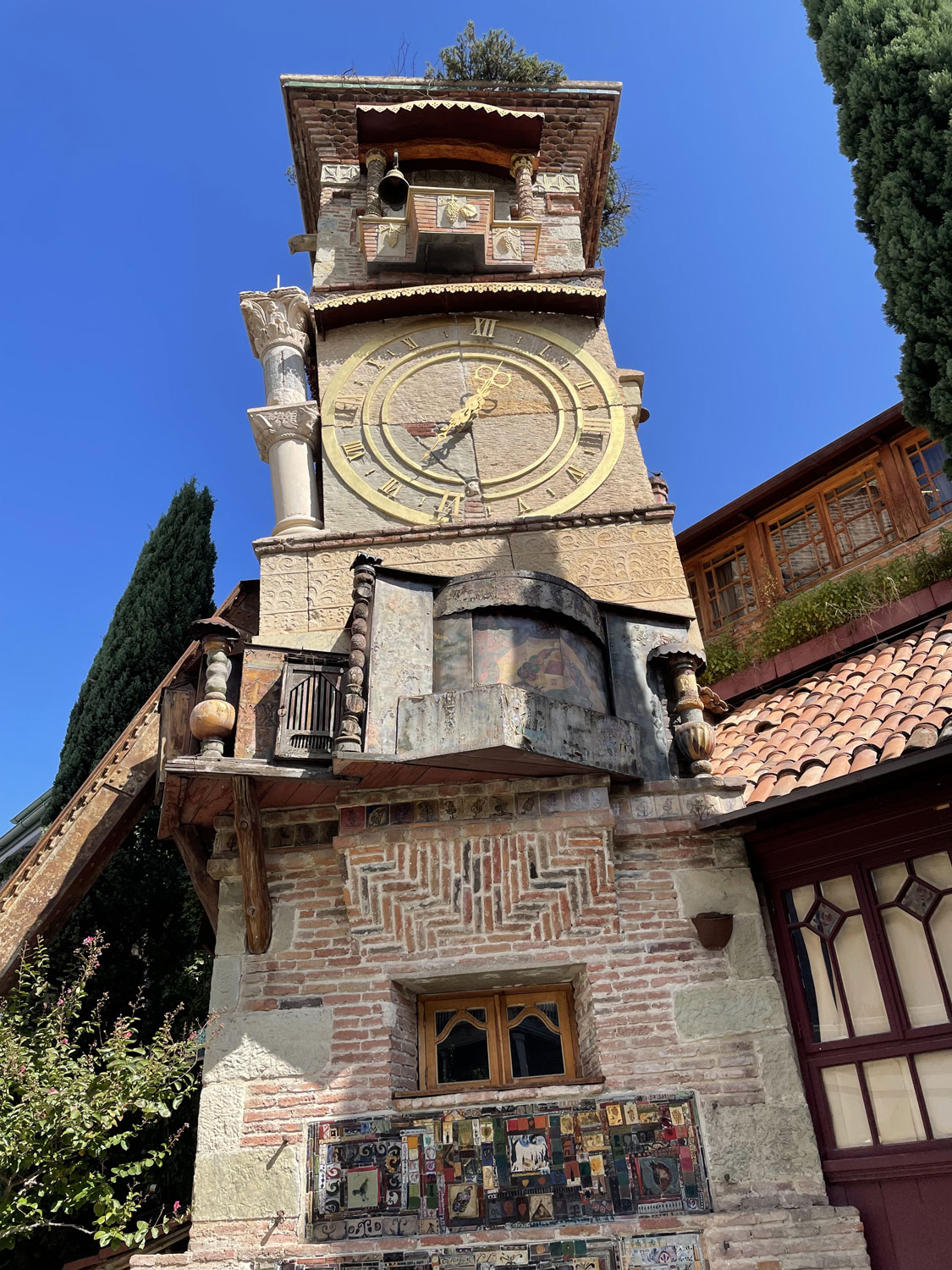
Next to the miniature theater is the oldest building in Tbilisi — the Church of the Nativity of the Virgin Mary. It was built in the 6th century.
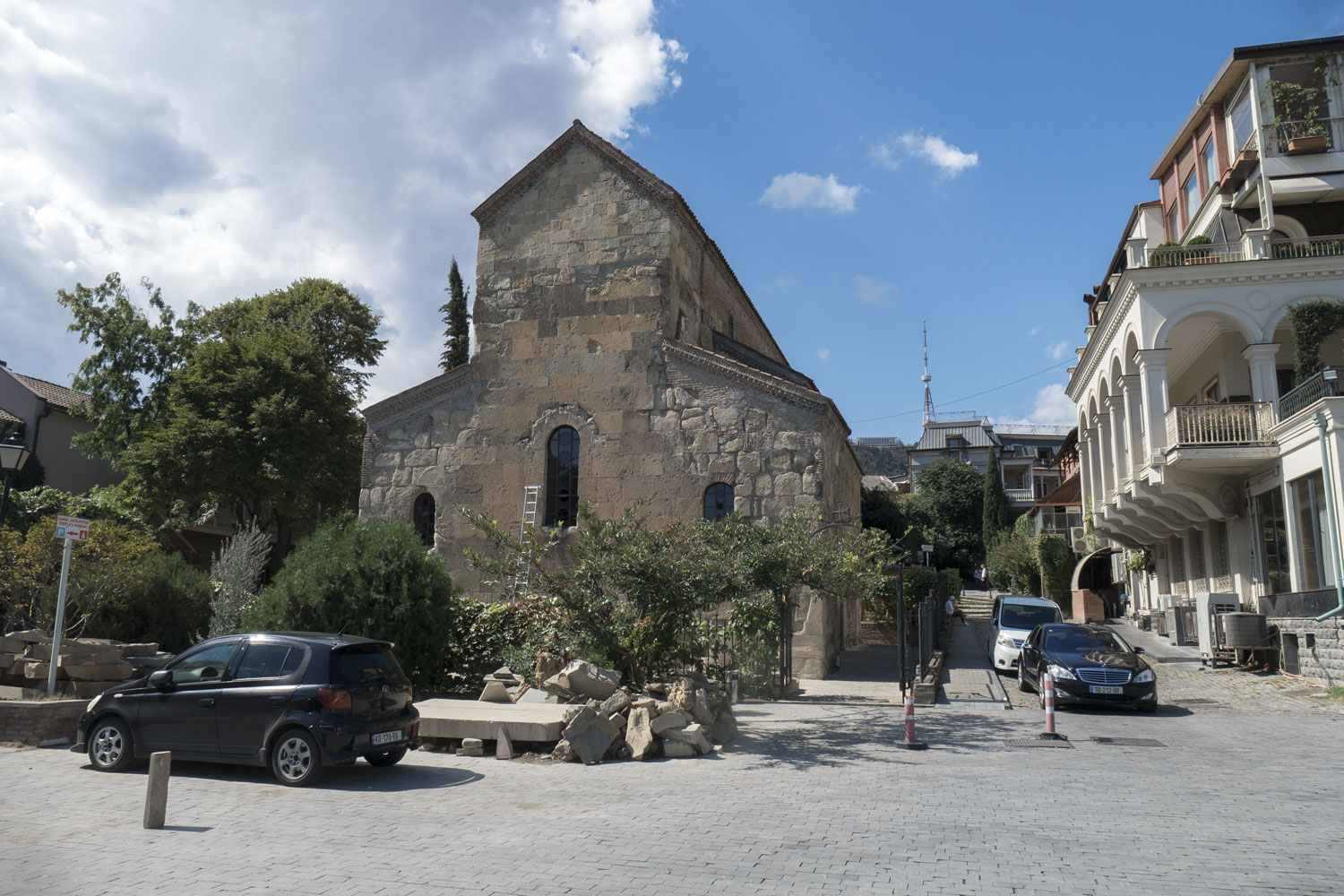
Inside, it’s quite good, and you can feel the history, although not as vividly as in the Armenian Khor Virap.
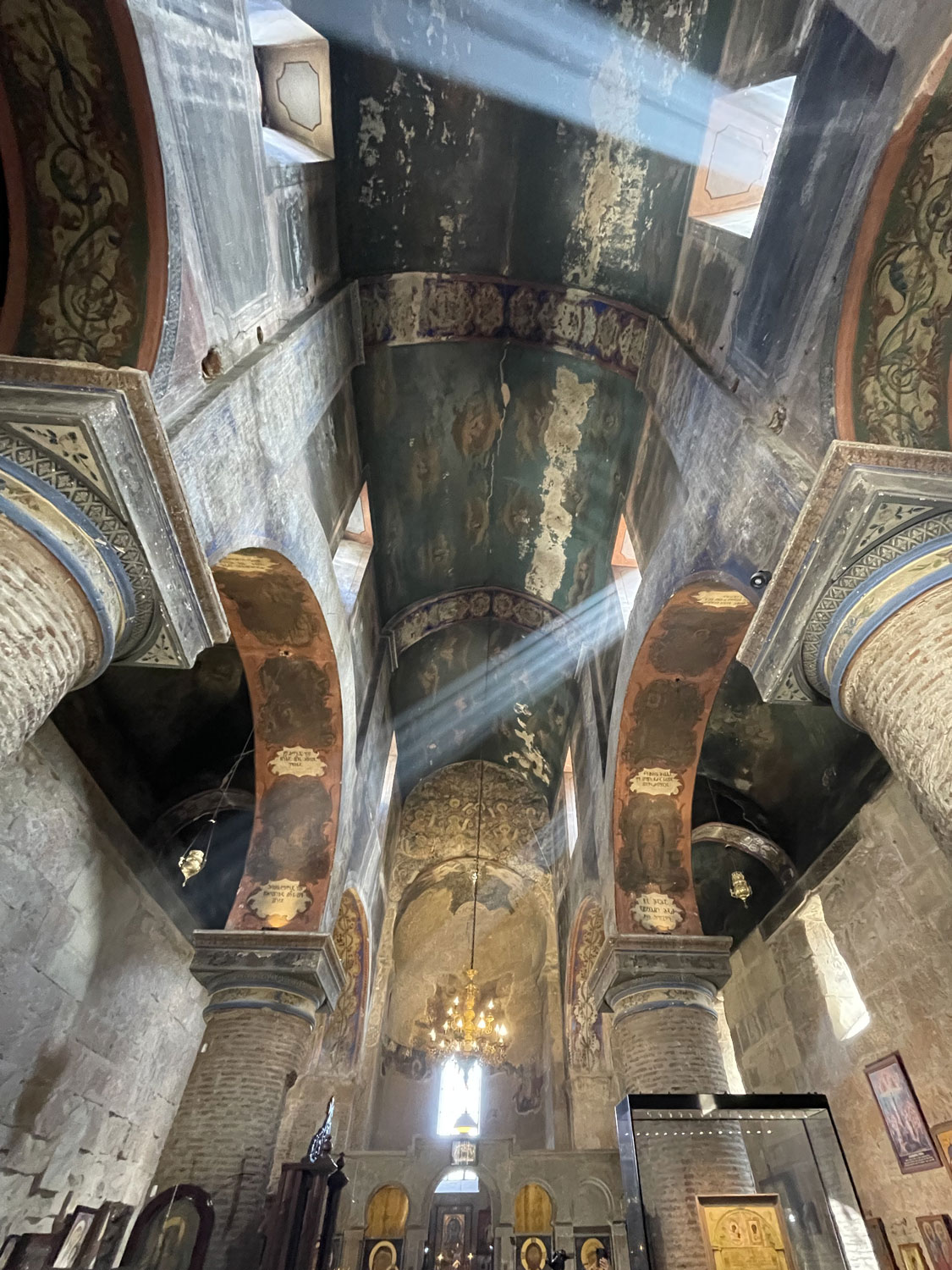
In the evenings, next to the basilica, you can catch a unique view. A hot air balloon carrying tourists crosses the background and creates an absolutely mystical sight. I was lucky twice: a full moon also got into the frame.
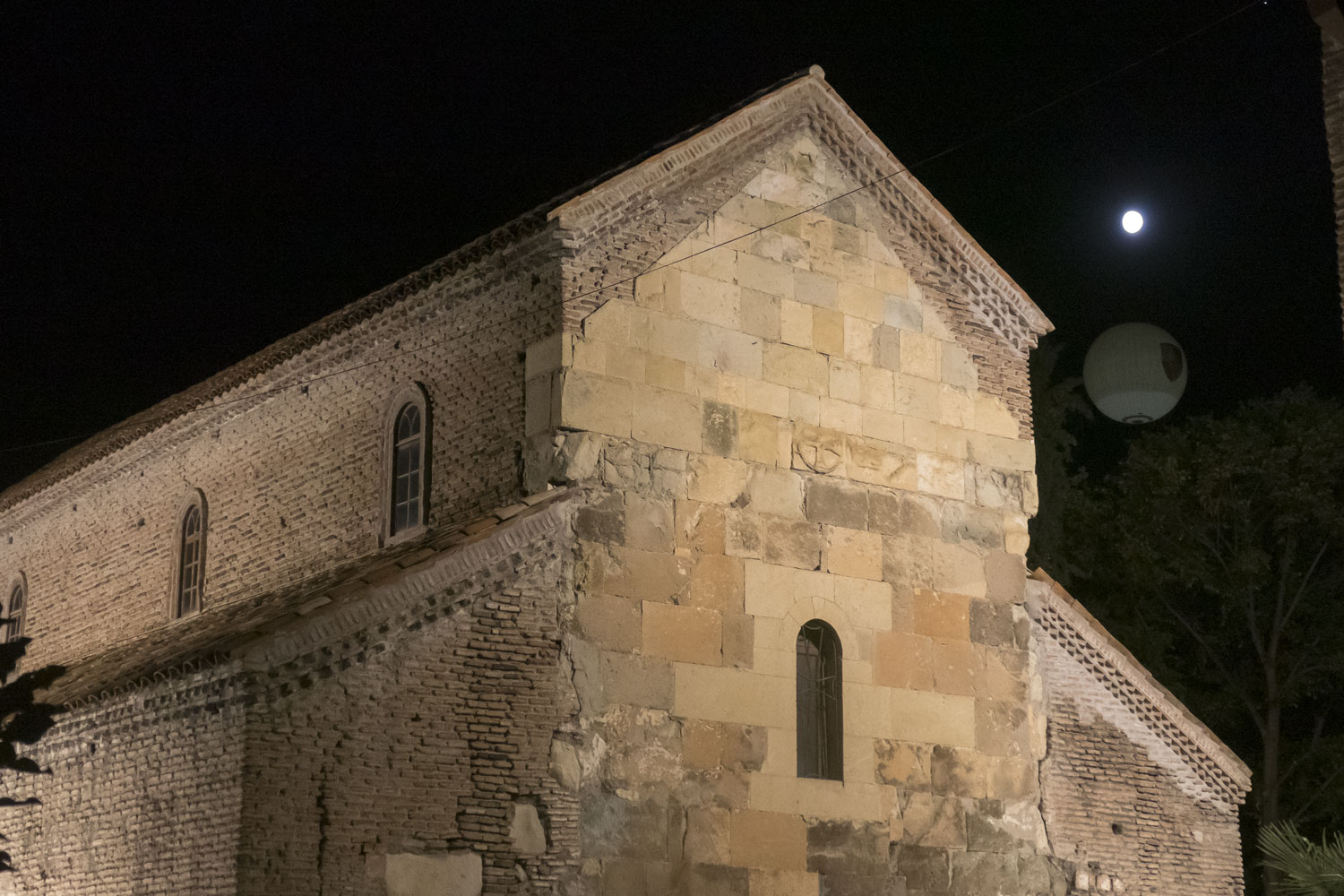
Right behind the basilica, the quarters of the old city begin, which used to be called “kala” — from the Arabic word meaning “fortress.”
In fact, the fortress once surrounded the old city of Tbilisi. Now only a small piece of it remains, on which wooden hotels decorated in antique style are placed like shish kebab on skewers.
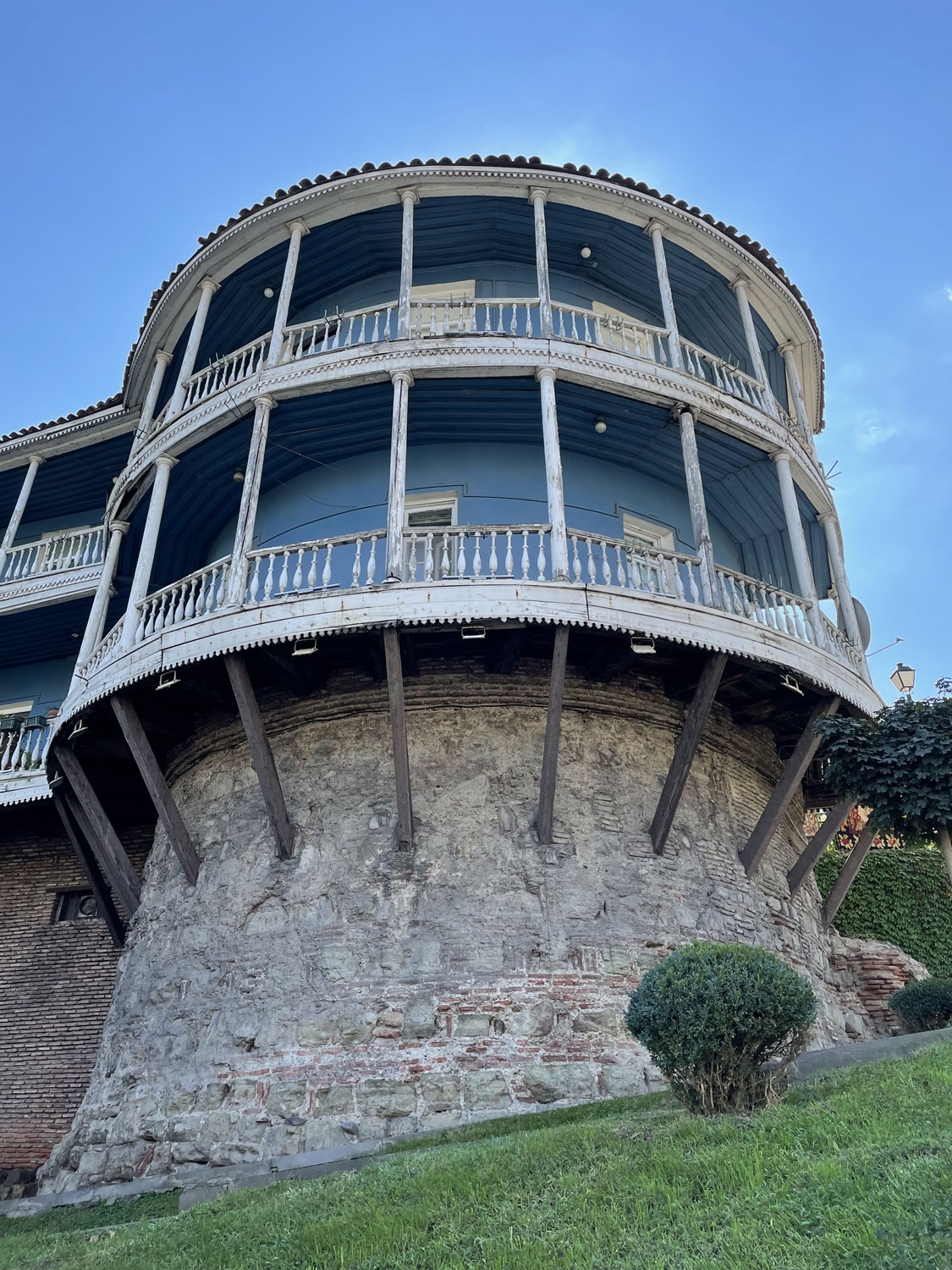
At night, it looks magical. It resembles a European city.
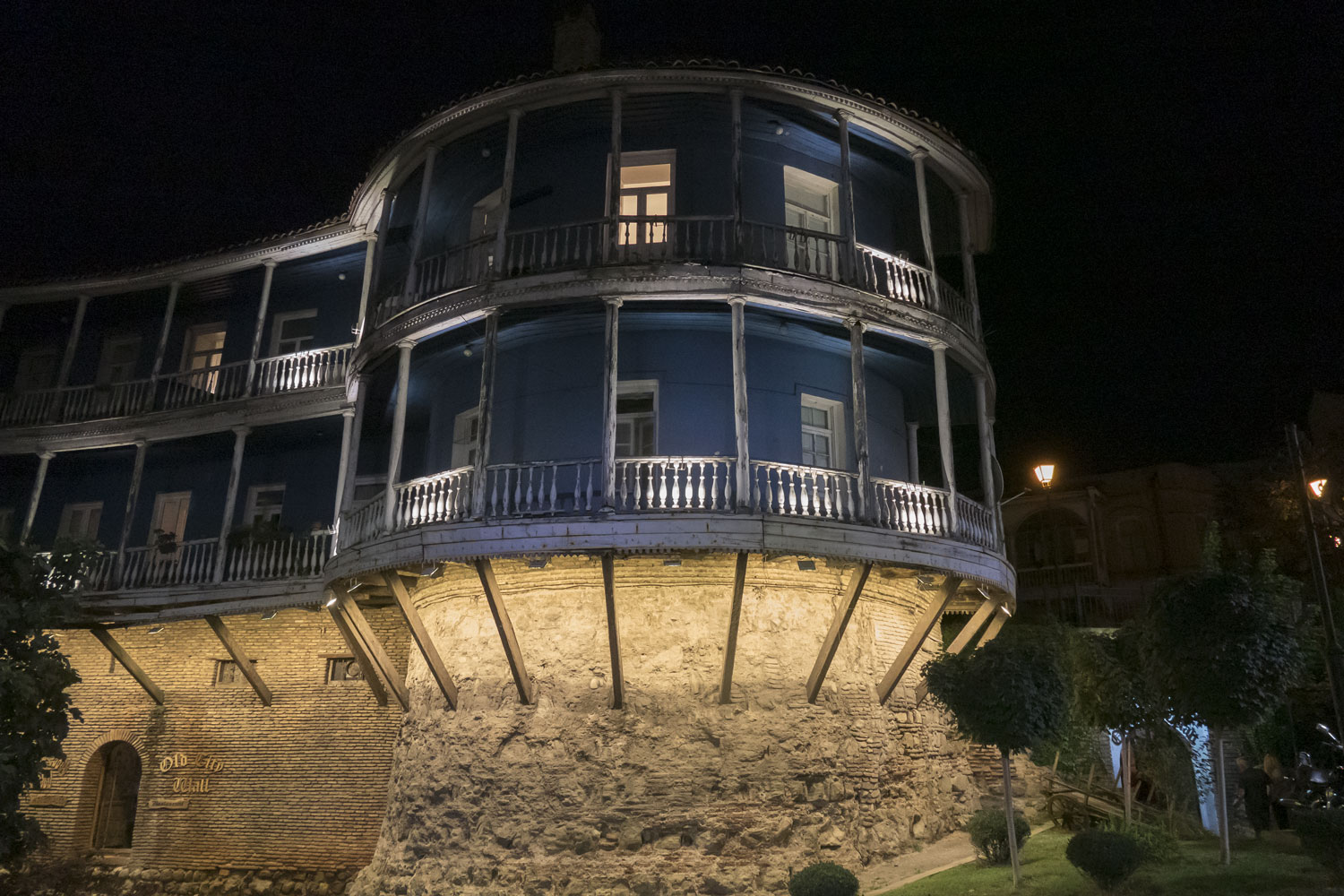
The fortress wall first appeared in Tbilisi, apparently as early as the 6th century when Georgia was part of Persia. Since then, the walls have collapsed and been rebuilt many times. The latest version of the walls that survived to this day were built in the 17th century and mostly dismantled in 1840, but then restored during the Soviet era.
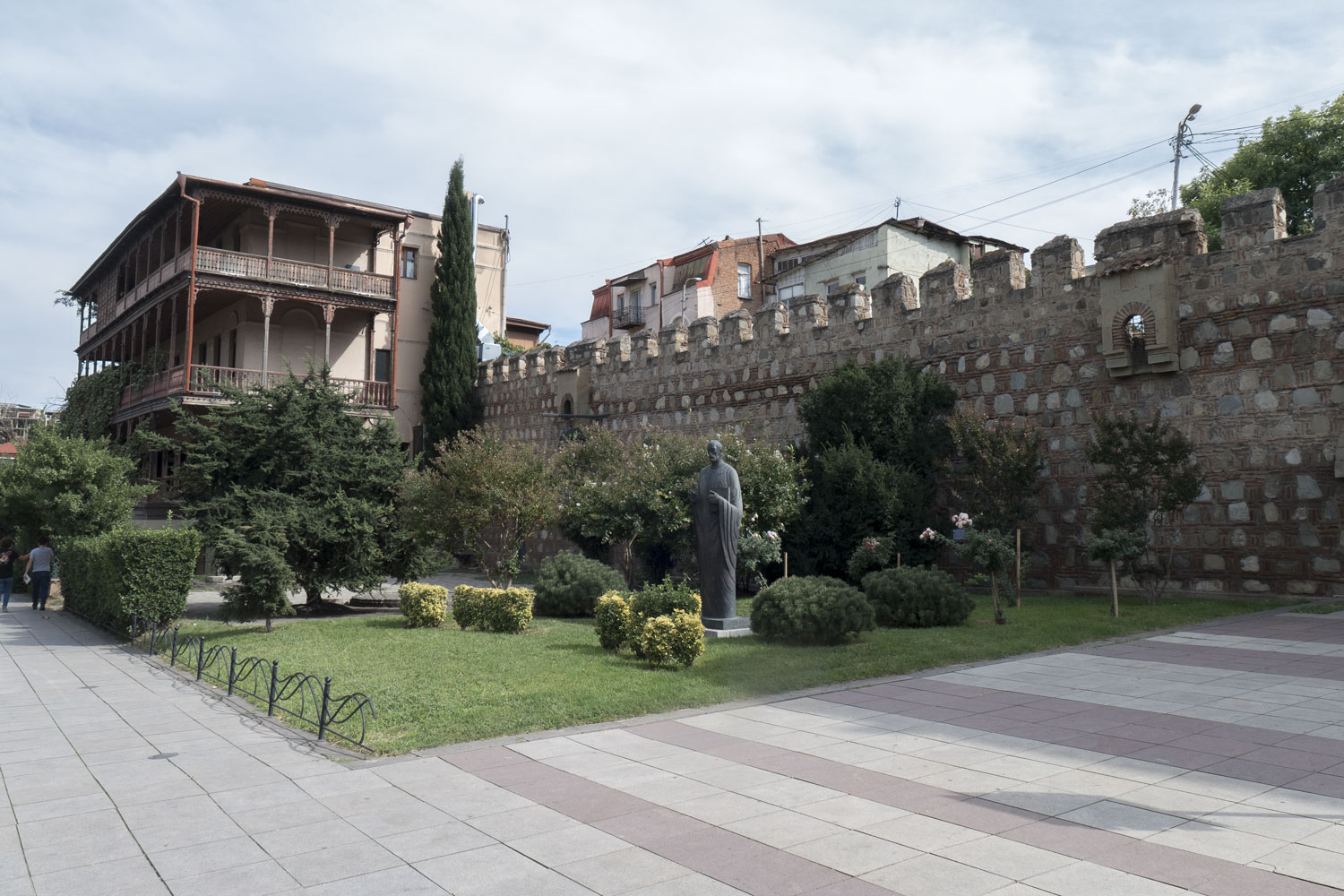
The urban planners of modern Tbilisi made an unexpected and bold move. The foundations of the ancient walls, which date back to the time of the Arabs and Persians, should have been preserved as a heritage of the public, but they obstructed the transport interchange. Therefore, the walls were excavated directly under the road and recreated something like a medieval street.
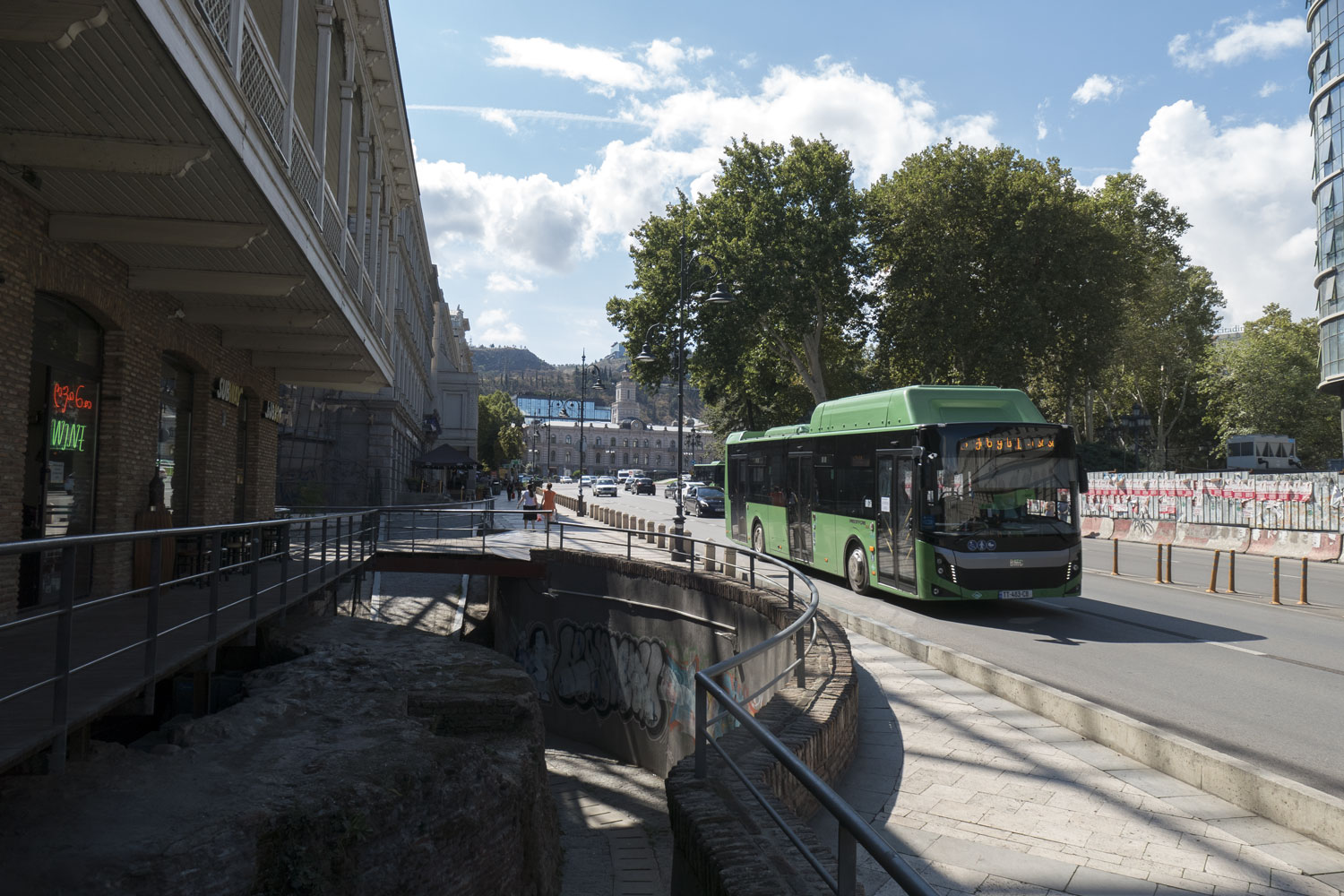
To walk between these walls, you need to go down an inconspicuous staircase between the highway and the old city. It turned out to be a kind of dungeon.
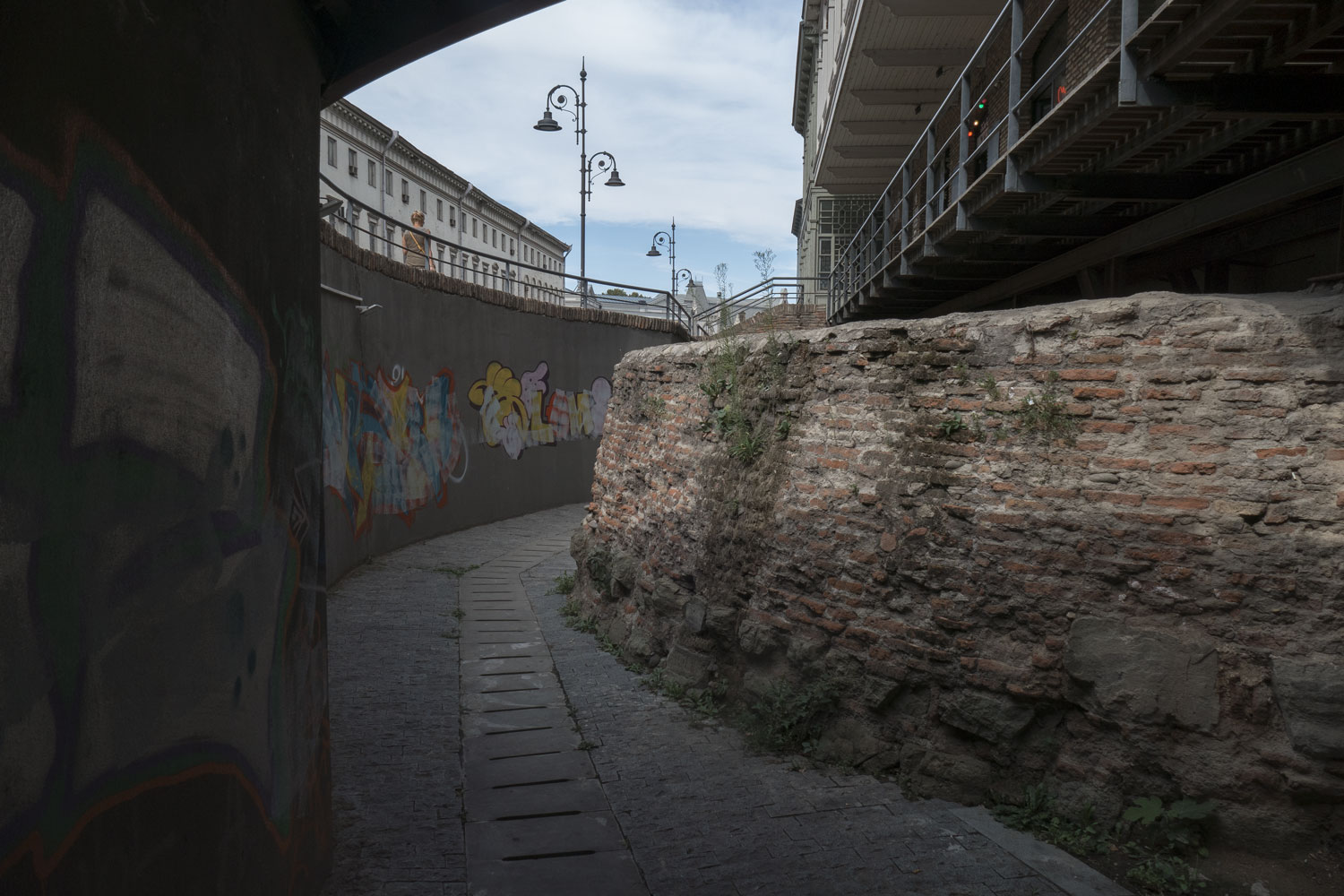
The old town itself is not that old. Tbilisi was founded in the 5th century, but since then only a basilica and a couple of other churches have survived. Most of the houses in the old town were built in the 19th century.
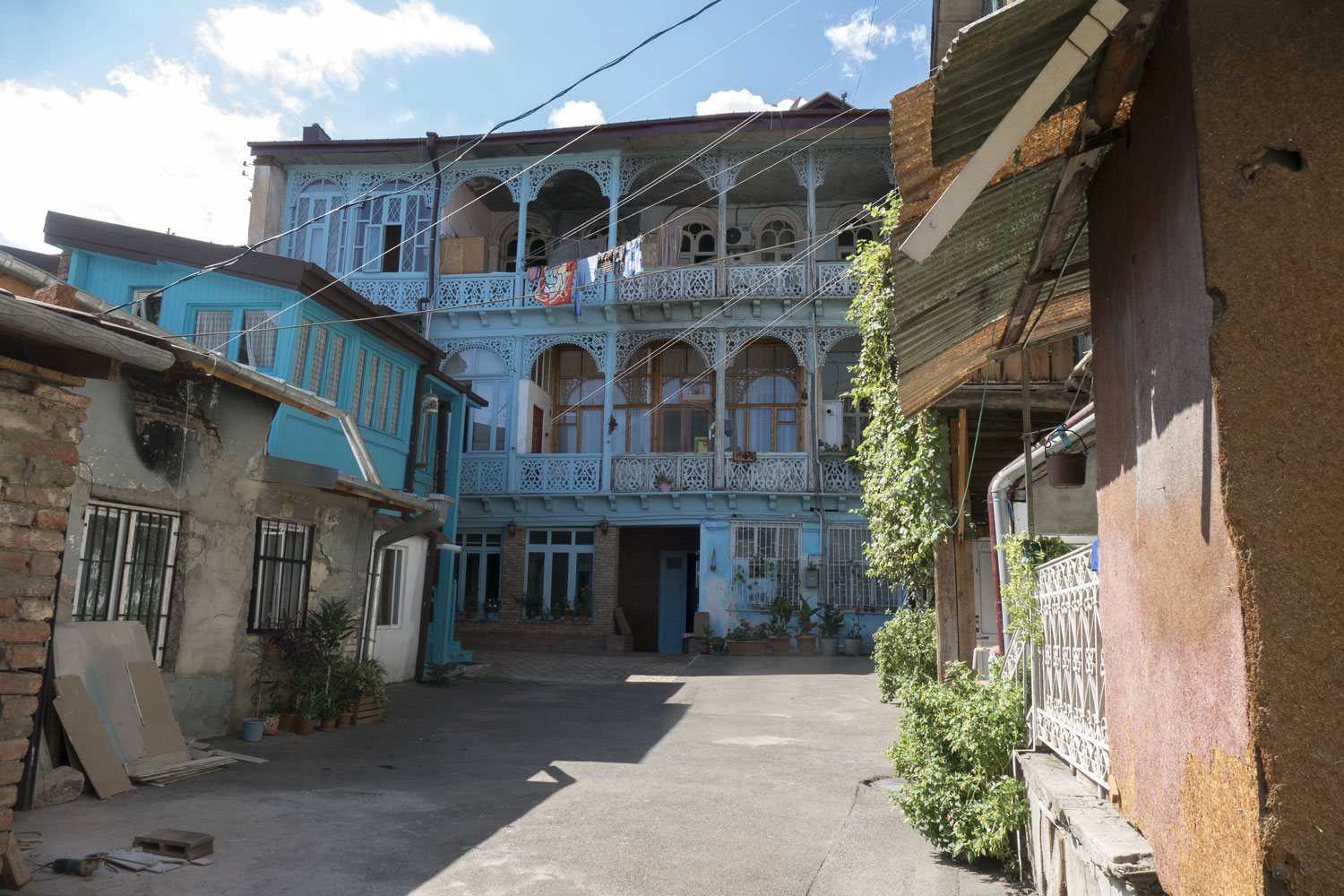
On the other hand, the labyrinth of winding narrow streets schematically resembles the layout of a medieval city.
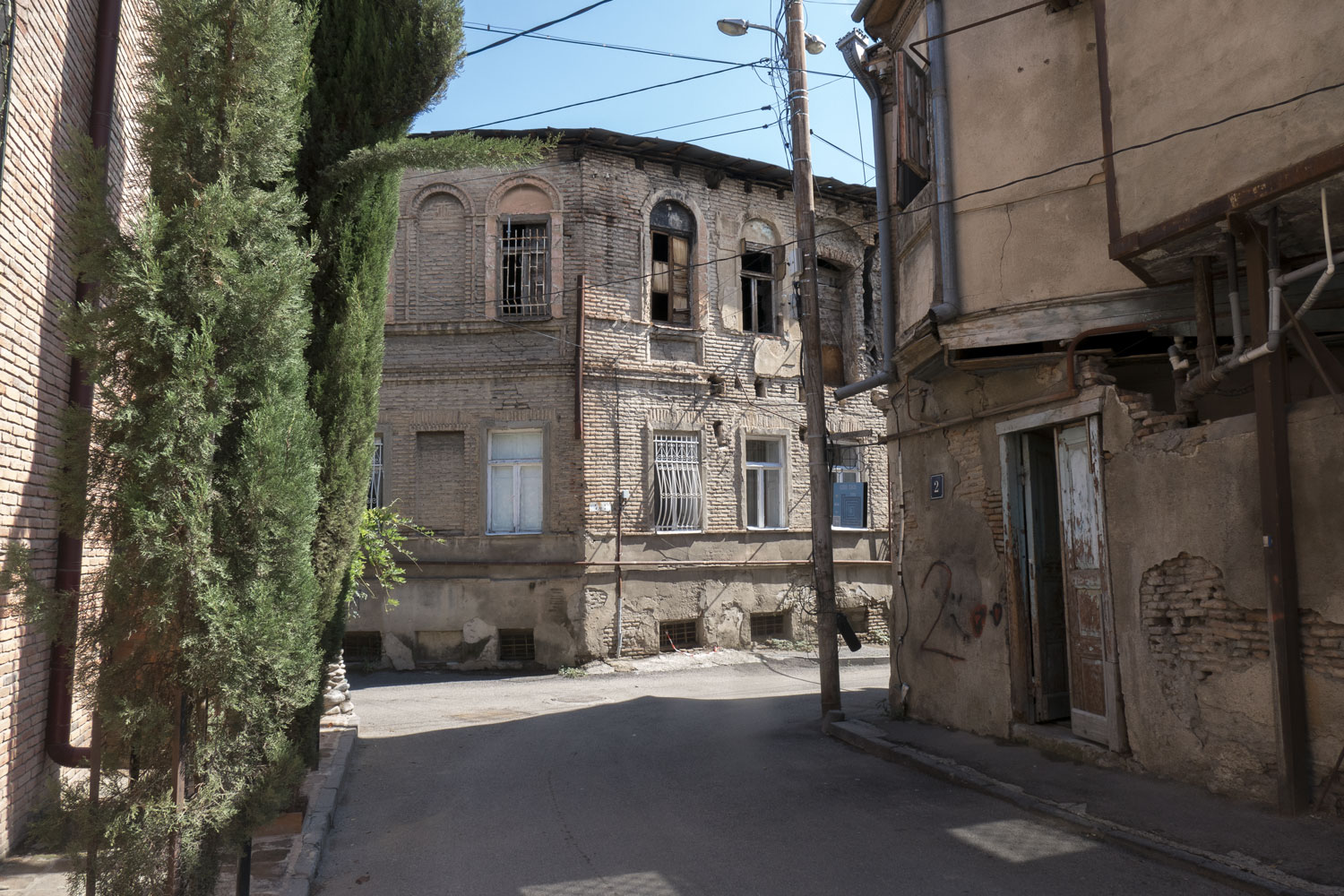
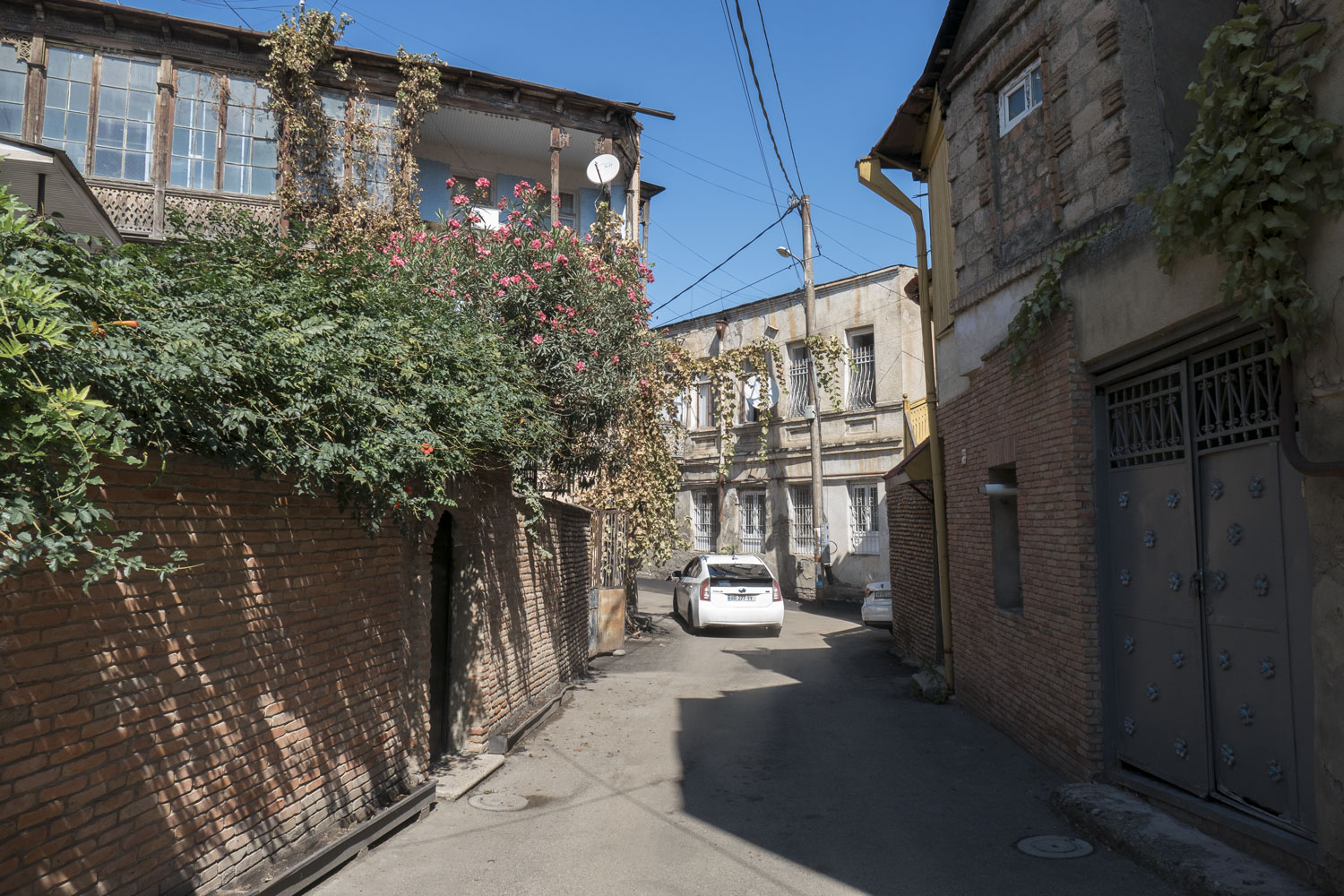
I last saw beams supporting houses in the Moroccan city of Fez.
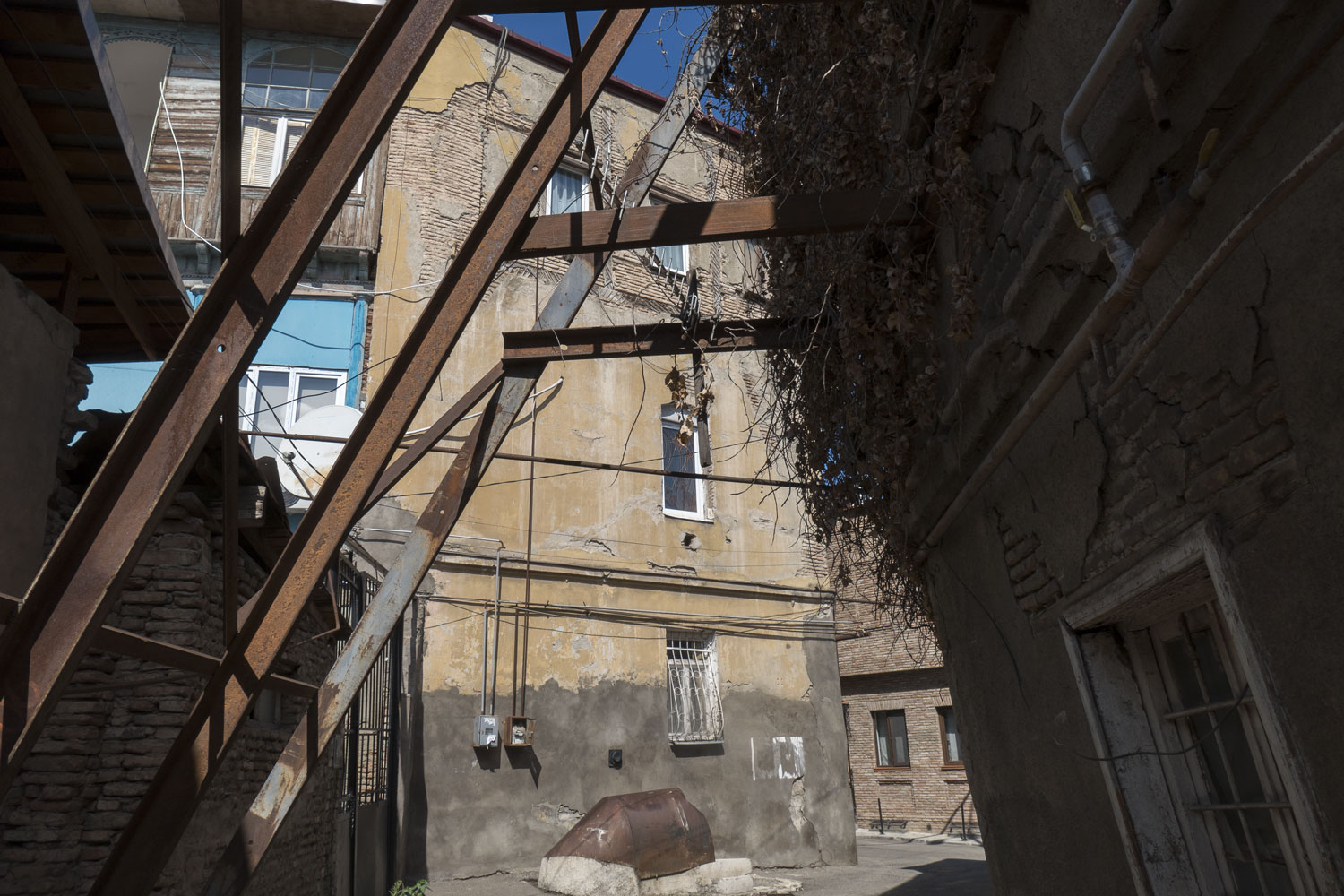
Absolutely eastern beauty.
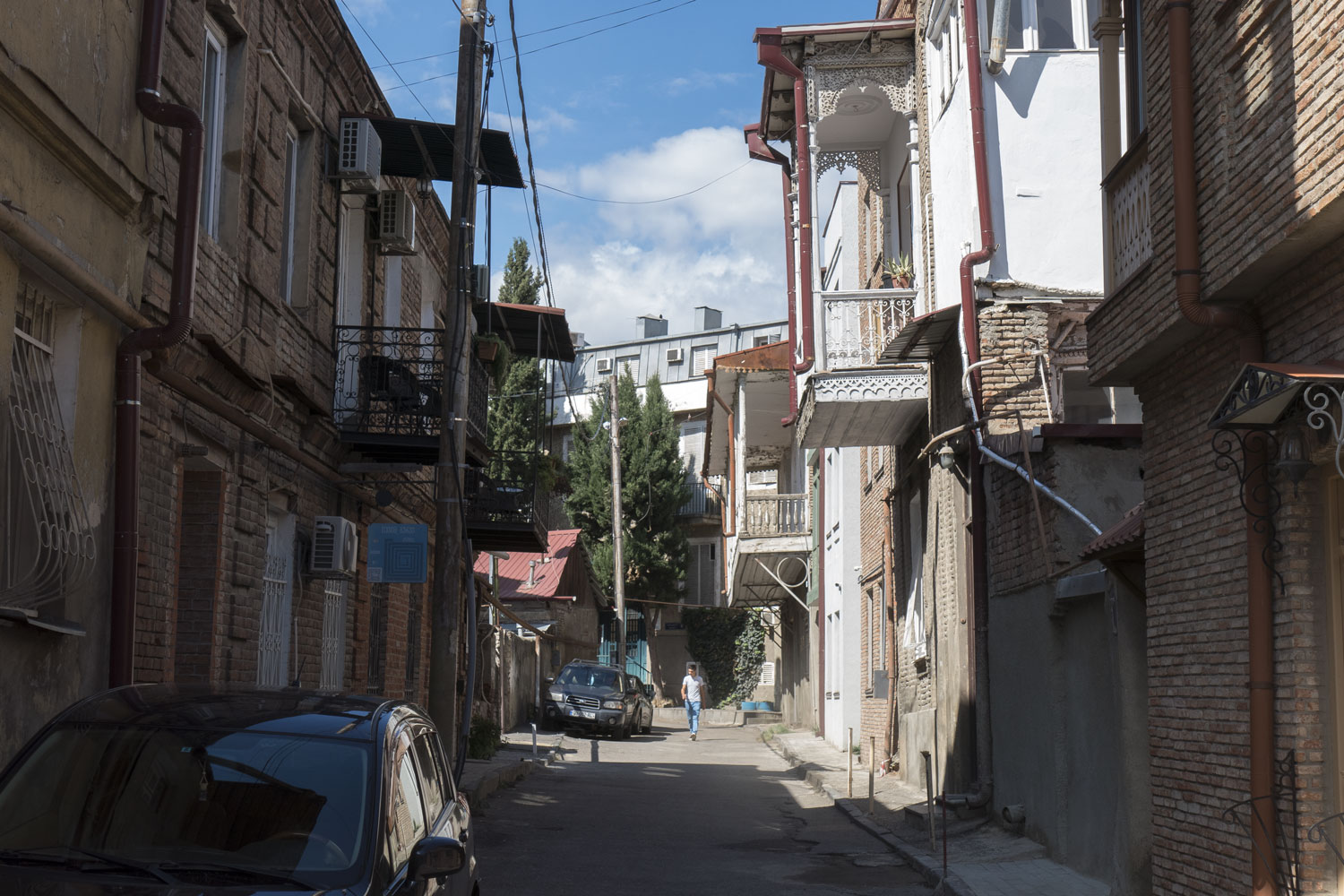
Anything could be found on the balconies of these houses. For example, a café or an art gallery.
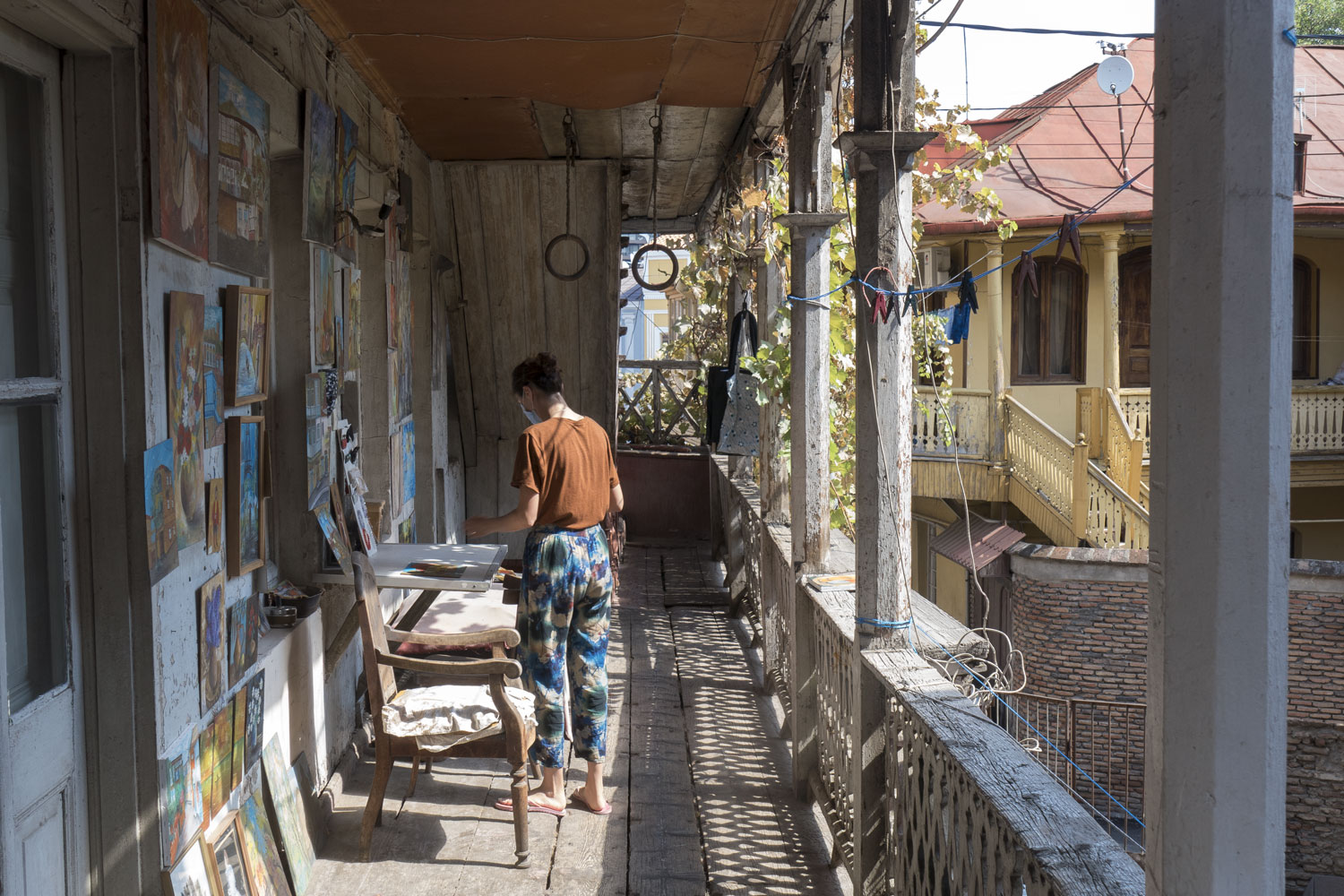
Thrill.
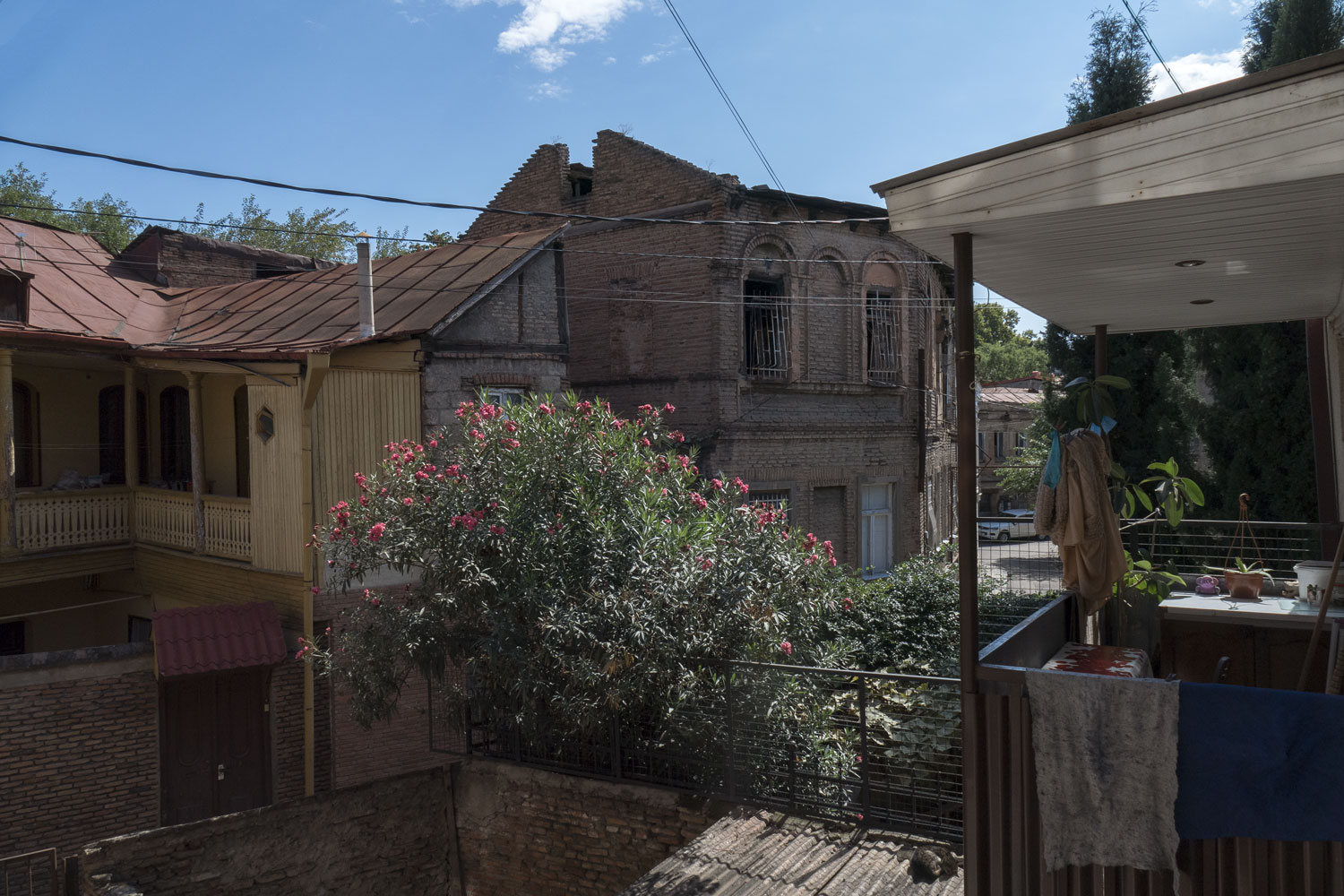
At night, the old Tbilisi is flooded with yellow-orange light.
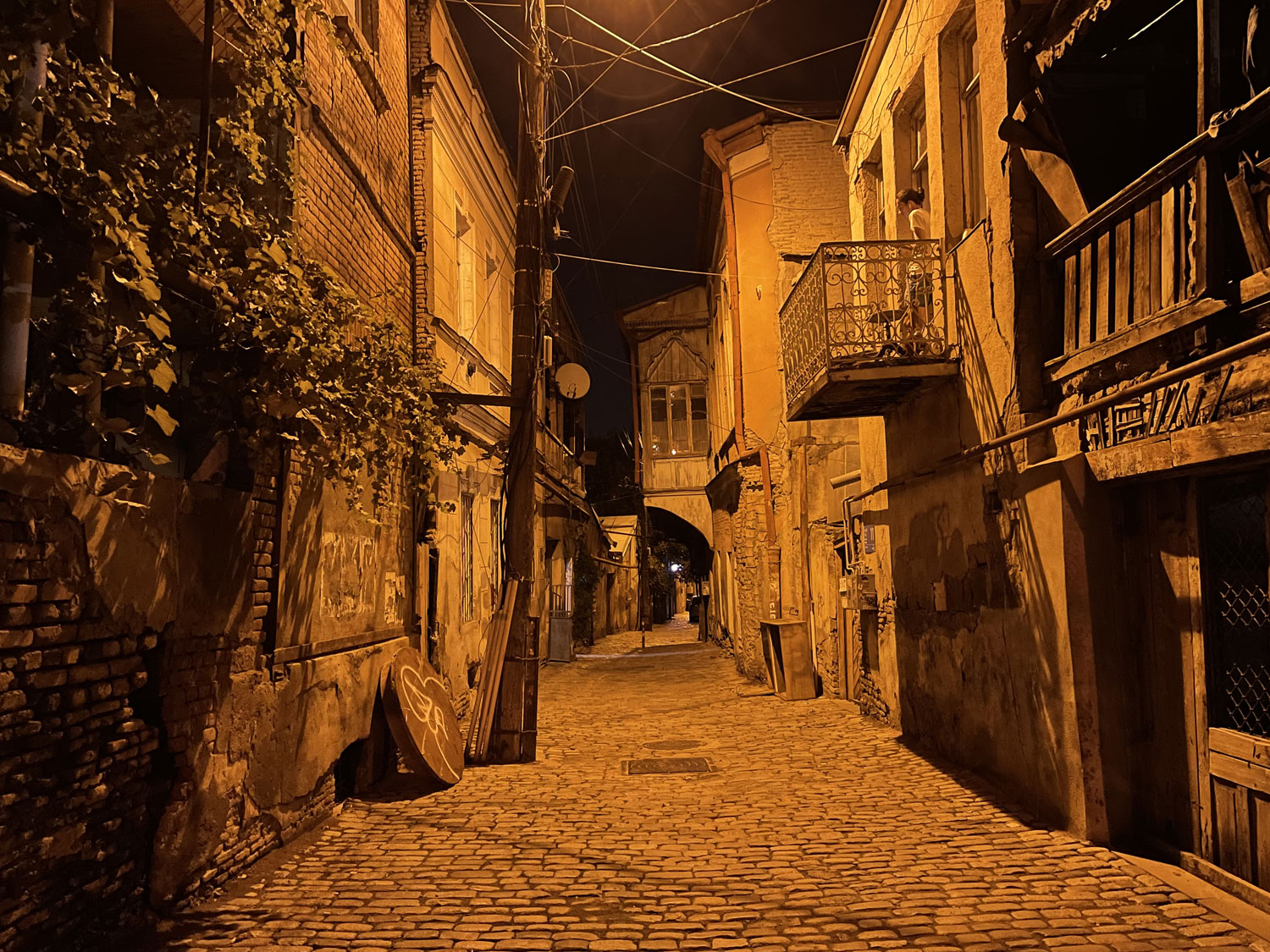
Just beyond the old town lies the newest Bridge of the World. This pedestrian bridge was built in 2010, two years after the war with Russia, in memory of that war. The bridge was proposed by Mikheil Saakashvili, the President of Georgia.
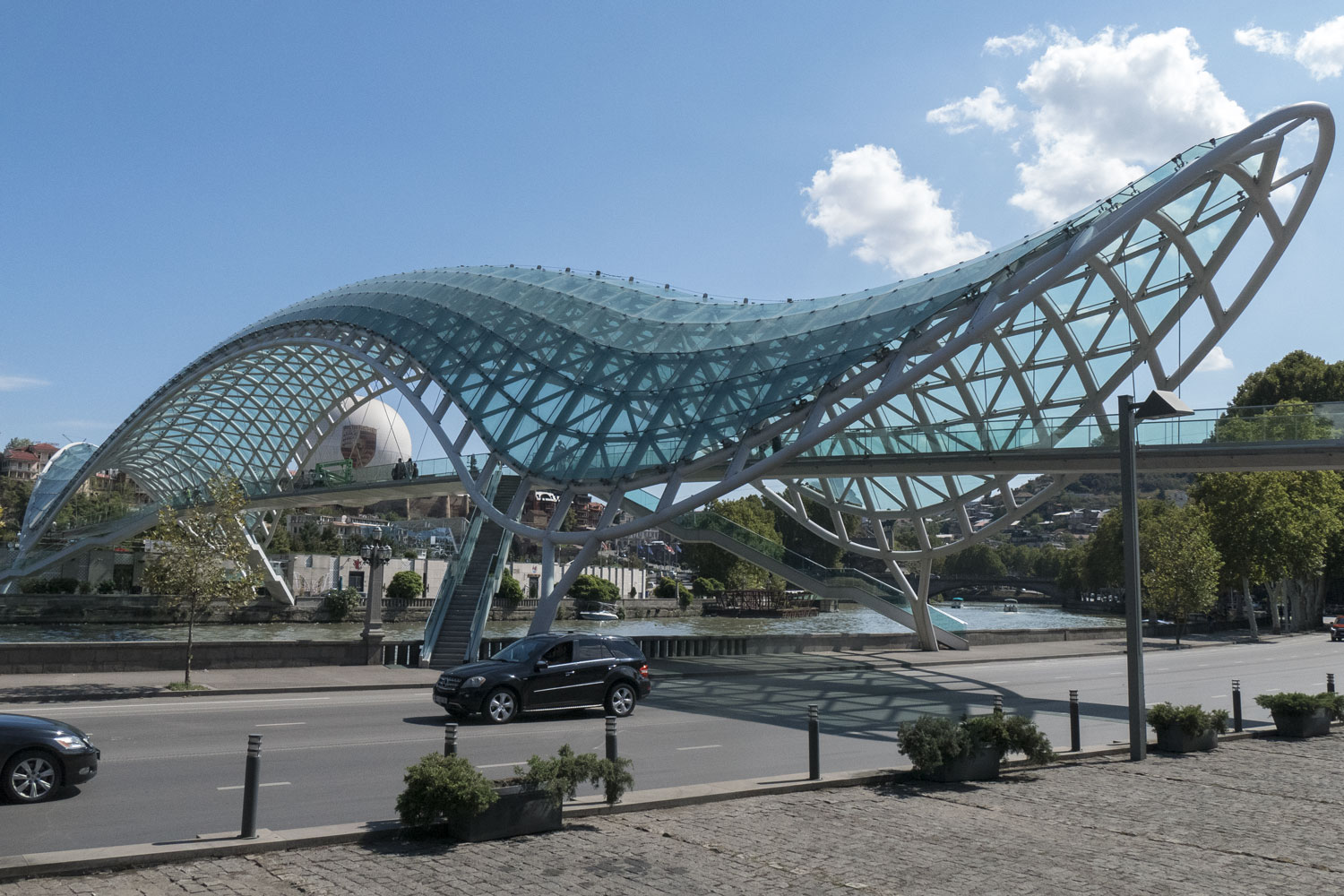
The architect of the bridge was an Italian named Michele De Lucchi. Some say that not all Georgians liked this modern glass structure against the backdrop of the old town, but architecturally, the bridge is quite good. Over the years, it has become a symbol of Tbilisi.
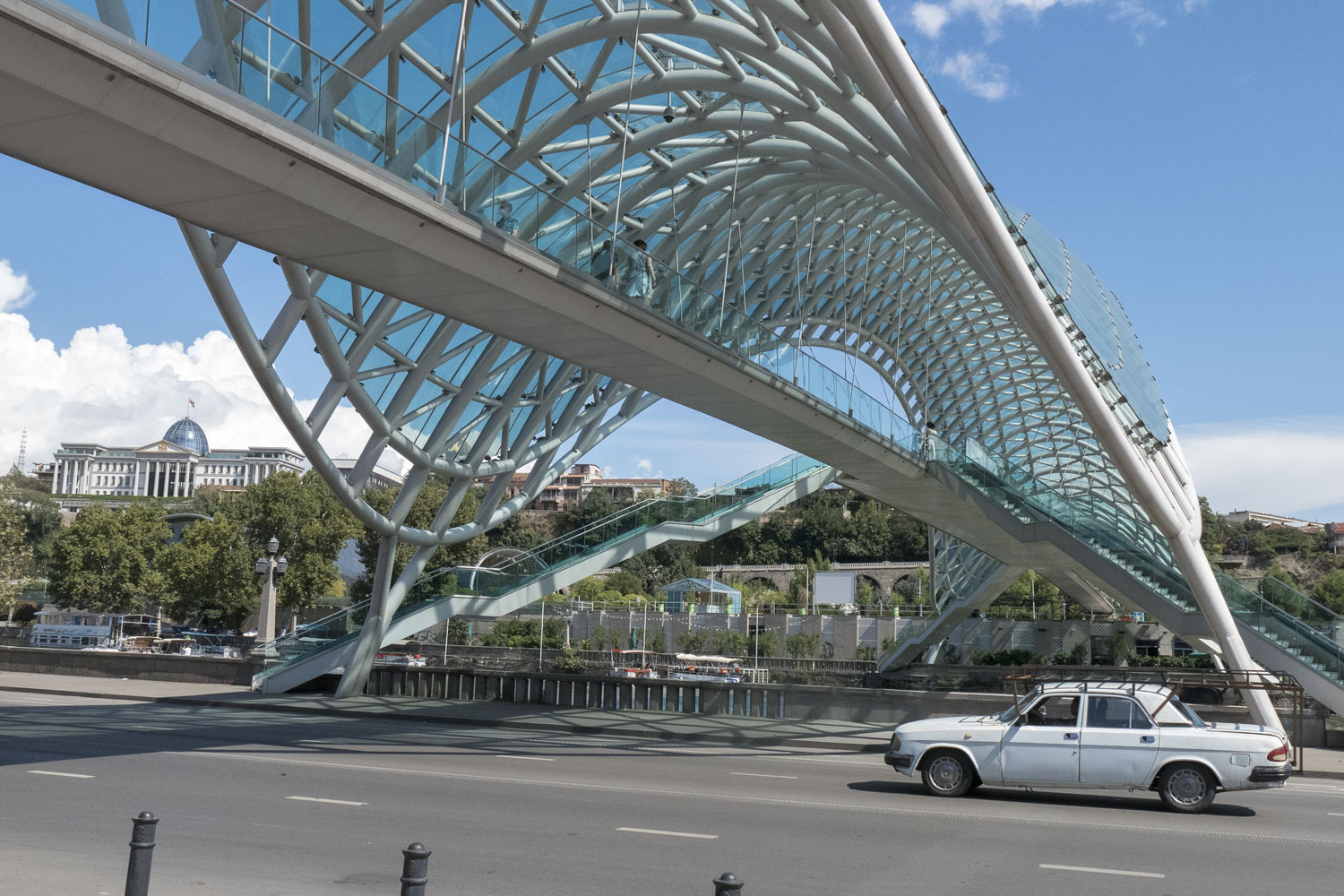
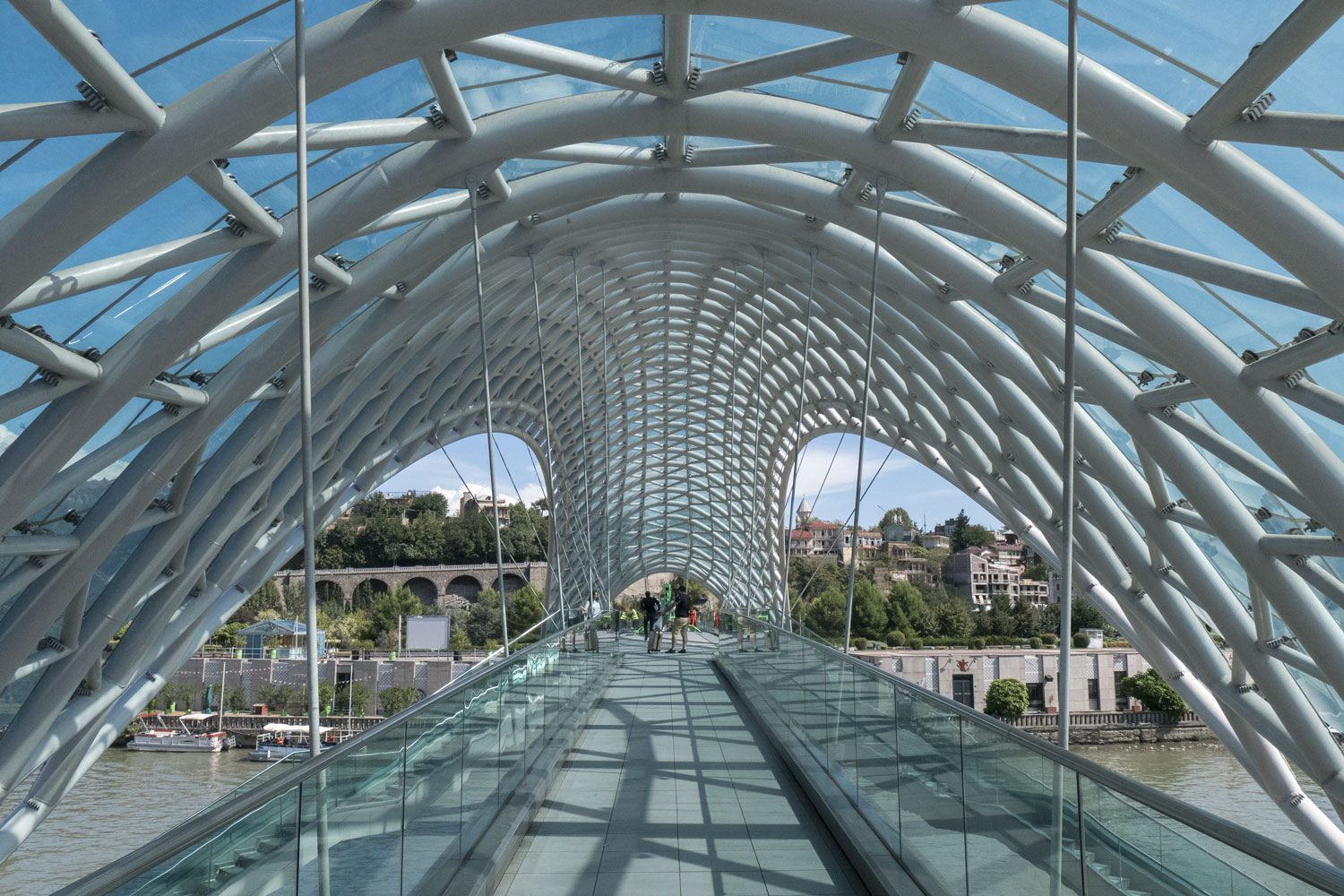
Just beyond the bridge is Riké Park. It was also opened in 2010, and also at the initiative of Saakashvili. Previously, there was a rural settlement on this site, a local ghetto that was often flooded with water from the river, and when the water receded, the entire bank was covered in silt and sand. Hence the name of the district “Riké”. In Georgian, it means “sands”.
The park is absolutely beautiful.
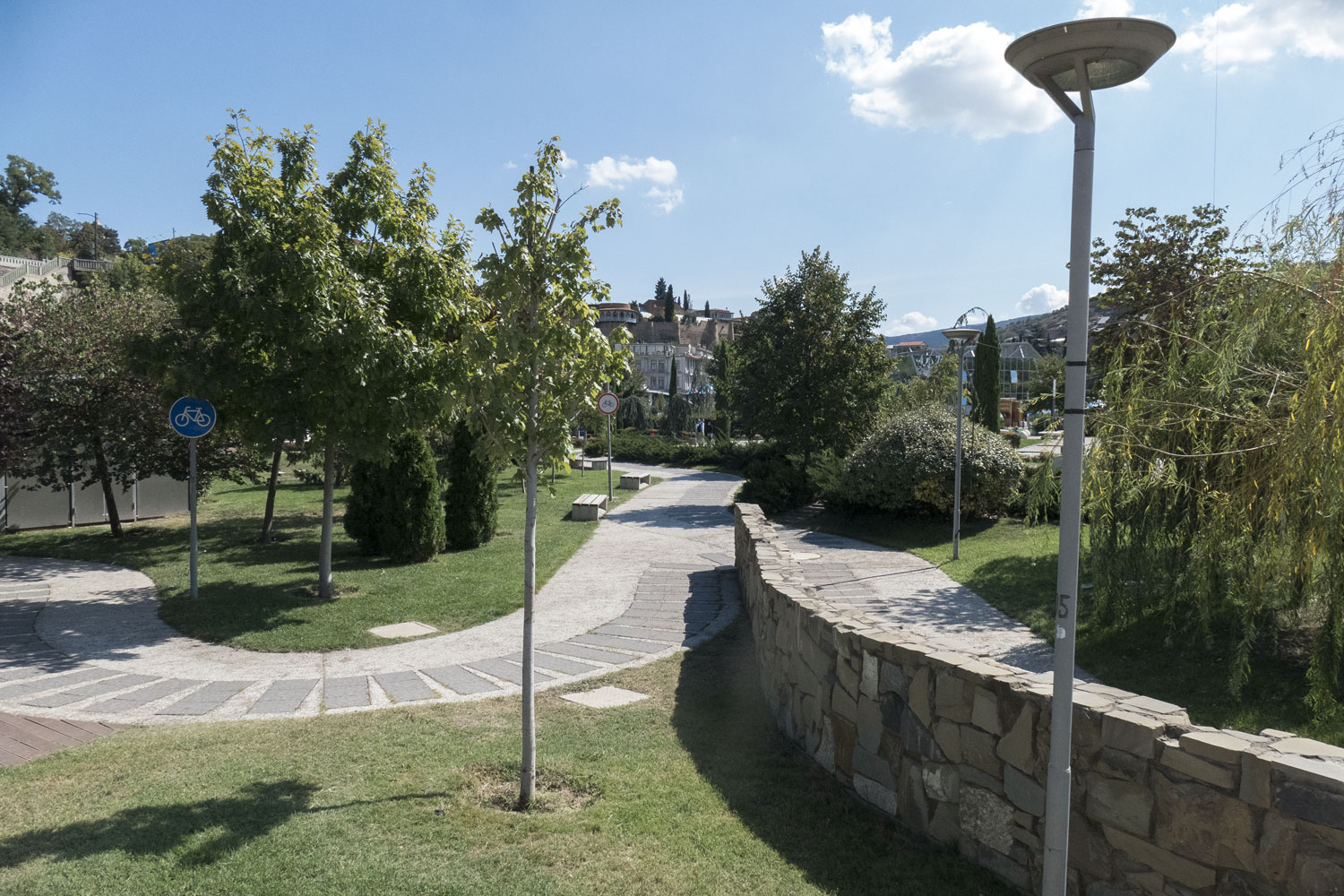
A grand piano is hidden in the bushes.
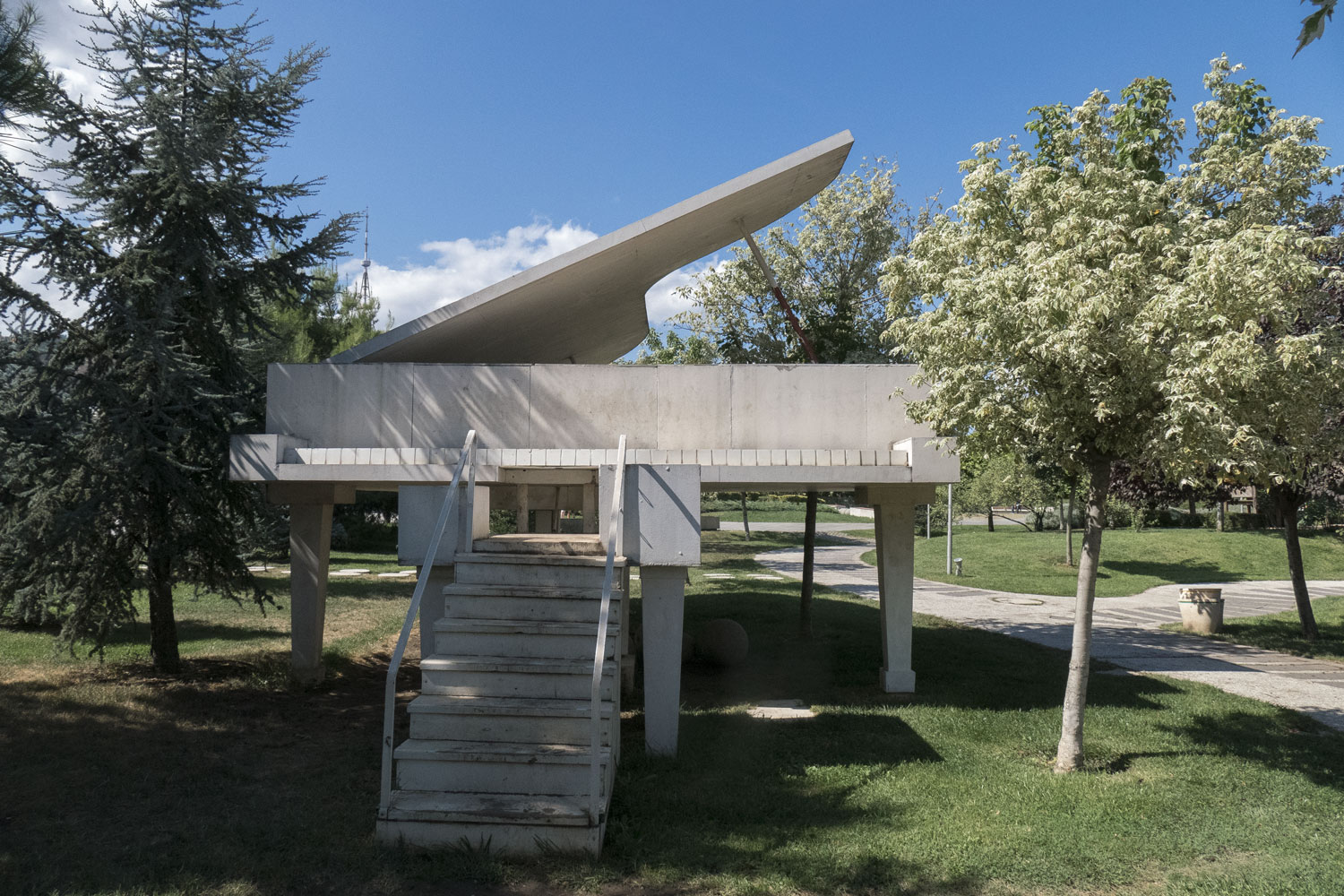
A huge glass tube in the midst of trees is an unfinished cultural center.
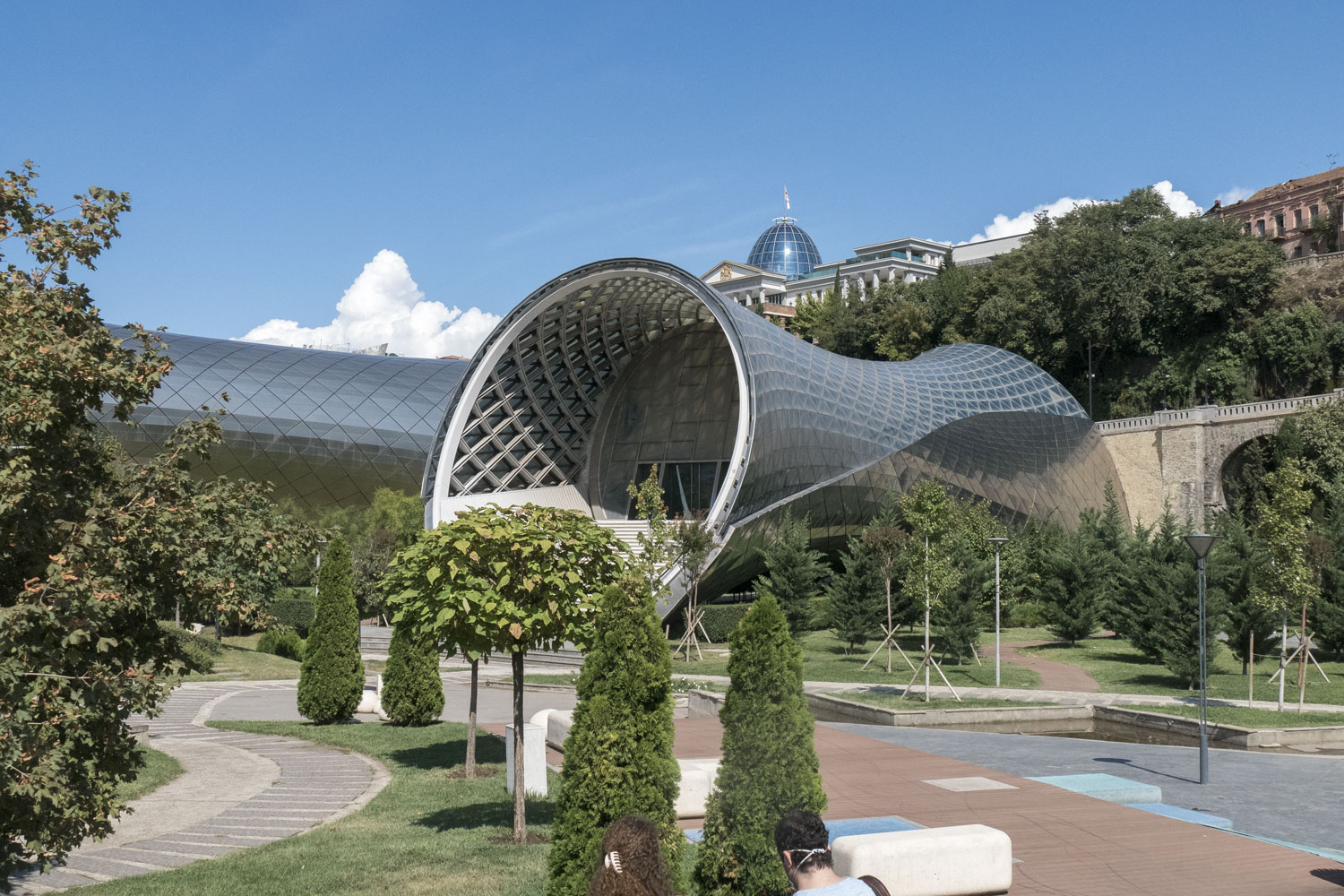
In 2013, a political crisis began in Georgia. Saakashvili fled the country before the end of his presidential term. At the same time, criminal cases were initiated against all those involved in the development of Georgia, including the builders of Rike Park. The construction of the cultural center was frozen. It has been in this state for eight years now.
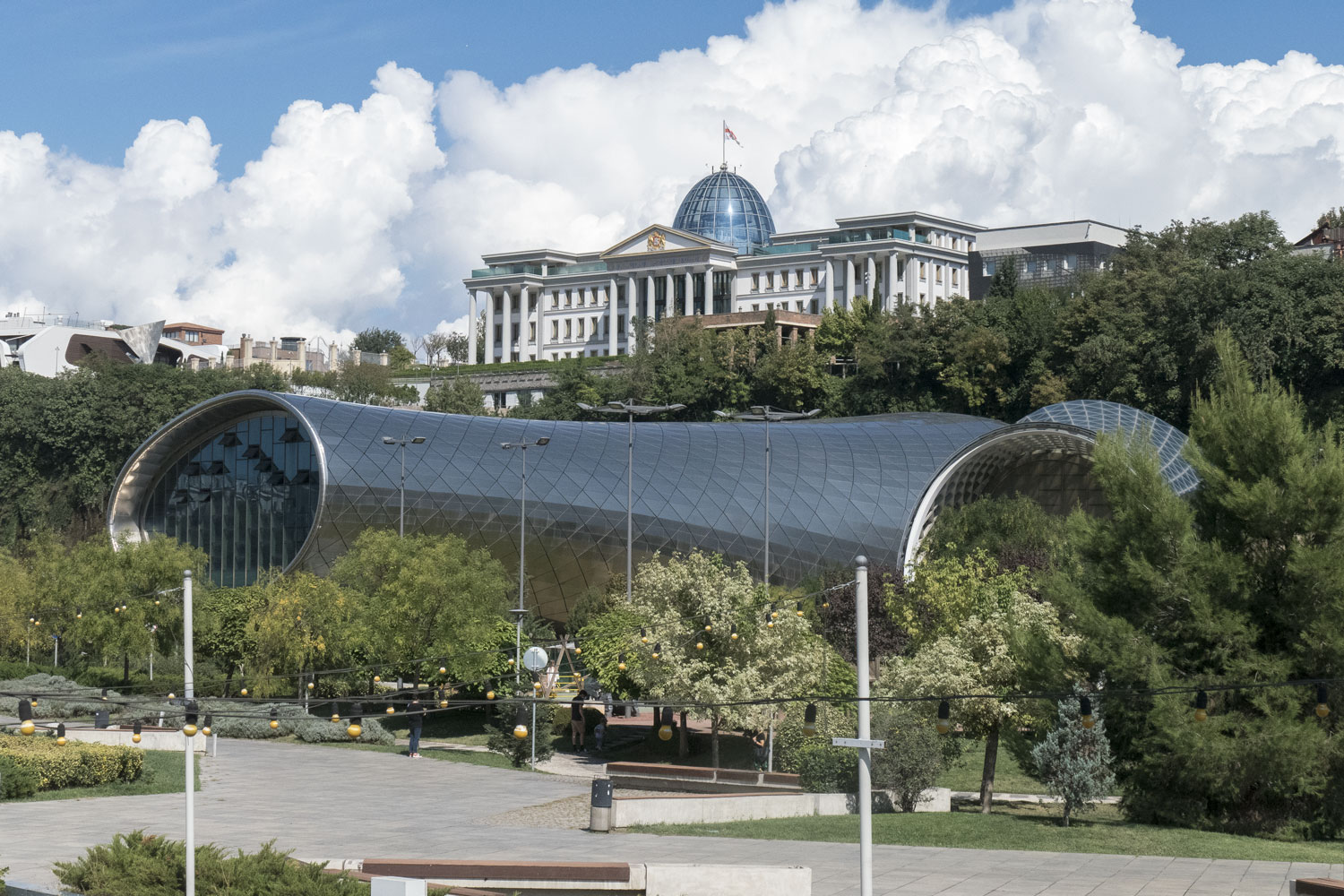
In the park, there is a monument to Ronald Reagan, who was the President of the United States from 1981 to 1989. Reagan made a significant contribution to the victory over the Soviet Union. The Reagan monument was opened by Saakashvili in 2011. At the opening, he delivered a speech:
I subscribe to every word. It is a pity that Saakashvili did not set up a libertarian dictatorship in Georgia, like Lee Kuan Yew in Singapore. The good should be with fists.
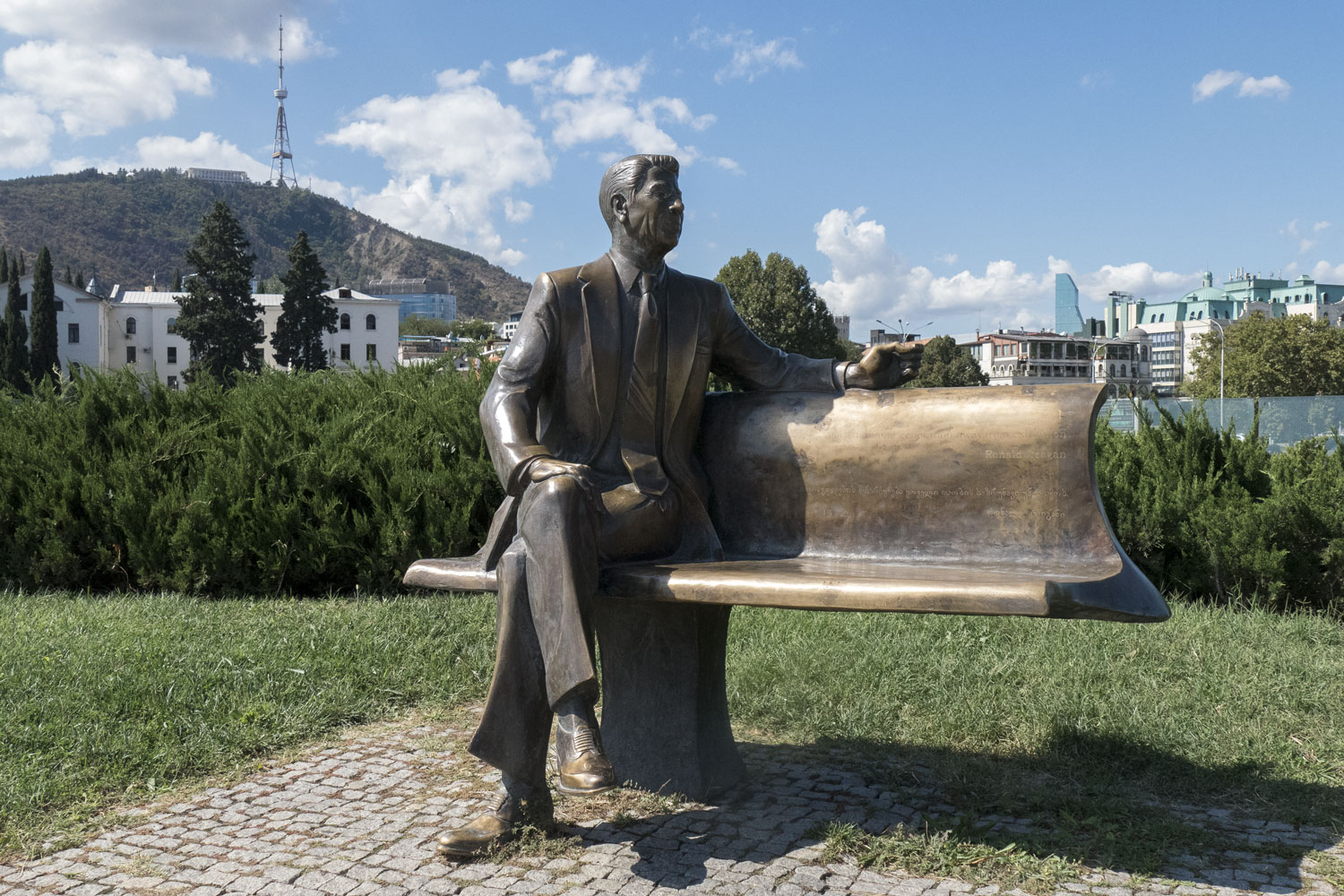
Symbolically, the Reagan monument faces directly towards the Presidential Palace.
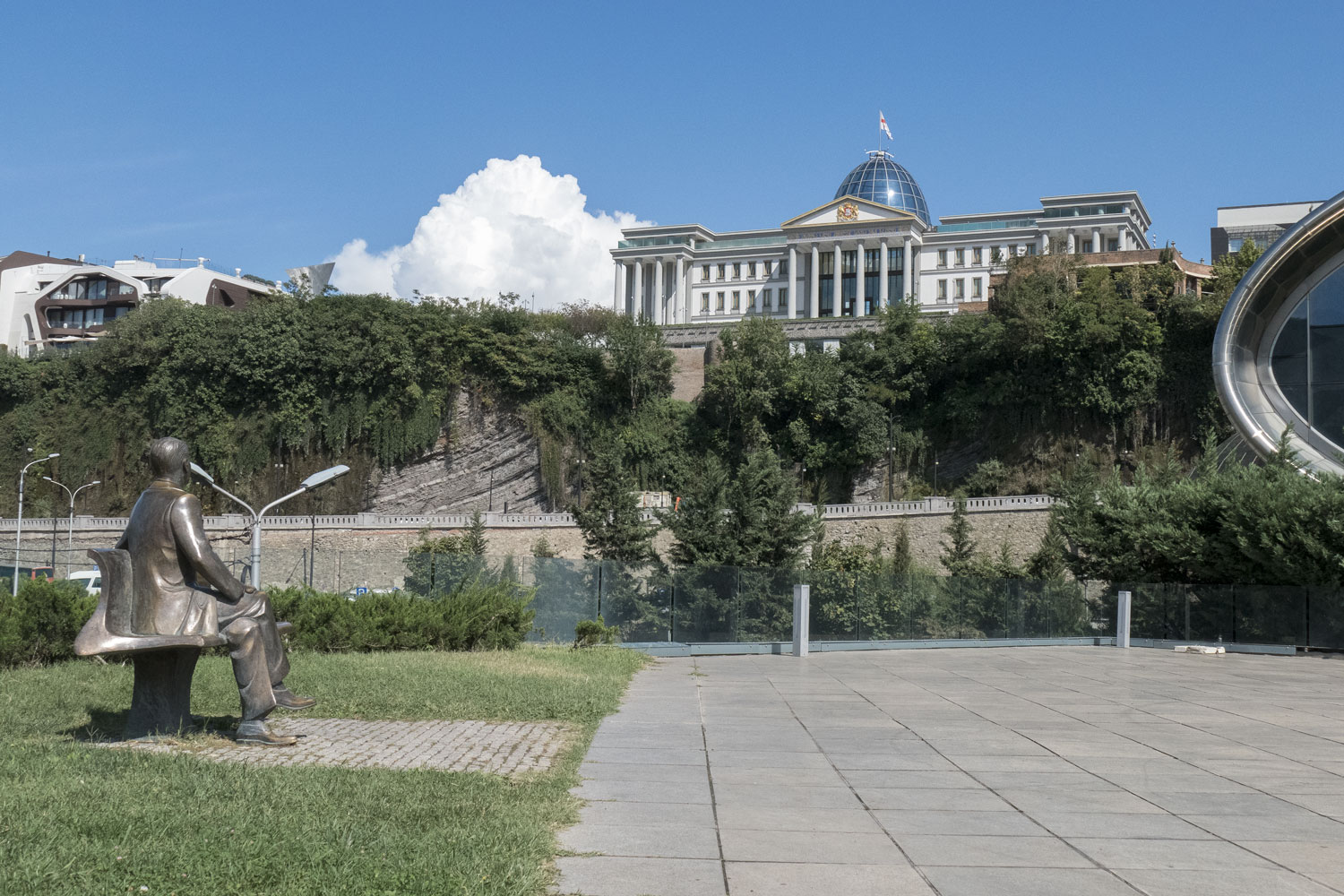
The architect of the Presidential Palace is the same Italian who designed Rike Park. The new President, Zurabishvili, moved the presidential residence to another palace.
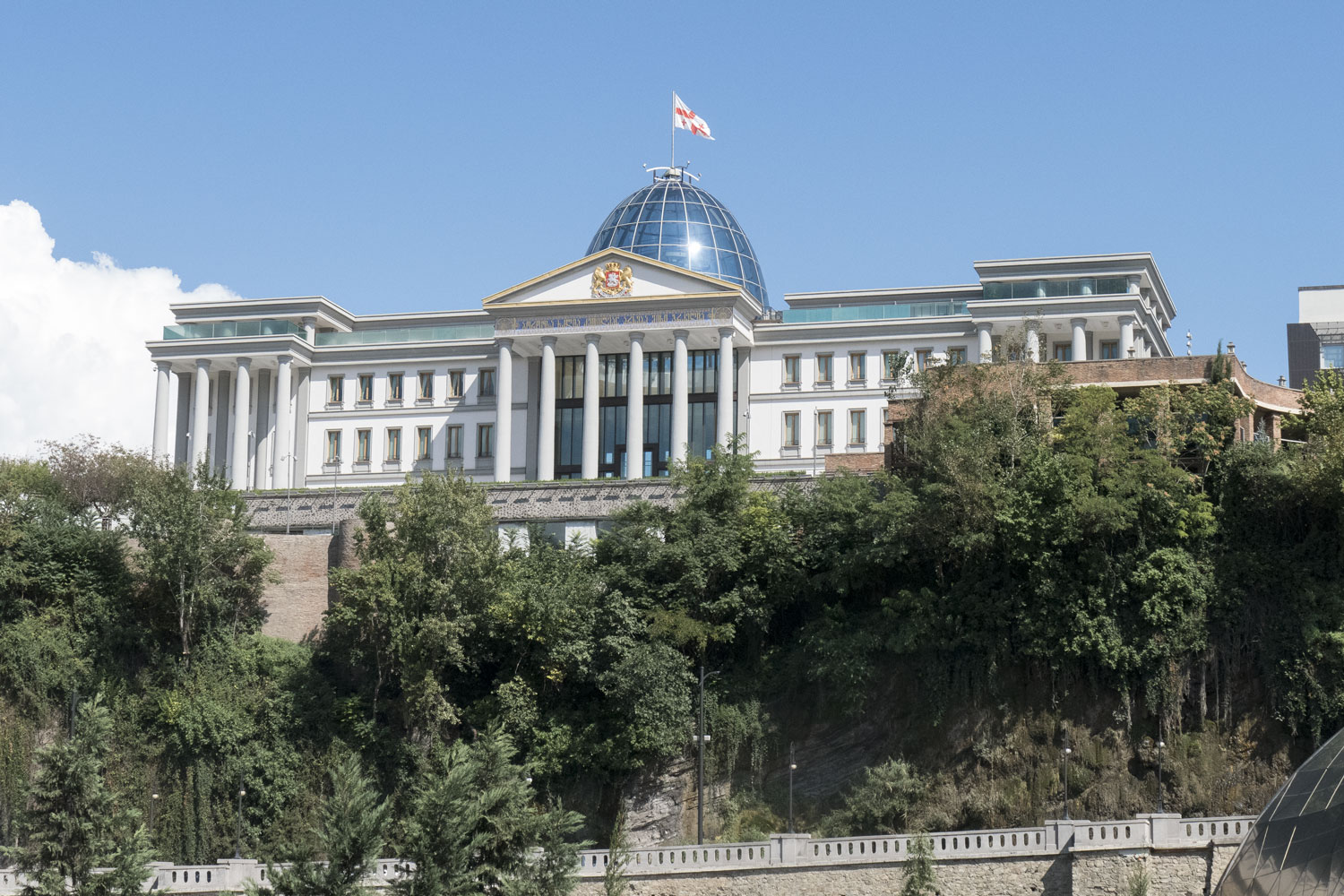
The park ends with a piece of rock on which the eastern part of Tbilisi is located. There is a cascade of restaurants and a row of expensive mansions on the rock.
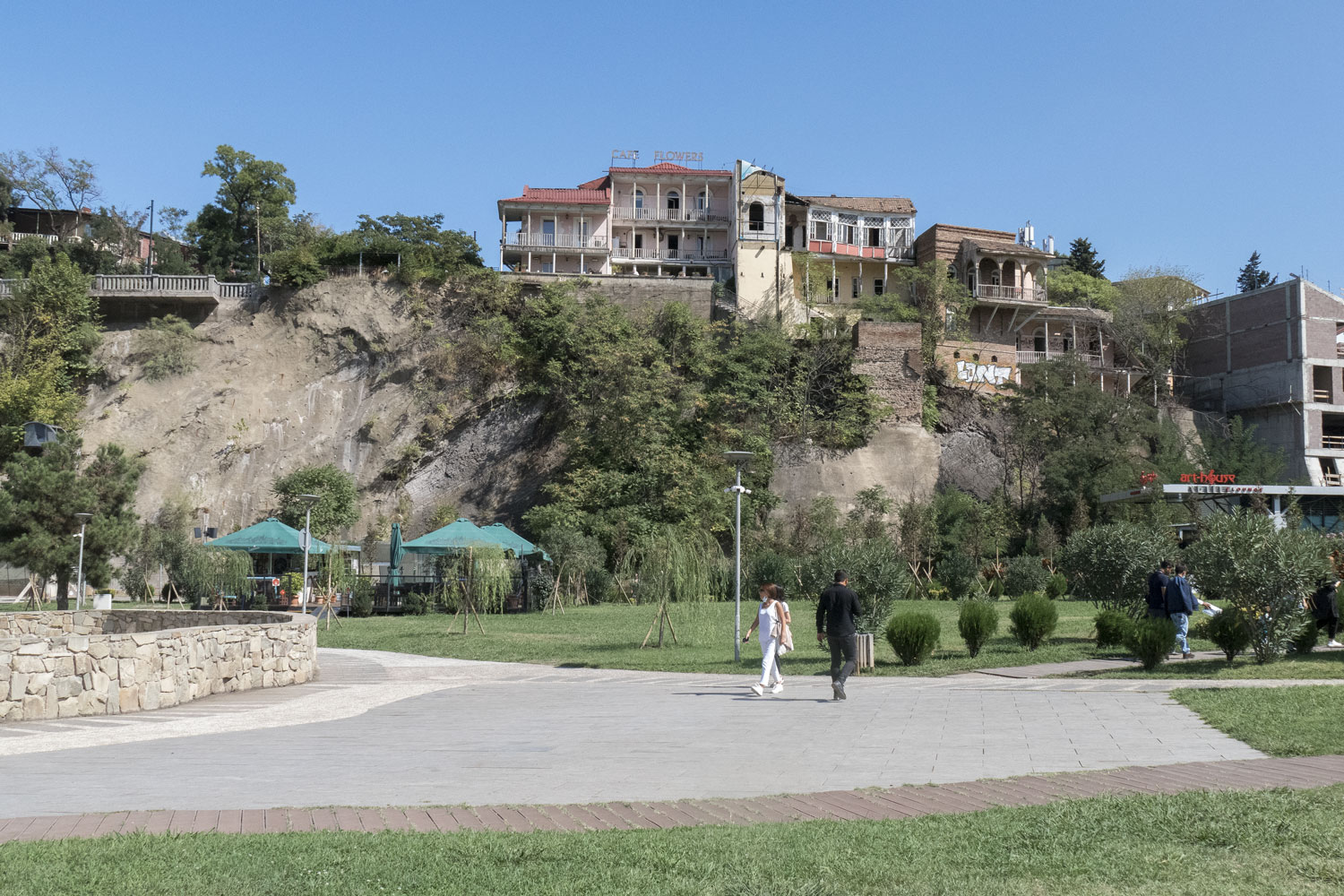
A view of the park from above.
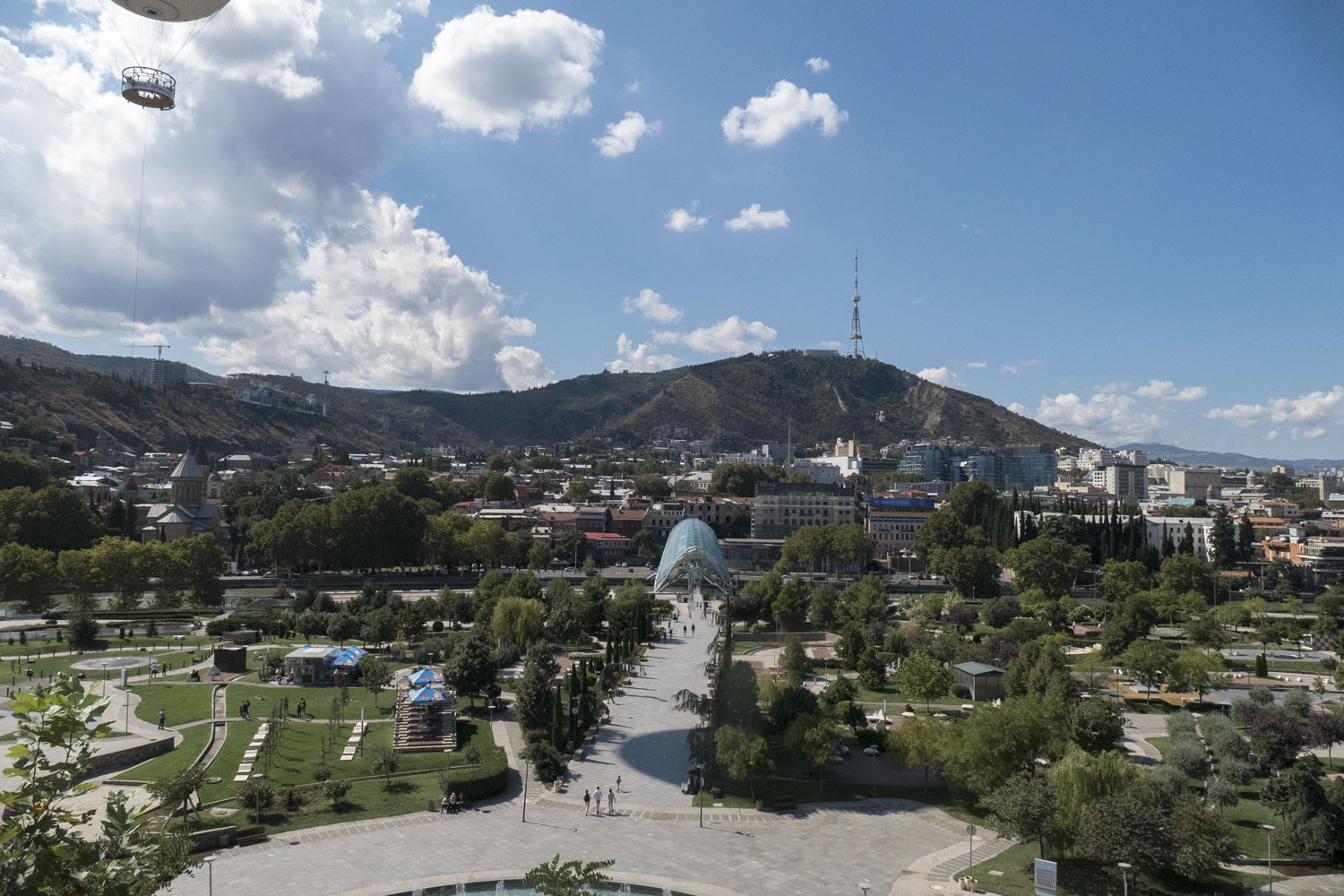
There is not much of interest in the eastern part of Tbilisi. The Presidential Palace cannot be approached as it is fenced off by a high fence. The surrounding area is the relatively poor district of Avlabari.
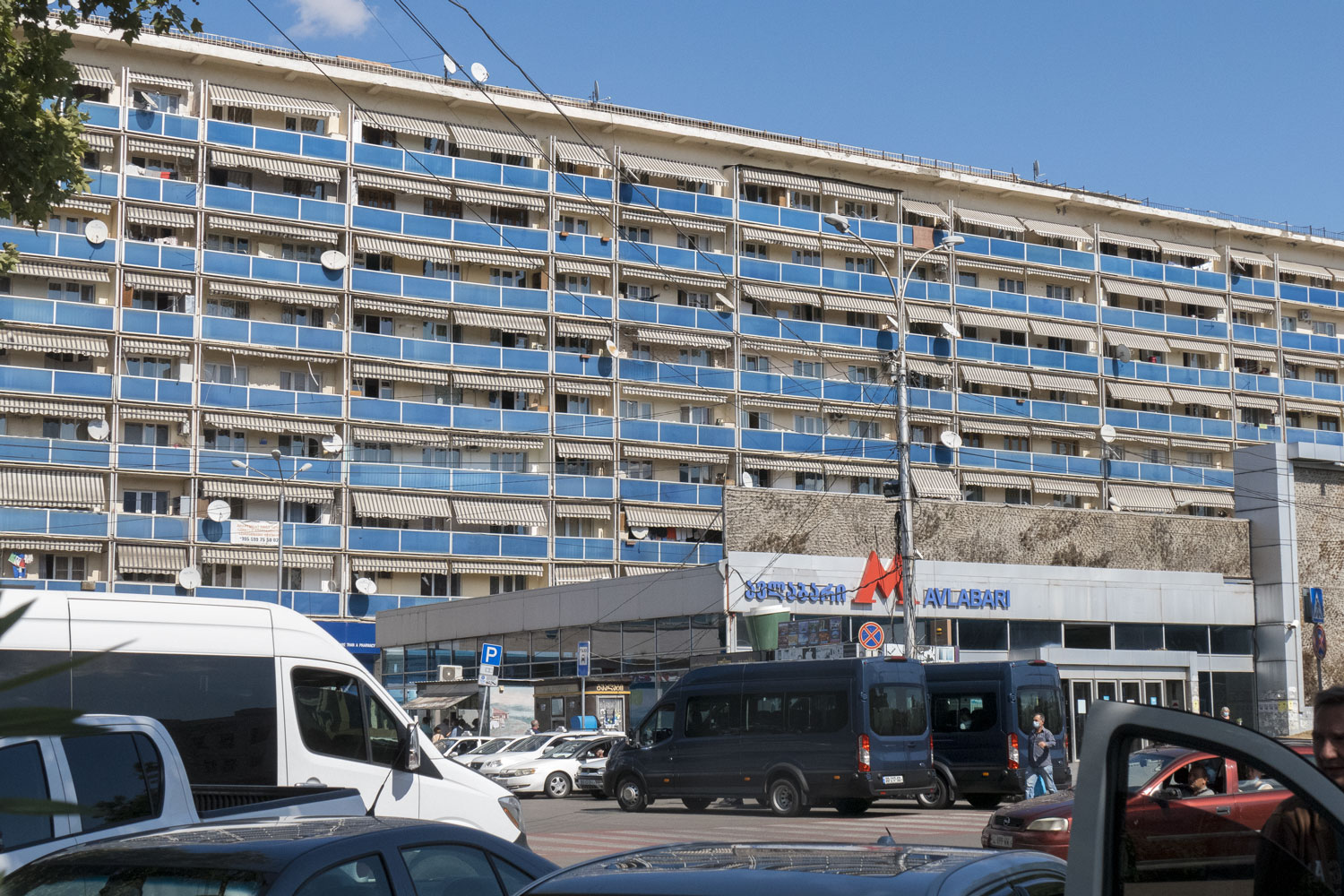
The houses in Alvabari are in terrible condition. Once upon a time I explained to an Englishman who studied Russian the peculiarities of word formation from the Russian root that means “twat”.
“Andrew, what is the difference between ‘twatted’ and ‘go twat?’”
“Alex, how can I explain it to you? You see, there's a house. If it's all shabby, then it's just twatted. And if, imagine, there is a crack a meter wide all over the house, then the house went twat.”
So the houses in Alvabari naturally went twat.
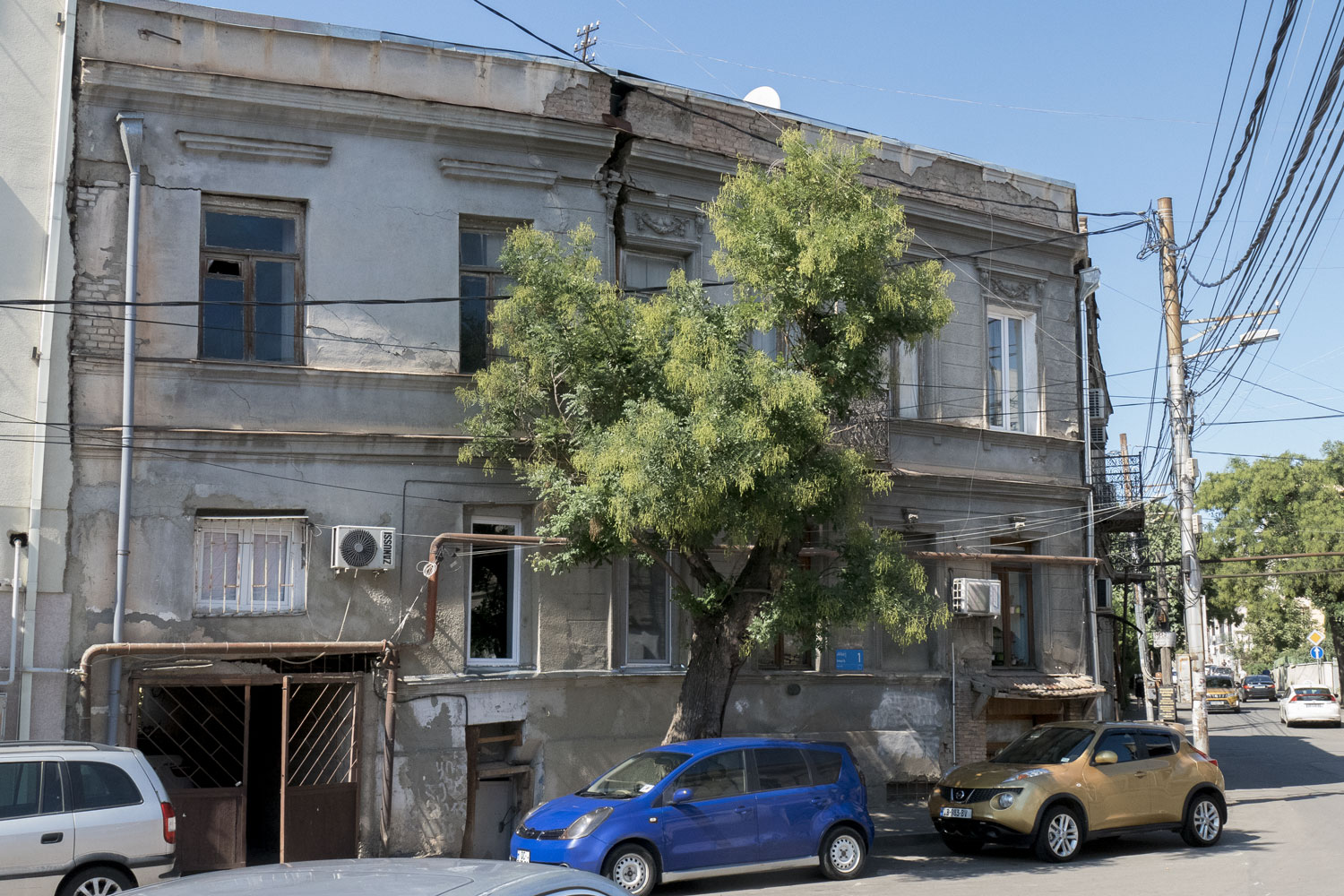
Cracks so severe that pieces may soon begin to fall off.
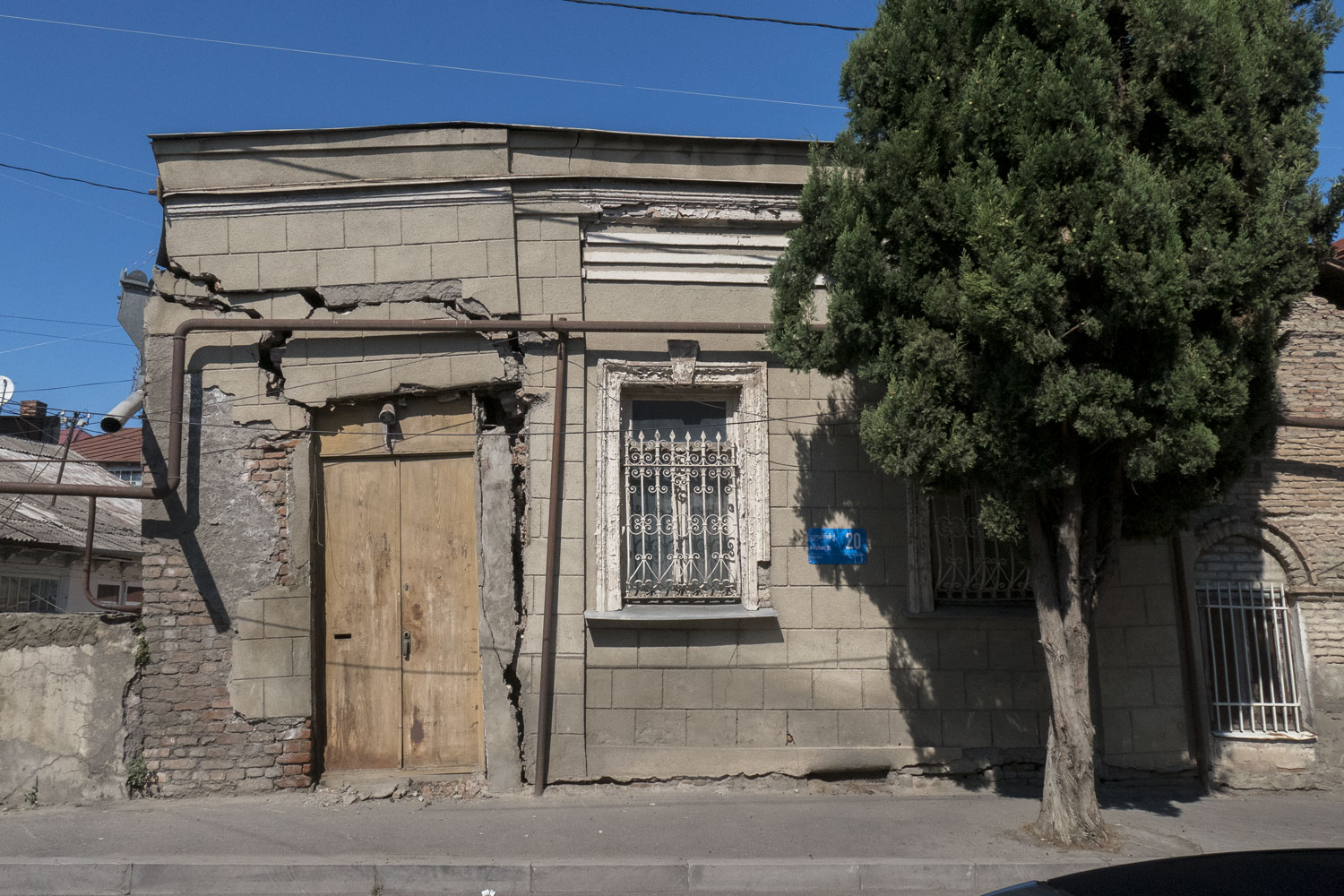
Jesus!
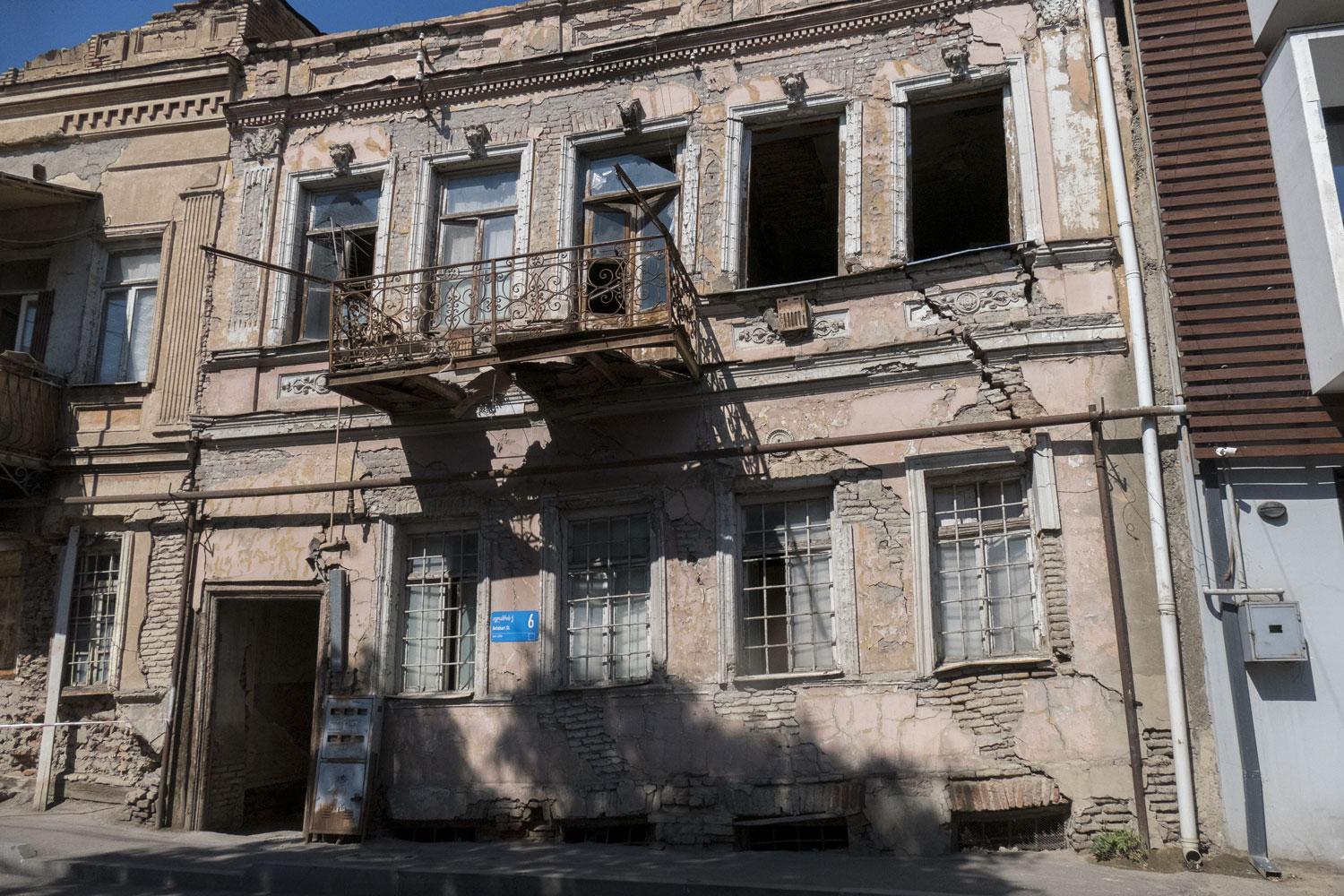
The market tried hard, but did not solve: a criminal case was opened against the invisible hand.
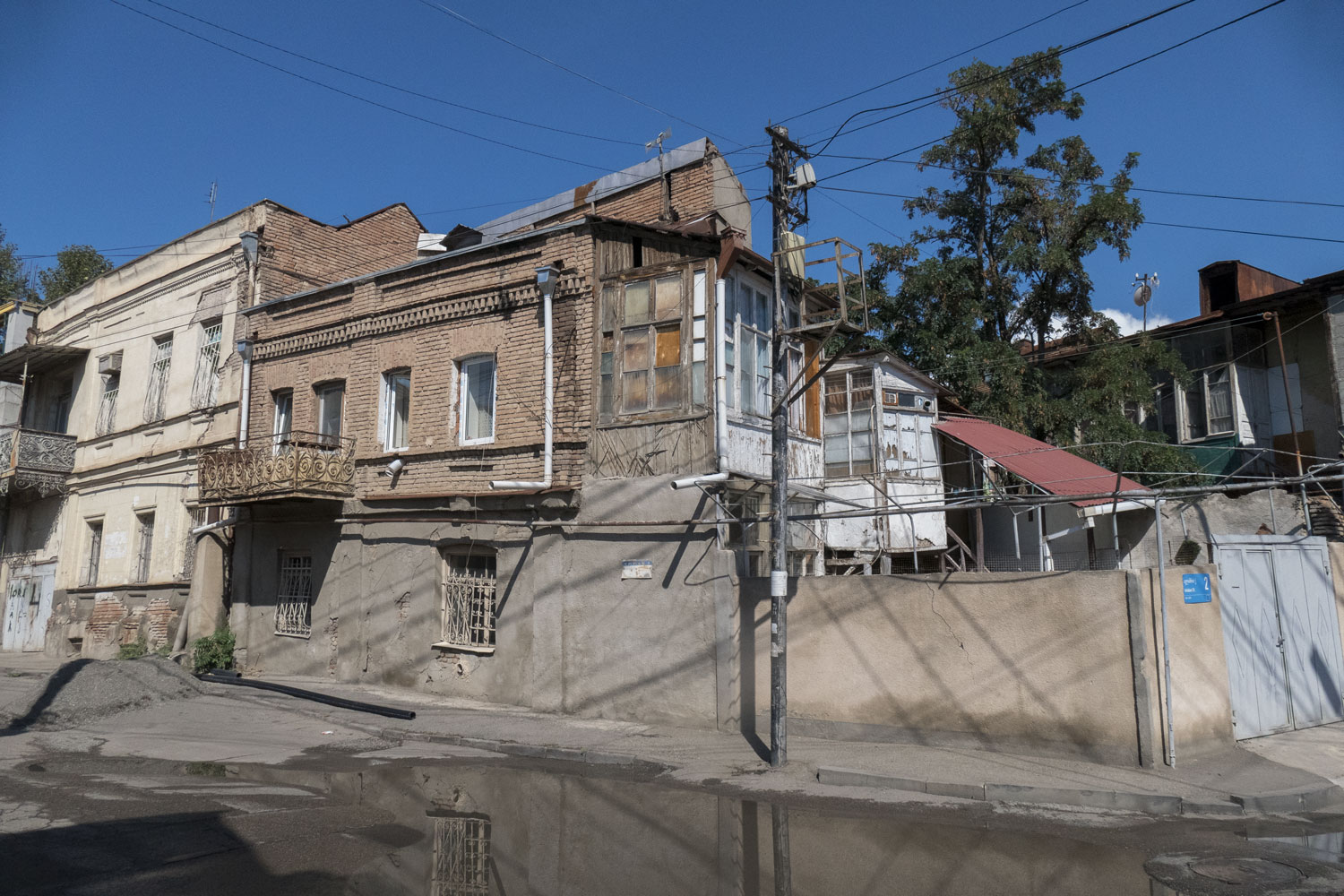
So, among these rundown neighborhoods stands the Presidential Palace. I don’t know if Saakashvili planned to do something about this situation. Perhaps he did. But it looks magnificent. I couldn’t find an angle to capture the palace and the slums in one frame. The fence on the left of the photo is the fence of the palace. On the right are houses with cracks.
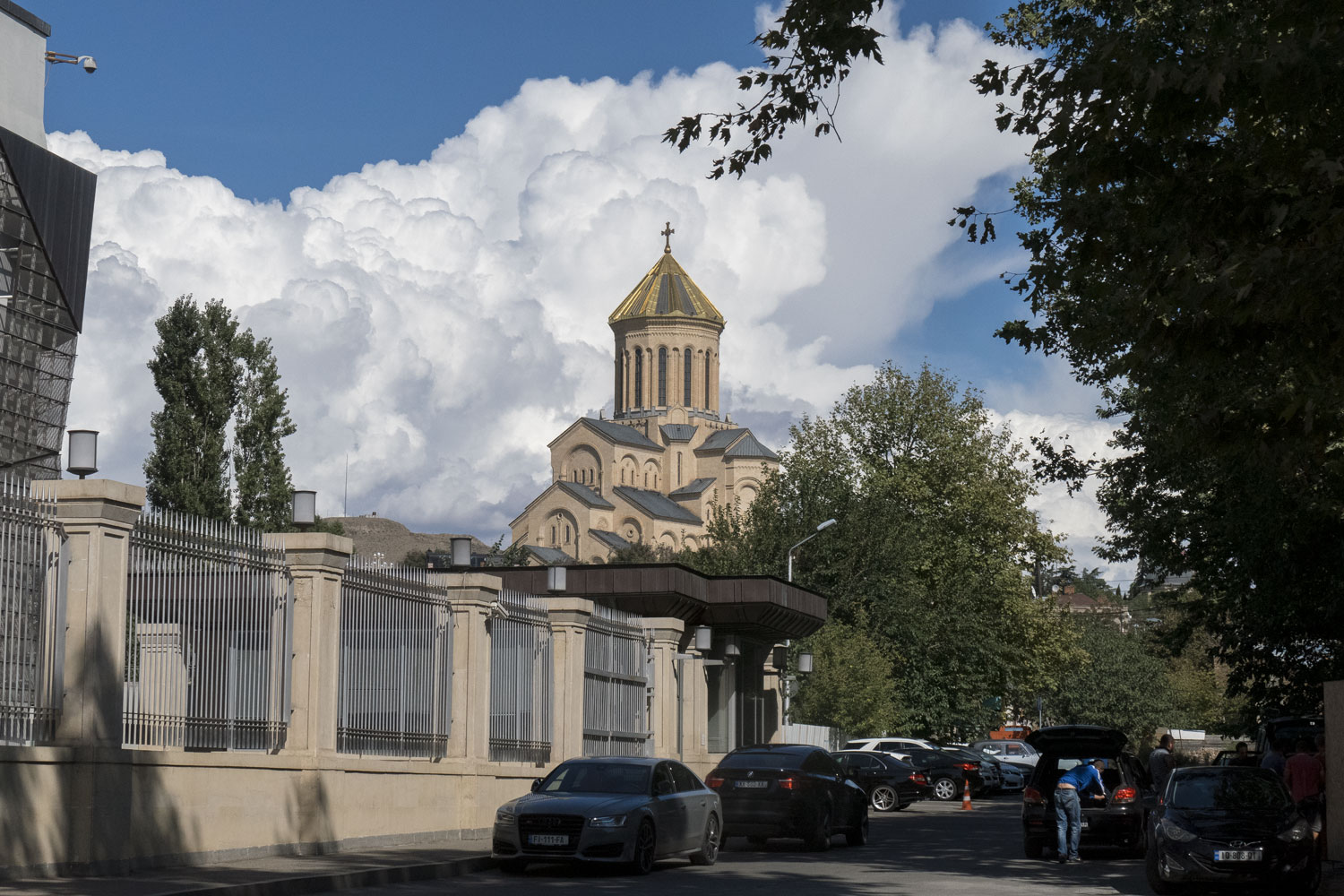
The Cathedral of the Holy Trinity. It is just as tasteless a modern building as the Cathedral of St. George the Illuminator in Yerevan and the Church of Christ the Savior in Moscow.
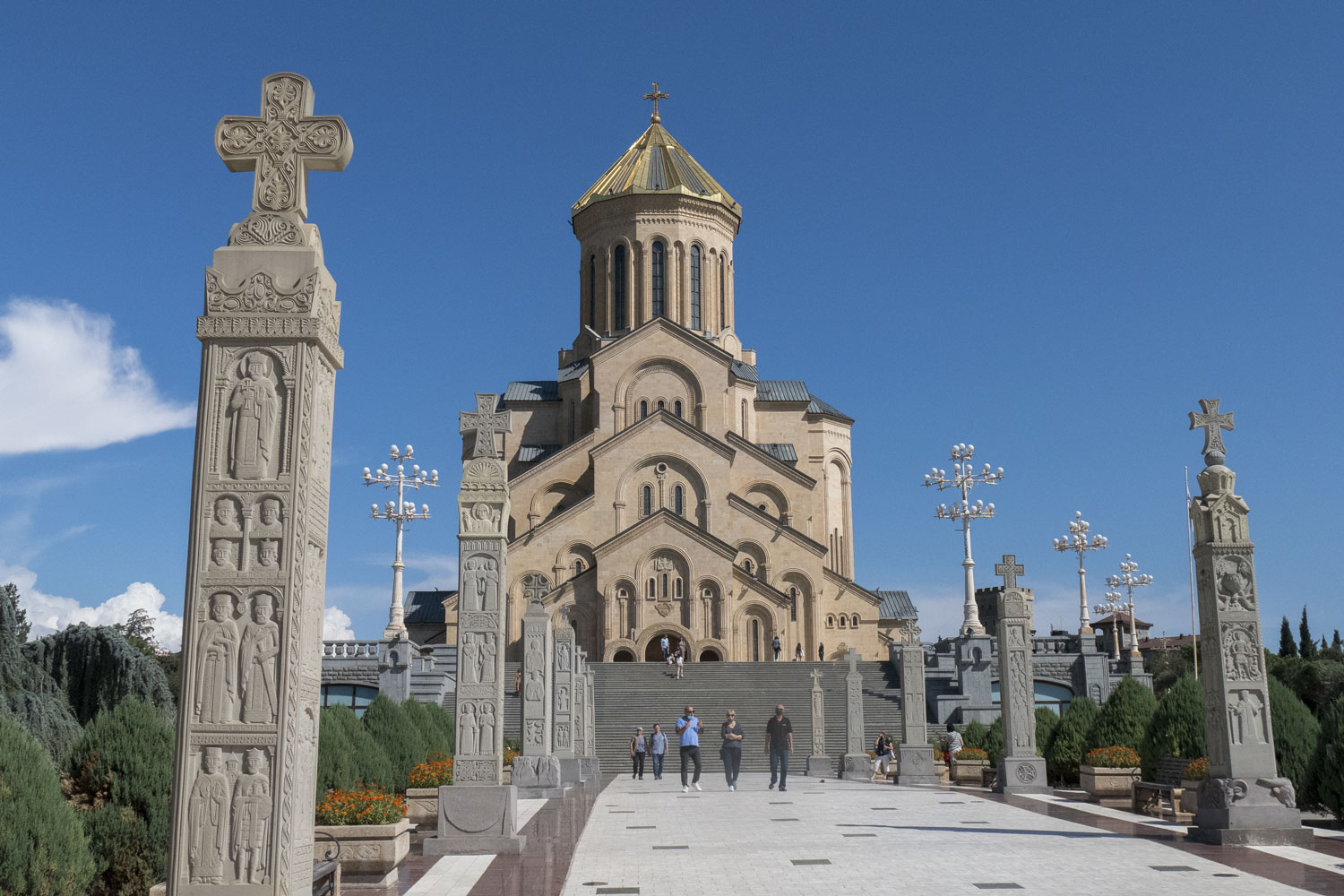
The reader probably wonders: what is that tower on the hill in every other picture?
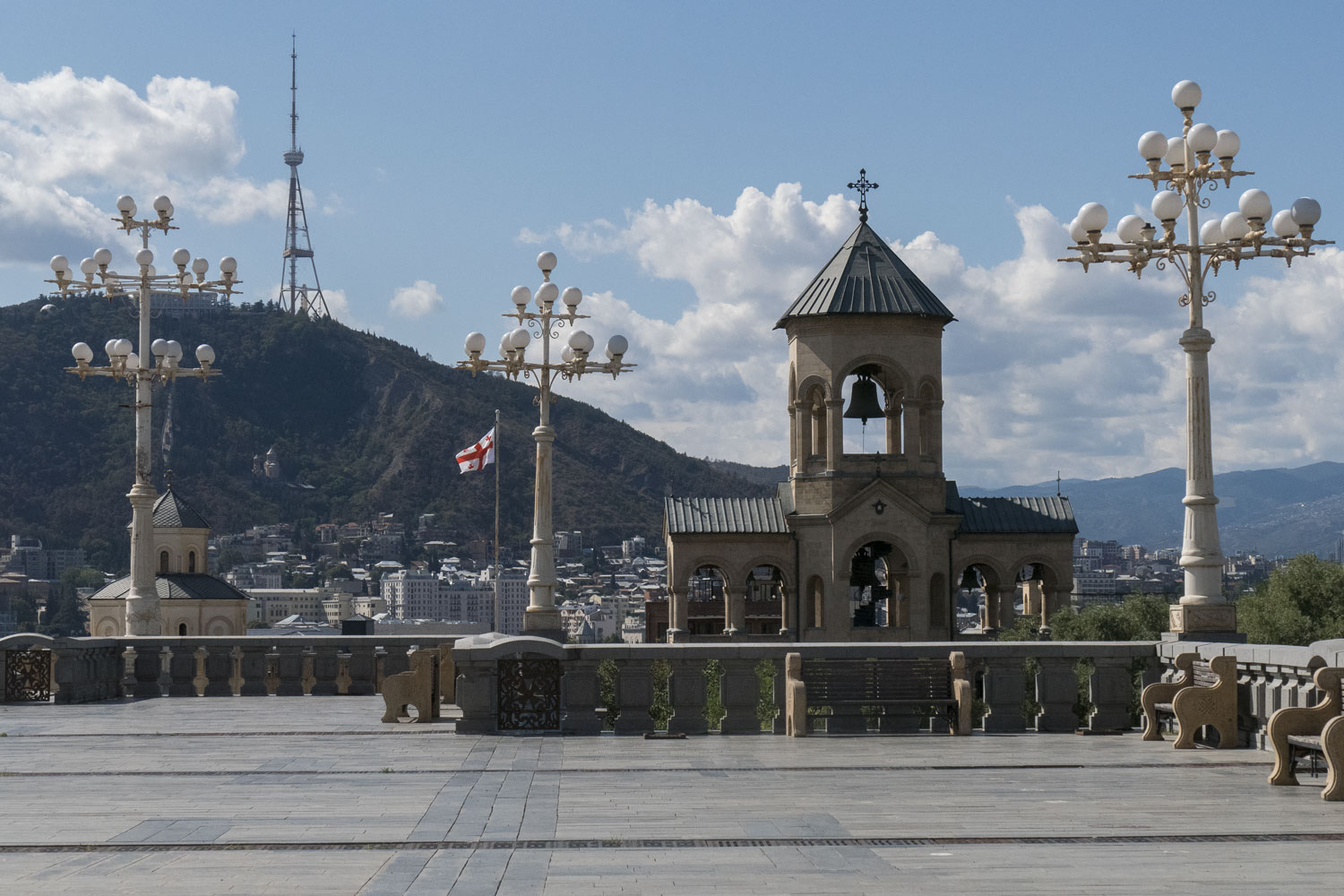
That is the Tbilisi TV tower on Mount Mtatsminda.
To get there, you need to go back to the old city and then go up the hill. The path will be long and difficult.
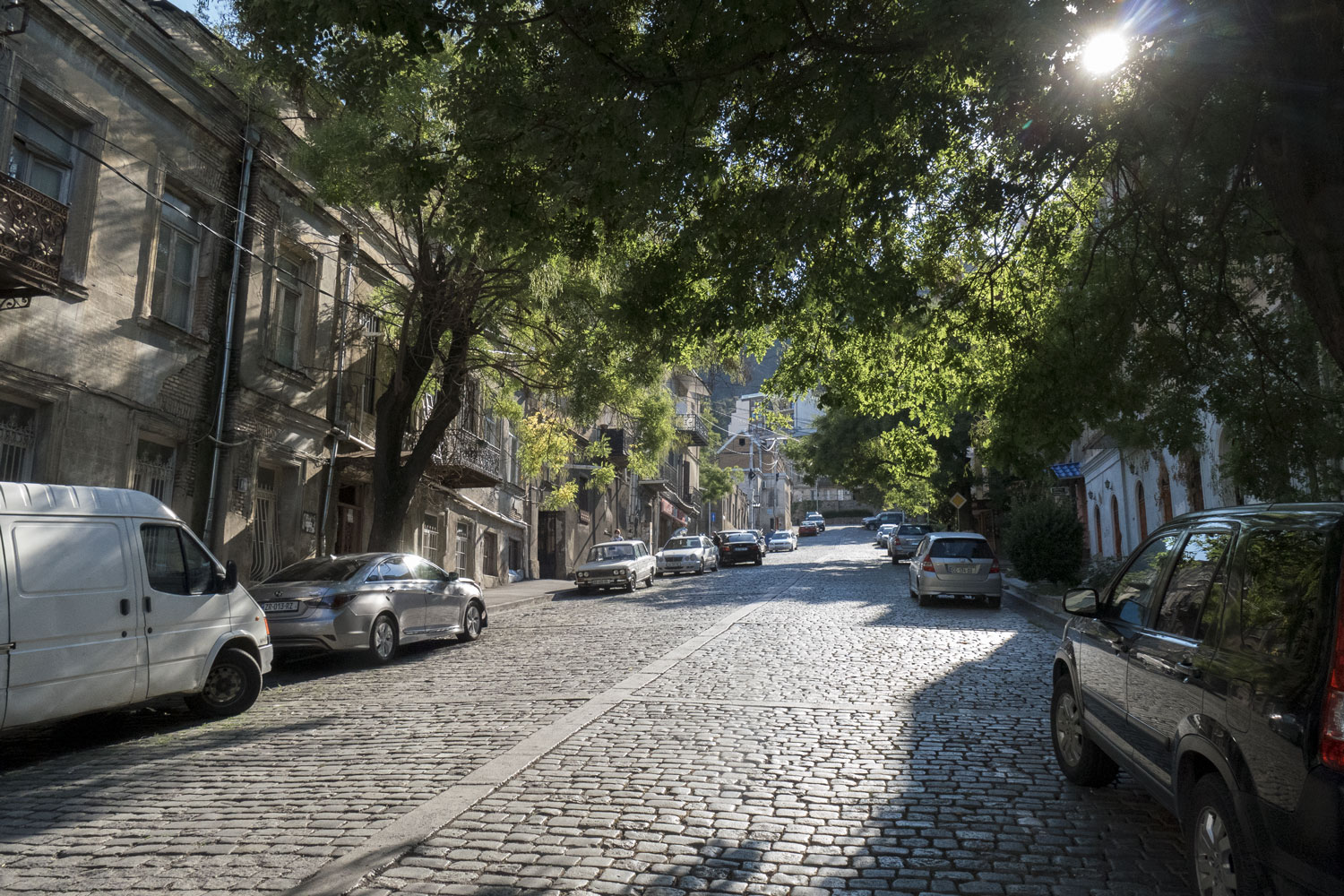
There are also colorful old neighborhoods here, although they are not as old as the ones in the area of Kalak.
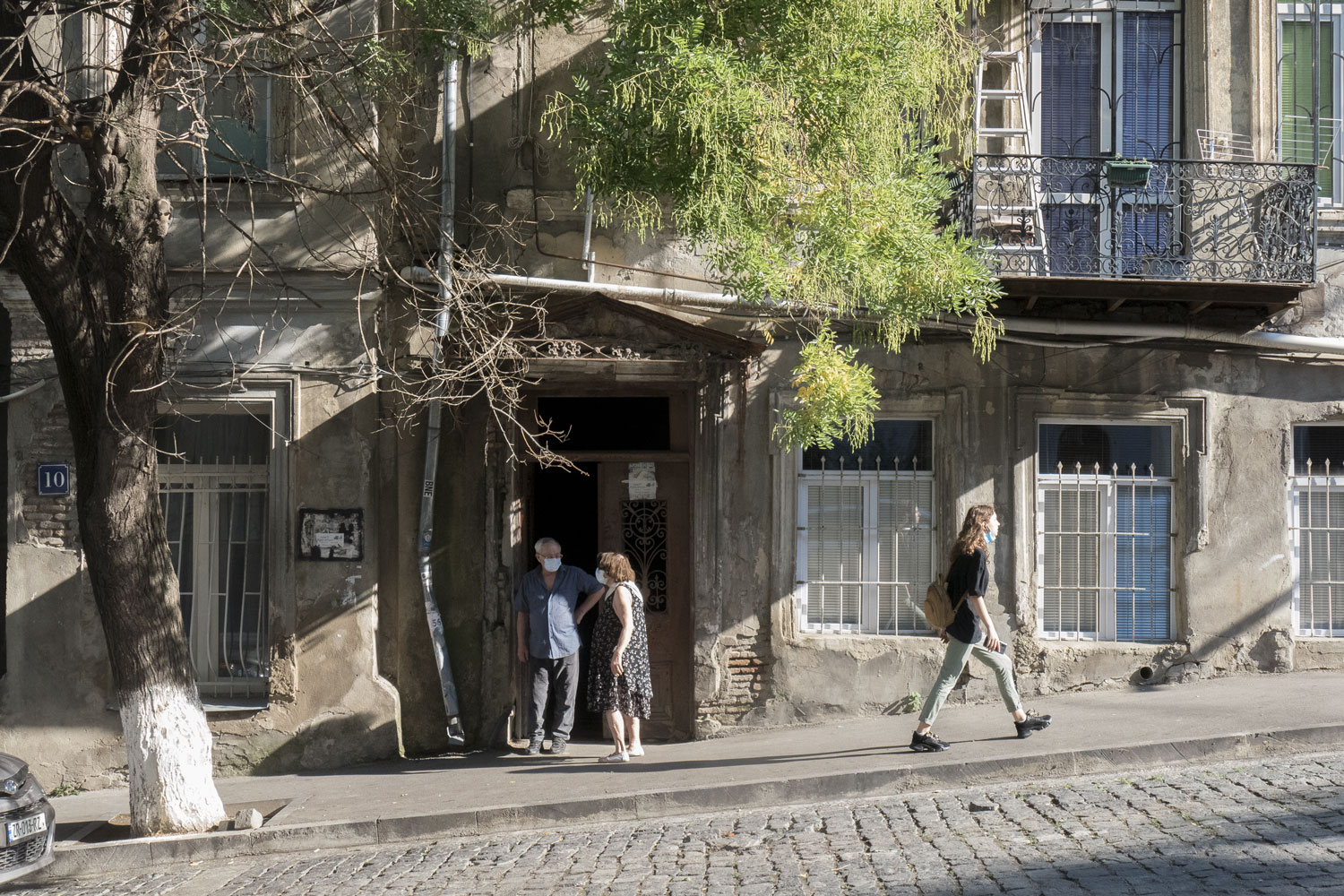
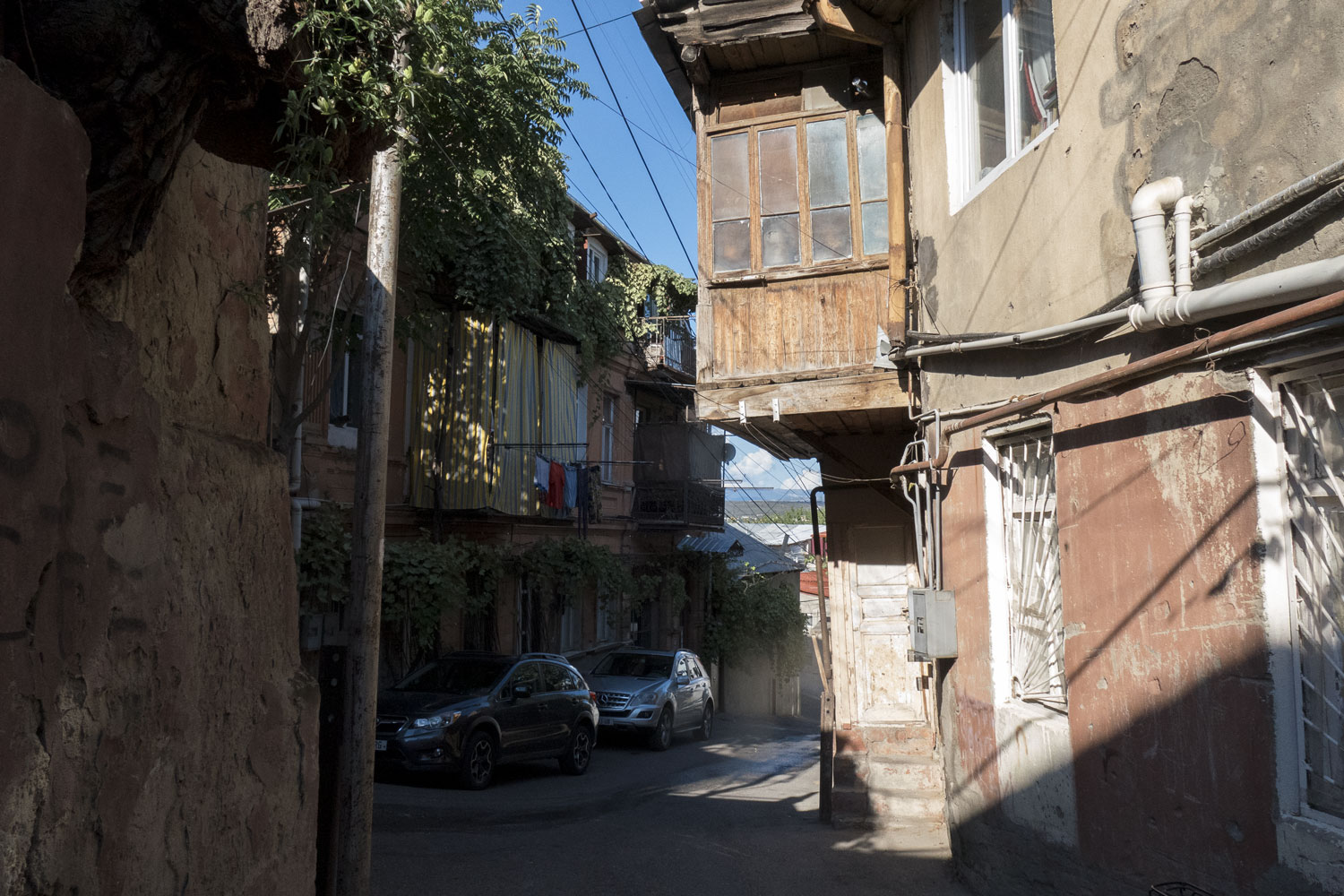
At the very end of the district, residential buildings end and a steep slope begins. In front of the slope is a cable car that can take you to the very top of the mountain.
This is the view of Tbilisi from Mtatsminda. The shadow of the mountain has already covered several neighborhoods.
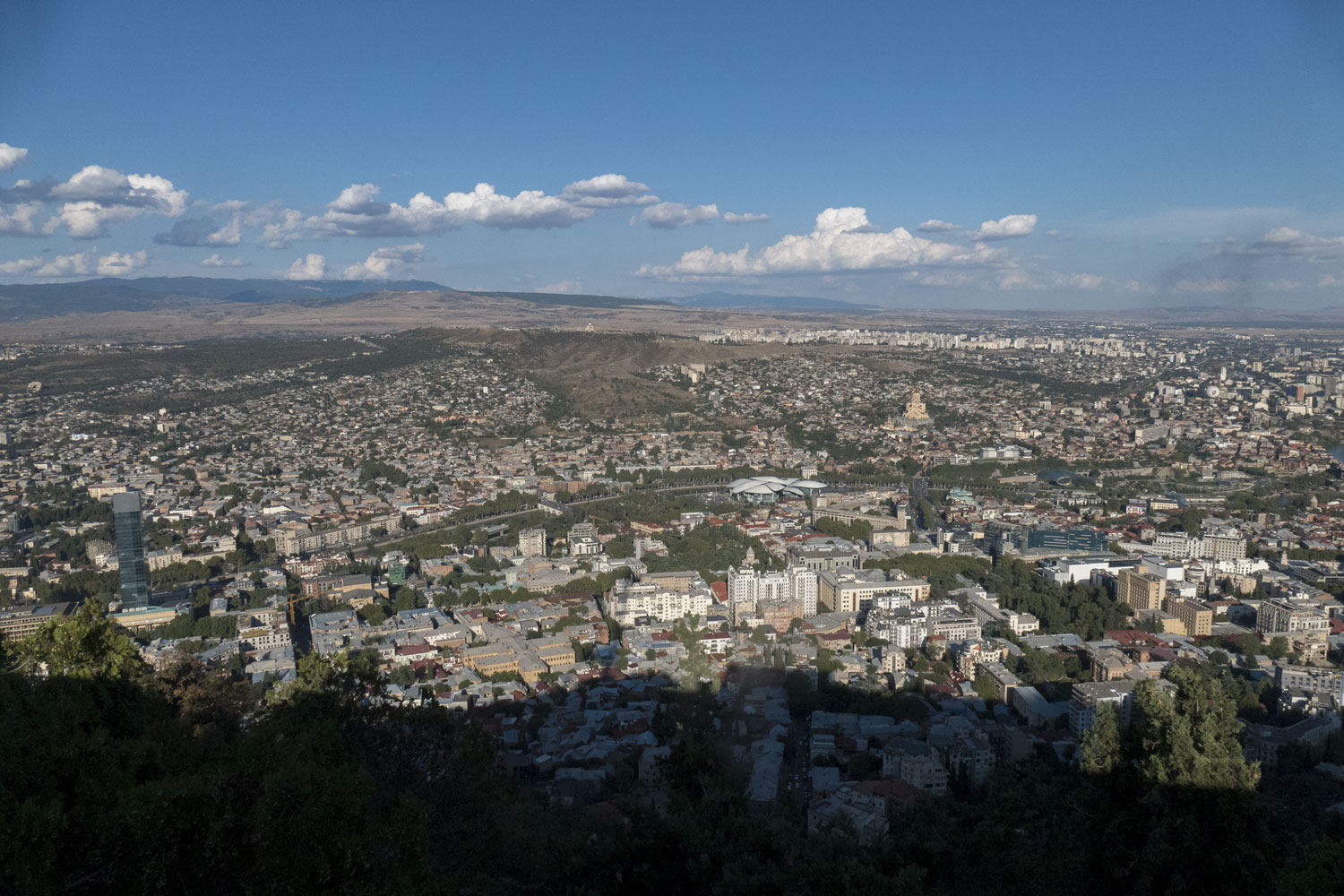
View of the old city. In the distance, you can see the high-rise panel buildings that are slowly surrounding Tbilisi.
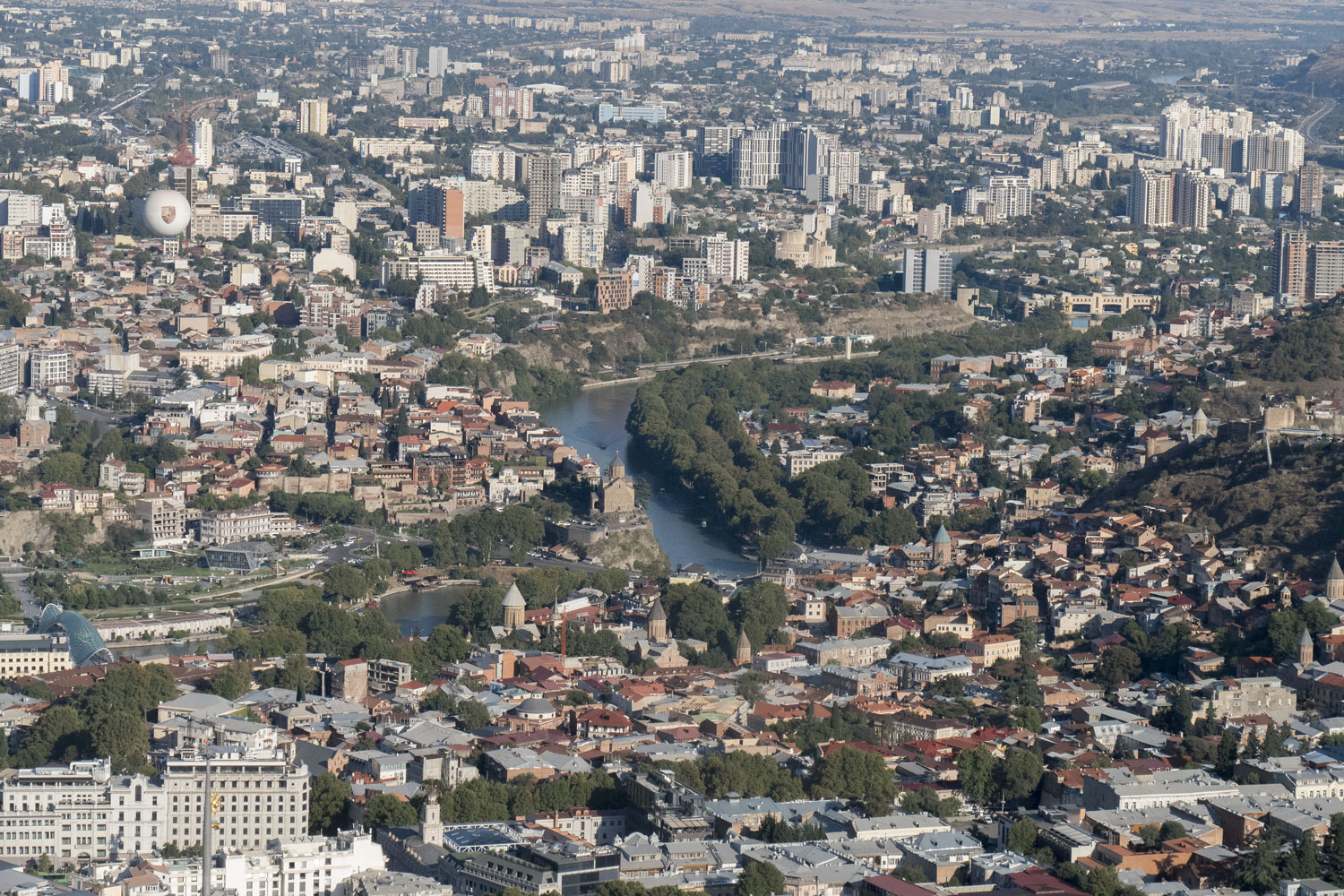
Tower.
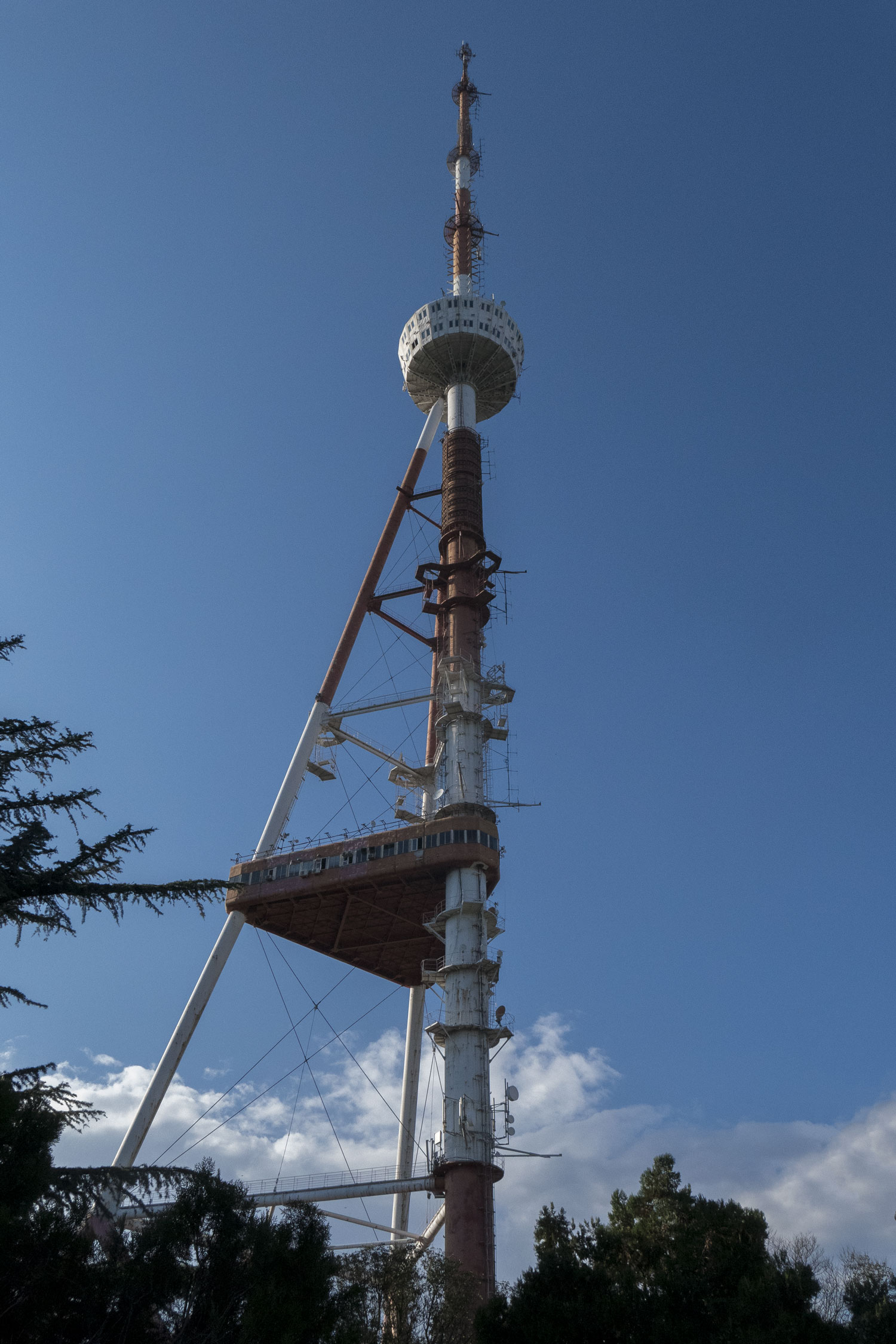
Zoom.
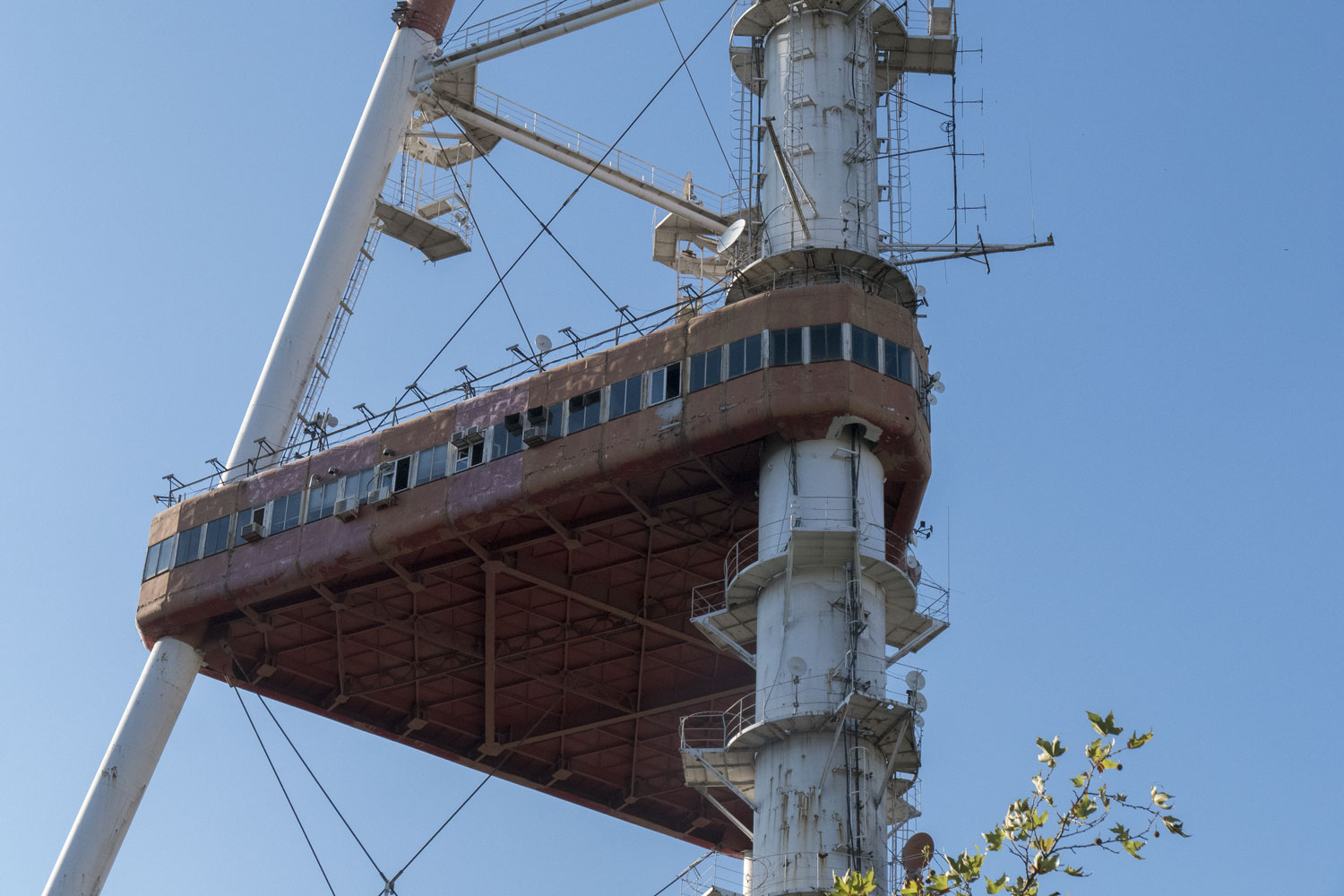
Descending from Mtatsminda, I came across a wine merchant. An elderly vendor was selling his own homemade wine by hand, poured into plastic bottles, sitting on a folding chair and displaying the entire assortment on a small table.
“How much is the wine?”
“Kindzmarauli, Saperavi, Rkatsiteli is 5 lari. Khvanchkara is 15 lari.”
“I’ll take Khvanchkara for 10.”
“Khvanchkara is the best wine. It’s 15 lari.”
“Will you give it for 12?”
“I won’t. Try it, buy it. The best Georgian wine.”
The merchant uncorked the bottle and poured some wine into it. I tried it. Sweet, warm, and rich. It tasted of dried fruits and berries. Even if this man had poured store-bought wine into the bottles, it was excellent, and 15 lari is only 350 rubles. Not bad for half a liter of homemade Georgian wine, which costs around two thousand in Moscow.
On my way to the hotel, I stopped by a store and bought Borjomi. A bottle that costs around 100 rubles in Moscow costs only 15 rubles in Tbilisi. In the first café I came across, I ordered a khachapuri to go. It cost 400 rubles, but it was so huge that I couldn’t finish it all evening. Of course, I didn’t want to walk with such a load, so I had to call a taxi. I managed to get from one end of the city to the other for 50 rubles.
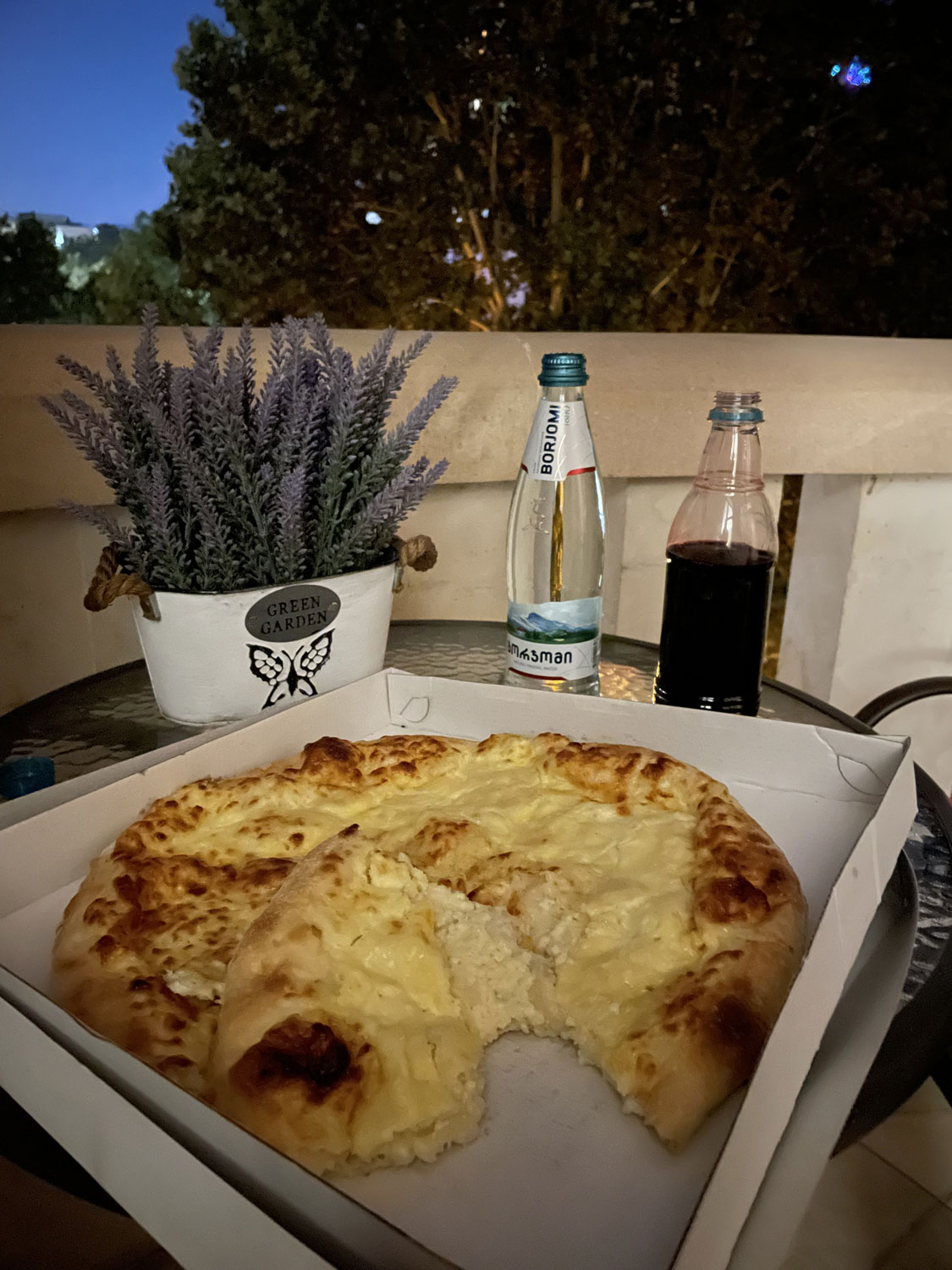
Yes, Tbilisi is not Yerevan. Delicious food is everywhere here. The city is bursting with cafes, restaurants, eateries, street stalls with wine and chacha, and friendly Georgian merchants.
All evening I sat on the balcony of the hotel sipping wine or Borjomi and trying to finish the last bites of khachapuri. The wonderful summer breeze caressed my face, and the wine melted my thoughts. After the third glass, a smile appeared on its own, my gaze lost focus, and I stared at a poster written in Georgian that was glowing below.
An hour later, the wine was finished, the Borjomi had spilled on the floor, and the khachapuri was tearing my stomach apart. All evening long, I couldn’t understand why I wasn’t living in Tbilisi.


